Motorola Solutions 89FT5793 Hand Held Transmitter User Manual i1000 A
Motorola Solutions, Inc. Hand Held Transmitter i1000 A
Contents
- 1. Instruction manual
- 2. Amended Users Manual
Instruction manual

0
D R A F T
MotorolaTM
iDEN®
Digital Multi-Service Wearable Phone
i1000-A User’s Guide
Draft #1A
(To translation)
December 18, 1998

i1000-A User’s Guide i
CONTENTS
About Your 1000-A . . . . . . . . . . . . . . . . . . . . . . . . . . . . . 1
Buttons, Keys, and Other Controls . . . . . . . . . . . . . . . . . . . . . . . . .2
Keypad Operation . . . . . . . . . . . . . . . . . . . . . . . . . . . . . . . . . . . . . 4
Battery . . . . . . . . . . . . . . . . . . . . . . . . . . . . . . . . . . . . . . . . . . . . . . 7
Turning On Your i1000-A . . . . . . . . . . . . . . . . . . . . . . . . . . . . . . . 7
Display Icons . . . . . . . . . . . . . . . . . . . . . . . . . . . . . . . . . . . . . . . . . 9
Using Your Phone with Your Computer . . . . . . . . . . . 10
Special Features . . . . . . . . . . . . . . . . . . . . . . . . . . . . . . . 11
Hands-Free Speakerphone . . . . . . . . . . . . . . . . . . . . . . . . . . . . . . 11
Private/Group Mode Speaker . . . . . . . . . . . . . . . . . . . . . . . . . . . .12
VibraCall™ . . . . . . . . . . . . . . . . . . . . . . . . . . . . . . . . . . . . . . . . . 12
Selecting VibraCall for All Incoming Calls and Messages . 13
Selecting VibraCall for Specific Phone or Mail Services . . . 13
Call Alert™ . . . . . . . . . . . . . . . . . . . . . . . . . . . . . . . . . . . . . . . . . 14
Sending a Call Alert . . . . . . . . . . . . . . . . . . . . . . . . . . . . . . . 14
Receiving a Call Alert . . . . . . . . . . . . . . . . . . . . . . . . . . . . . . 14
Call Alert Stacking . . . . . . . . . . . . . . . . . . . . . . . . . . . . . . . . 15
Phone Only Mode . . . . . . . . . . . . . . . . . . . . . . . . . . . . . . . . . . . . . 15
Setting the Time and Date . . . . . . . . . . . . . . . . . . . . . . . . . . . . . . 17
Changing the Display Language . . . . . . . . . . . . . . . . . . . . . . . . . 19
Creating and Using Stored Lists . . . . . . . . . . . . . . . . . . . . . . . . . . 20
Combined Phone and Private ID List . . . . . . . . . . . . . . . . . .20
Naming and Storing a Talkgroup . . . . . . . . . . . . . . . . . . . . . 22
Recall Last 10 Calls . . . . . . . . . . . . . . . . . . . . . . . . . . . . . . . 23
Phone Number Quickstore . . . . . . . . . . . . . . . . . . . . . . . . . . 24
Private ID Quickstore . . . . . . . . . . . . . . . . . . . . . . . . . . . . . .25
Turbo Dial . . . . . . . . . . . . . . . . . . . . . . . . . . . . . . . . . . . . . . . 26
Modes and Menus . . . . . . . . . . . . . . . . . . . . . . . . . . . . . 27
Phone Mode . . . . . . . . . . . . . . . . . . . . . . . . . . . . . . . . . . 30
Making a Phone Call . . . . . . . . . . . . . . . . . . . . . . . . . . . . . . . . . .30
Emergency Dial . . . . . . . . . . . . . . . . . . . . . . . . . . . . . . . . . . . 31
Automatic Redial . . . . . . . . . . . . . . . . . . . . . . . . . . . . . . . . .32
Last Number Redial . . . . . . . . . . . . . . . . . . . . . . . . . . . . . . . 32
Receiving a Phone Call . . . . . . . . . . . . . . . . . . . . . . . . . . . . . . . . 32
Ending a Phone Call . . . . . . . . . . . . . . . . . . . . . . . . . . . . . . . . . . . 33
Missed Call Indicator . . . . . . . . . . . . . . . . . . . . . . . . . . . . . . . . . .33
What Is My Phone Number? . . . . . . . . . . . . . . . . . . . . . . . . . . . . 33

ii i1000-A User’s Guide
Contents
Selectable Ring Styles . . . . . . . . . . . . . . . . . . . . . . . . . . . . . . . . . 33
Call Forwarding . . . . . . . . . . . . . . . . . . . . . . . . . . . . . . . . . . . . . . 34
Entering the Number . . . . . . . . . . . . . . . . . . . . . . . . . . . . . . . 34
Unconditional Call Forwarding . . . . . . . . . . . . . . . . . . . . . .35
Conditional Call Forwarding . . . . . . . . . . . . . . . . . . . . . . . .35
Call Waiting . . . . . . . . . . . . . . . . . . . . . . . . . . . . . . . . . . . . . . . . . 36
Call Hold . . . . . . . . . . . . . . . . . . . . . . . . . . . . . . . . . . . . . . . . . . . 37
3-Way Calling . . . . . . . . . . . . . . . . . . . . . . . . . . . . . . . . . . . . . . .37
Additional Phone Line . . . . . . . . . . . . . . . . . . . . . . . . . . . . . . . . . 37
Setting the Active Line . . . . . . . . . . . . . . . . . . . . . . . . . . . . . 38
Receiving a Call . . . . . . . . . . . . . . . . . . . . . . . . . . . . . . . . . . 38
Private Mode . . . . . . . . . . . . . . . . . . . . . . . . . . . . . . . . . 39
Making A Private Call . . . . . . . . . . . . . . . . . . . . . . . . . . . . . . . . .39
Receiving a Private Call . . . . . . . . . . . . . . . . . . . . . . . . . . . . . . . . 40
Storing Your Private ID . . . . . . . . . . . . . . . . . . . . . . . . . . . . . . . . 40
What Is My Private ID? . . . . . . . . . . . . . . . . . . . . . . . . . . . . . . . . 40
Group Mode . . . . . . . . . . . . . . . . . . . . . . . . . . . . . . . . . . 41
Making a Group Call . . . . . . . . . . . . . . . . . . . . . . . . . . . . . . . . . . 41
Changing Talkgroups . . . . . . . . . . . . . . . . . . . . . . . . . . . . . . . . . .42
Receiving a Group Call . . . . . . . . . . . . . . . . . . . . . . . . . . . . . . . .42
Area Selection . . . . . . . . . . . . . . . . . . . . . . . . . . . . . . . . . . . . . . .42
Net Mode . . . . . . . . . . . . . . . . . . . . . . . . . . . . . . . . . . . . . 43
Browser . . . . . . . . . . . . . . . . . . . . . . . . . . . . . . . . . . . . . . . . . . . .44
Net Mode Alerts . . . . . . . . . . . . . . . . . . . . . . . . . . . . . . . . . . 44
Entering Text in Net Mode . . . . . . . . . . . . . . . . . . . . . . . . . . 45
Changing Browser Settings . . . . . . . . . . . . . . . . . . . . . . . . . .45
Clearing the Cache . . . . . . . . . . . . . . . . . . . . . . . . . . . . . . . . 46
Finding a URL Name . . . . . . . . . . . . . . . . . . . . . . . . . . . . . . 47
Entering a URL Name . . . . . . . . . . . . . . . . . . . . . . . . . . . . . . 47
Exiting the Browser . . . . . . . . . . . . . . . . . . . . . . . . . . . . . . .47
E-mail Companion . . . . . . . . . . . . . . . . . . . . . . . . . . . . . . . . . . . . 47
Your E-mail Account . . . . . . . . . . . . . . . . . . . . . . . . . . . . . .47
Retrieving E-mail . . . . . . . . . . . . . . . . . . . . . . . . . . . . . . . . . 48
Replying to E-mail . . . . . . . . . . . . . . . . . . . . . . . . . . . . . . . . 49
Using EZReply™ . . . . . . . . . . . . . . . . . . . . . . . . . . . . . . . . . 49
Special Features . . . . . . . . . . . . . . . . . . . . . . . . . . . . . . . . . .50
Using the Personal Organizer . . . . . . . . . . . . . . . . . . . . . . . . . . . .52
Addresses . . . . . . . . . . . . . . . . . . . . . . . . . . . . . . . . . . . . . . .52
Calendar . . . . . . . . . . . . . . . . . . . . . . . . . . . . . . . . . . . . . . . 56
Call List . . . . . . . . . . . . . . . . . . . . . . . . . . . . . . . . . . . . . . . . . 58

i1000-A User’s Guide iii
Contents
Using Your Personal Web Page . . . . . . . . . . . . . . . . . . . . . . . . . . 59
Using Your Personal Web Page to Update the Address Book .
60
Downloading Addresses to Your Phone List . . . . . . . . . . . . 61
Accessing Information Sites . . . . . . . . . . . . . . . . . . . . . . . . . . . . .62
Selecting an Information Site . . . . . . . . . . . . . . . . . . . . . . . . 62
Viewing the Listing of Other Information Services . . . . . . . 62
Mail Services . . . . . . . . . . . . . . . . . . . . . . . . . . . . . . . . . 64
Net Mail . . . . . . . . . . . . . . . . . . . . . . . . . . . . . . . . . . . . . . . . . . . . 64
Voice Mail . . . . . . . . . . . . . . . . . . . . . . . . . . . . . . . . . . . . . . . . . .65
Fax Mail . . . . . . . . . . . . . . . . . . . . . . . . . . . . . . . . . . . . . . . . . . . . 65
Message Mail . . . . . . . . . . . . . . . . . . . . . . . . . . . . . . . . . . . . . . . .66
Saving and Erasing Mail . . . . . . . . . . . . . . . . . . . . . . . . . . . .67
Auto Call Back . . . . . . . . . . . . . . . . . . . . . . . . . . . . . . . . . . . 67
Mail Memory Full . . . . . . . . . . . . . . . . . . . . . . . . . . . . . . . . . 67
Programming Menu Options . . . . . . . . . . . . . . . . . . . . 68
Error Messages . . . . . . . . . . . . . . . . . . . . . . . . . . . . . . . . 74
Accessories . . . . . . . . . . . . . . . . . . . . . . . . . . . . . . . . . . . 76
Batteries . . . . . . . . . . . . . . . . . . . . . . . . . . . . . . . . . . . . . . . . . .78
Charging Lithium Ion Batteries . . . . . . . . . . . . . . . . . . . . . .78
Battery Operating Instructions . . . . . . . . . . . . . . . . . . . . . . . 78
Travel Charger . . . . . . . . . . . . . . . . . . . . . . . . . . . . . . . . . . . . . . .79
Installing the Travel Charger . . . . . . . . . . . . . . . . . . . . . . . . 79
Travel Charger Operating Specifications . . . . . . . . . . . . . . . 79
Vehicular Battery Charger . . . . . . . . . . . . . . . . . . . . . . . . . . . . . . 79
Installing the Vehicular Battery Charger . . . . . . . . . . . . . . .80
Removing the Vehicular Battery Charger . . . . . . . . . . . . . . . 80
Vehicular Battery Charger Operating Specifications . . . . . . 80
Desktop Charger . . . . . . . . . . . . . . . . . . . . . . . . . . . . . . . . . . . . . . 81
Charging a Battery . . . . . . . . . . . . . . . . . . . . . . . . . . . . . . . . 81
Desktop Battery Charger Troubleshooting . . . . . . . . . . . . . .81
Audio Adapter . . . . . . . . . . . . . . . . . . . . . . . . . . . . . . . . . . . . . . . 82
Installing the Audio Adapter . . . . . . . . . . . . . . . . . . . . . . . . . 83
Attaching/Detaching the Earpiece Microphone . . . . . . . . . .83
Removing the Audio Adapter . . . . . . . . . . . . . . . . . . . . . . . .83
Safety and General Information . . . . . . . . . . . . . . . . . . 84
Radio Operation . . . . . . . . . . . . . . . . . . . . . . . . . . . . . . . . . . . . . . 84
Exposure to Radio Frequency Energy . . . . . . . . . . . . . . . . .84

iv i1000-A User’s Guide
Contents
Efficient Radio Operation . . . . . . . . . . . . . . . . . . . . . . . . . . . 84
Antenna Considerations . . . . . . . . . . . . . . . . . . . . . . . . . . . . 85
Interference to Medical and Personal Electronic Devices . . 85
Interference to Other Electronic Devices . . . . . . . . . . . . . . . 85
Batteries . . . . . . . . . . . . . . . . . . . . . . . . . . . . . . . . . . . . . . . . 86
Use While Driving . . . . . . . . . . . . . . . . . . . . . . . . . . . . . . . .86
Children . . . . . . . . . . . . . . . . . . . . . . . . . . . . . . . . . . . . . . . . . 87
Blasting Areas and Explosives . . . . . . . . . . . . . . . . . . . . . . . 87
Potentially Explosive Atmospheres . . . . . . . . . . . . . . . . . . . 88
For Vehicles Equipped with an Air Bag . . . . . . . . . . . . . . . .89
Cleaning Instructions . . . . . . . . . . . . . . . . . . . . . . . . . . . . . . . . . . 89
For Further Information . . . . . . . . . . . . . . . . . . . . . . . . . . . . . . . . 89
Owner’s Information . . . . . . . . . . . . . . . . . . . . . . . . . . . . . . . . . . 90
Private Number Directory . . . . . . . . . . . . . . . . . . . . . . . . . . . 91
Talkgroup Directory . . . . . . . . . . . . . . . . . . . . . . . . . . . . . . . 91
Patent and Trademark Information
This product is protected under one or more of the following patents:
4817157, 4896361, 4857928, 5041793, 5060294, 5066923, 5134718, 5140156,
5239963, 5257411, 5287387, 5265219, 5289504, 5316168, 5317247, 5338396,
5389927, 5406588, 5424921, 5457376, 5460906, 5551063, 5557079, 5596487,
5615412, 5638403, 5559468, 5469465, 5170413, 5140615, 5519730, 5241544,
5584059, 5574992, 5396656, 5487091, 5533004, 5299199, 5343499, 5369501,
5509031, 5515379, 5528723, 5598417, 5066923, 5241650, 5278833, 5359696,
5548631, 5410632, 5440582, 5457735, 5457818, 5471670, 5477550, 5481537,
5566181, 5229767, 5208804, 5295140, 5381449, 5440590, 5467398, 5490230,
5620242, 5623523, 5655913
, Motorola and Message Mail are trademarks of Motorola, Inc.
iDEN and Turbo Dial are registered trademarks of Motorola, Inc.
®Reg. U.S. Pat. & Tm. Off.
All other trademarks mentioned in this manual are trademarks of their respective
companies.
© Copyright 1999, Motorola, Inc. All rights reserved.

1
D R A F T
ABOUT YOUR i1000-A
ongratulations on purchasing your Motorola iDEN i1000-A
multi-service, wearable, digital portable phone. Superior features
and state-of-the-art technology help to keep you in constant touch
with all of your business and personal contacts.
Your i1000-A has so many new and exciting features! With wireless
access to the Internet, you can check on the latest news and weather, get
stock quotes, send and receive e-mail, and download information from
your computer.
A missed-call indicator lets you know that you received calls while you
were away.
And, new ease-of-dialing features, such as Turbo Dial and the Last Ten
Received and Sent lists, help you to quickly make and return phone
calls.
The i1000-A offers:
• Phone Mode - for cellular phone operation.
See page 30.
• Private Mode - for two-way radio to talk with one person.
See page 39.
• Group Mode - for two-way radio to talk with several people.
See page 41.
• Net Mode - for browser use.
See page 43.
• Messaging Services - for message, voice, net, and fax mail.
See page 64.
• Fax and Data Transfer - for faxes and transfer of files.
See page 68.
TTY access for hearing-impaired users is available with your i1000-A.
See the “TTY Supplement” (68P810xxCxx) for complete instructions
This manual describes the features of the i1000-A
as they were set up at the factory. However, your
carrier or your organization may have changed or
added features. For more information, check with
your carrier or your organization.
C
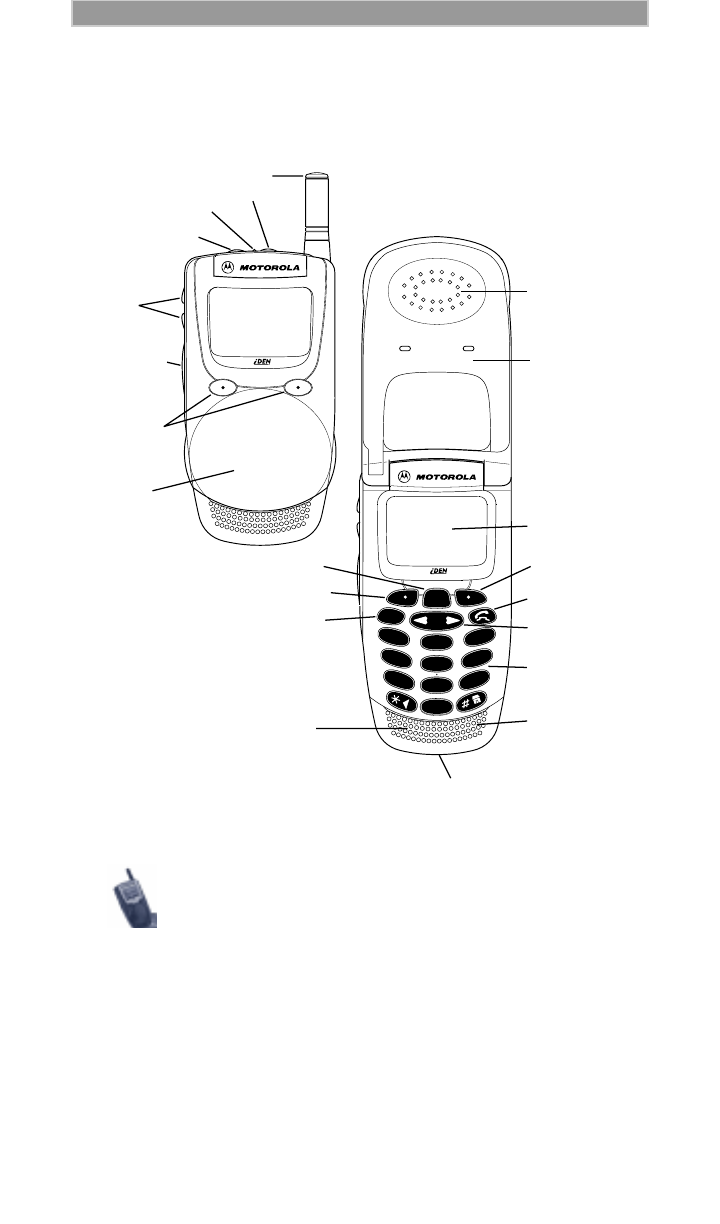
2
About Your i1000-A D R A F T
Buttons, Keys, and Other Controls
Before you use your i1000-A for the first time,
remove the three plastic lens protectors from the
display and cover.
1. Antenna
7. Option Keys
2. On/Off Button
3. LED
4. Speaker/Home/Back
Button
8. Flip Cover
(Closed)
6. Push-To-Talk
(PTT) Button
5. Volume
Control
Buttons
16. Alphanumeric
Keypad
11. Speaker
10. Mode Key
9. Menu Key
8. Flip Cover
(Open)
12. Earpiece
13. Alphanumeric
Display
7. Option Key
7. Option Key
15. Scroll Key
14. SEND/END Key
17. Microphone
18. Accessory Connector
3
2
6
5
4
7
0
8
9
1
def
abc
mno
jkl
pqrs
tuv
wxyz
ghi
Mode
MENU
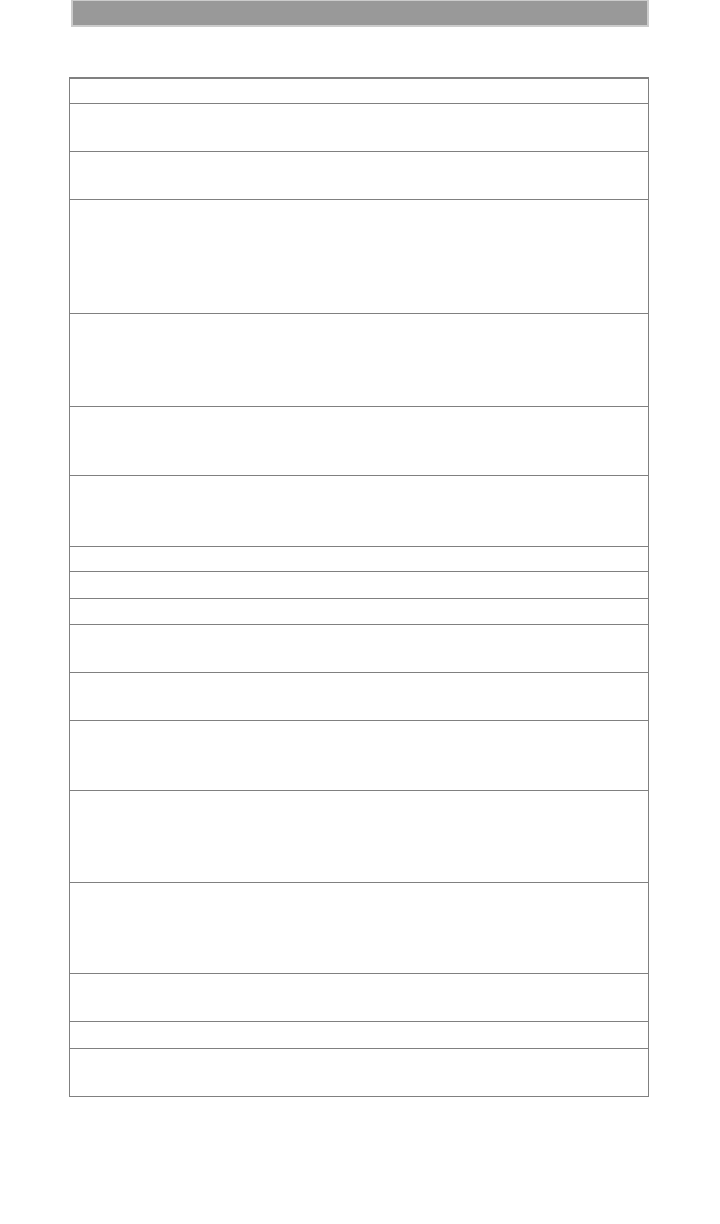
3
D R A F T About Your i1000-A
1 . Antenna Extend for optimal signal.
2 . On/Off Button Press and hold to turn your i1000-A on or
off.
3 . LED (Light
Emitting Diode) Check the phone’s status. See Table 2 on
page 8 for more information.
4 . Speaker/
Home/Back
Button
Press to hear incoming calls through the
earpiece or the speaker during Private and
Group calls. In Net mode, press to go
back; press and hold to go to the Home
menu.
5 . Volume Control
Buttons Press to adjust volume levels in Phone,
Private, and Group modes. In mail menus
and in Net mode, press to scroll forward
and backward.
6 . Push-To-Talk
(PTT) Button Transmit a Private or Group Call, or a Call
Alert. Press and hold to talk; release to
listen.
7 . Option Key Press the right or left option key to select
the menu option that appears directly
above the key.
8 . Flip Cover End a phone call. Protect the keypad.
9 . Menu Key Press to scroll through menu options.
10. Mode Key Press to change modes.
11. Speaker Listen to Private and Group calls. Listen to
Phone calls in speakerphone mode.
12. Earpiece Listen to calls when the speakerphone is
off.
13. Alphanumeric
Display View up to four lines (up to 12 characters
per line) or six lines (up to 16 characters
per line) on the display.
14. Send/End Key Press to answer an incoming Phone call.
After entering a phone number, press to
dial the call or to redial the entered phone
number. Press to end Phone calls.
15. Scroll Key Press the left side to scroll backward or
the right side to scroll forward through
menu options and lists. When entering
text, press to erase text or add a space.
16. Alphanumeric
Keypad Enter telephone numbers, Private call IDs,
and alphanumeric characters.
17. Microphone Use to speak during calls.
18. Accessory
Connector Use to connect accessories or the battery
charger.
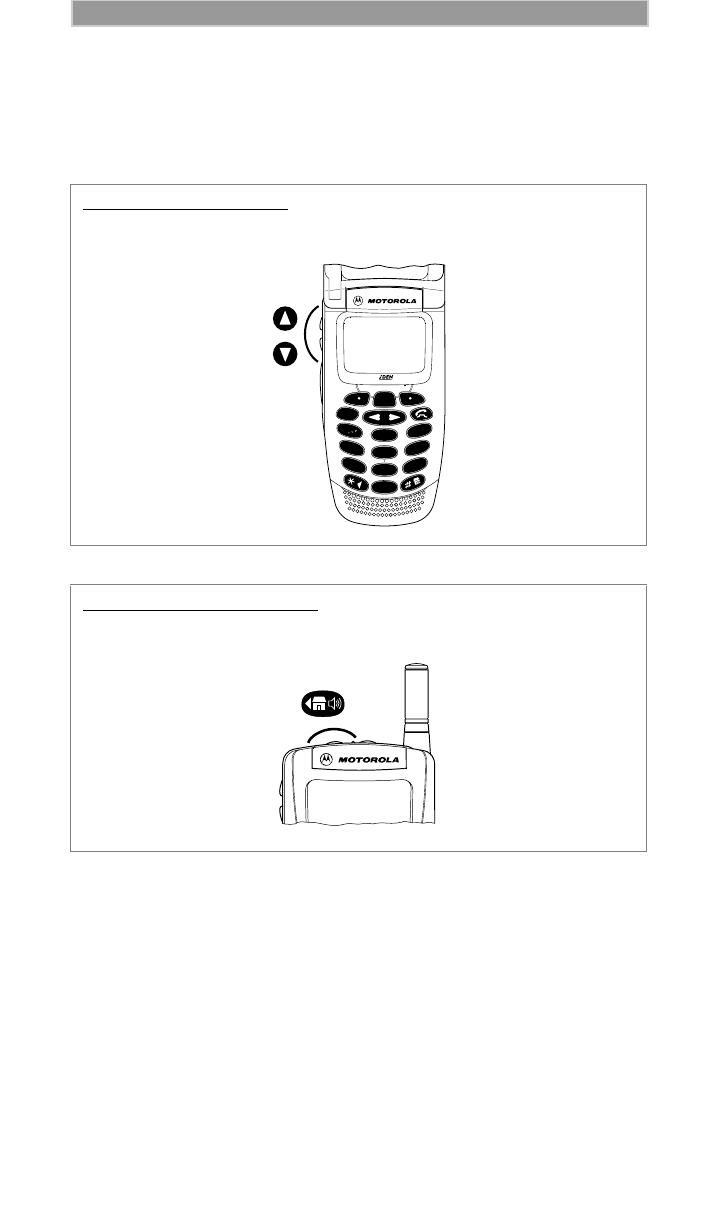
4
About Your i1000-A D R A F T
Keypad Operation
Some buttons and keys on your i1000-A have multiple functions,
depending on the current mode. See Table 1 .
Table 1: Special Key Functions
Volume Control Buttons
Volume Up Button
Phone-Group-Private:
• Raise the sound
from the earpiece.
Net and Mail:
• Move up one line
at a time.
• Press and hold to
move up one page
at a time.
Volume Down Button
Phone-Group-Private:
• Lower the sound
from the earpiece.
Net and Mail:
• Move down one
line at a time.
• Press and hold to
move down one
page at a time.
Speaker/Home/Back Button
Phone-Group-Private:
• Switch audio from
the earpiece to
the speaker.
•
Net and Mail:
• Press to go back
to the previous
page.
• Press and hold to
go to the Home
menu.
• Press and hold
again to go to the
Net Ready
screen.
3
2
6
5
4
7
8
9
def
abc
mno
jkl
pqrs
tuv
wxyz
ghi
Mode
MENU
next
0
1
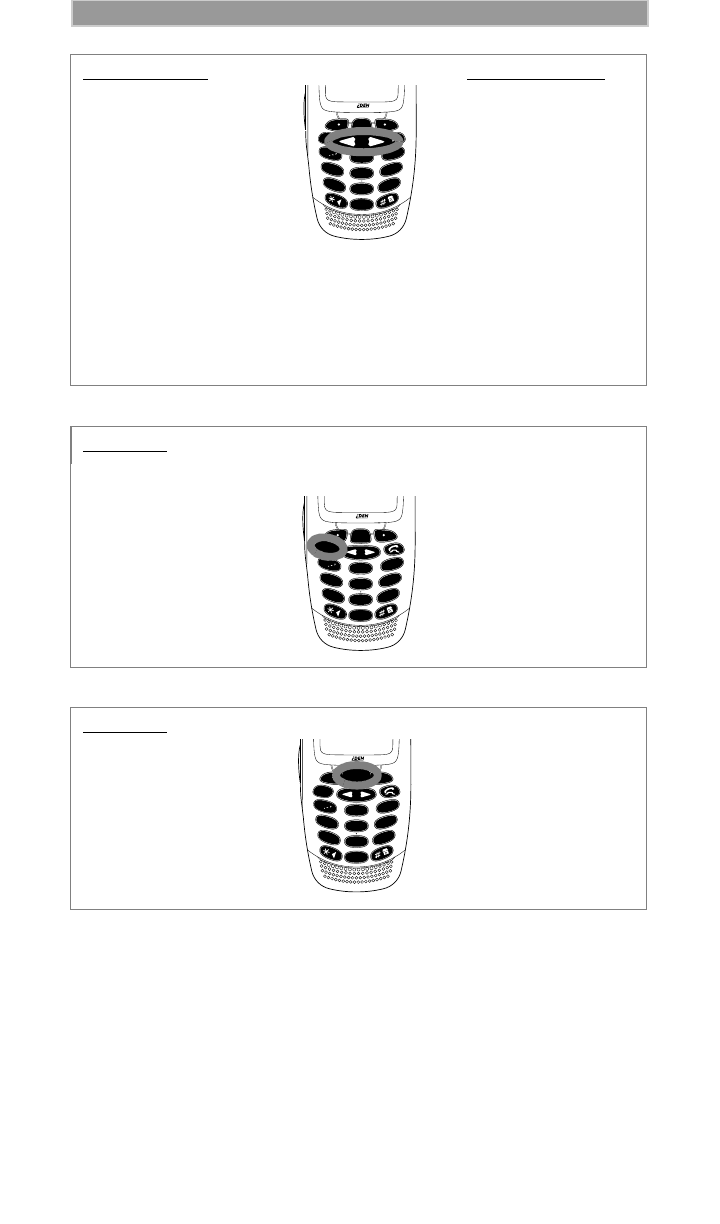
5
D R A F T About Your i1000-A
Left Scroll Key
Phone-Group-Private:
• Move backward.
Net and Mail:
• Scroll up
Text Entry:
• Backspace to
erase a character.
• Press and hold to
erase alal
characters in a
field (word).
Right Scroll Key
Phone-Group-Private:
• Move forward.
Net and Mail:
• Scroll down.
Text Entry:
• Insert a space.
• Immediately after
pressing an alpha,
press to go to the
next space.
This does not
delete characters
or insert space.
Mode Key
Phone-Group-Private:
• Advance to the
next mode.
Net and Mail:
• Suspend the
browser and
switch to Phone
mode.
Menu Key
Phone-Group-Private:
• Scroll through the
menu options on
the display.
Net and Mail:
• Press and hold to
access the
browser home
menu.
3
2
6
5
4
7
8
9
def
abc
mno
jkl
pqrs
tuv
wxyz
ghi
Mode
MENU
next
0
1
Mode
3
2
6
5
4
7
8
9
def
abc
mno
jkl
pqrs
tuv
wxyz
ghi
MENU
next
0
1
Mode
3
2
6
5
4
7
8
9
def
abc
mno
jkl
pqrs
tuv
wxyz
ghi
Mode
MENU
MENU
next
0
1
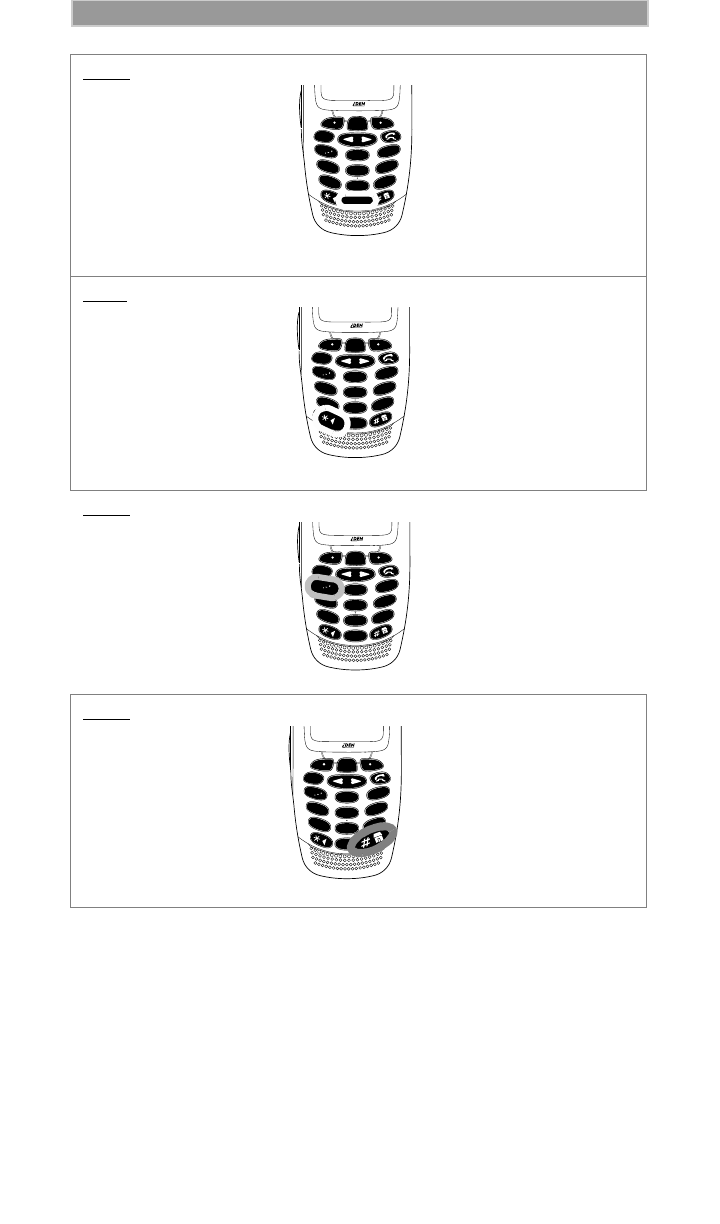
6
About Your i1000-A D R A F T
0 Key
Phone-Group-Private:
• Press to enter a
zero (0).
Net and Mail:
• Press to enter a
zero (0).
Text Entry:
• Press to see other
word choices if
the word
presented is not
the desired word.
* Key
Phone-Group-Private:
• Press to enter the
star (*).
Net and Mail:
• Press to go back
to the previous
page.
Text Entry:
• Press to
backspace.
1 Key
Phone-Group-Private:
• Press to enter the
number 1.
Net and Mail:
• Press to
Text Entry:
• Press to
# Key
Phone-Group-Private:
• Press to enter the
pound sign (#).
Net and Mail:
• Press to go back
to the browser
Home menu.
Text Entry:
• Press and hold to
shift between
upper and lower
case.
next
0
3
2
6
5
4
7
8
9
def
abc
mno
jkl
pqrs
tuv
wxyz
ghi
Mode
MENU
1
next
0
3
2
6
5
4
7
8
9
def
abc
mno
jkl
pqrs
tuv
wxyz
ghi
Mode
MENU
next
0
1
1
3
2
6
5
4
7
8
9
def
abc
mno
jkl
pqrs
tuv
wxyz
ghi
Mode
MENU
next
0
1
3
2
6
5
4
7
8
9
def
abc
mno
jkl
pqrs
tuv
wxyz
ghi
Mode
MENU
next
0
1
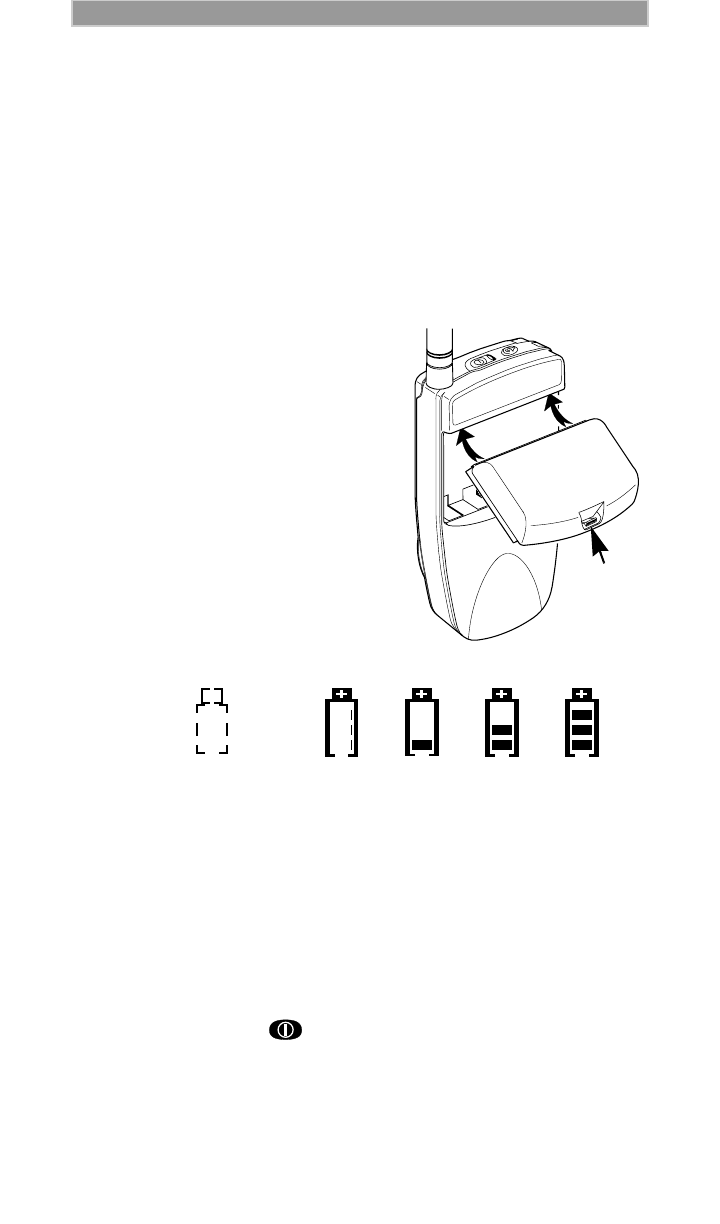
7
D R A F T About Your i1000-A
Battery
Remove the battery from the protective case provided in the original
packaging. When the battery is not attached to the phone or being
charged, store it in this case.
Charging the Battery
To get the maximum use from the battery, charge it for at least three
hours before you use it for the first time.
Attach the charger connector to the i1000-A then connect the adapter to
an electrical outlet. For more information about chargers, see
“Accessories” on page 76.
Attaching the Battery
To attach the battery to your i1000-A,
align the battery as shown. Press down
on the battery until you hear a click.
Battery and Charging Status
A low battery is indicated by a short,
chirp-like sound through the speaker.
The battery strength icons display
battery level information, as shown
below. The battery indicators show the
battery level during operation and
charging.
Figure 1. Battery Charging Status
Detaching the Battery
To detach the battery, press the latch to release the battery and slide the
battery downward.
Turning On Your i1000-A
Press the On/Off button until a set of icons appears on your
display. (For a description of the icons, see page 9.) Then the message
“Please Wait” displays while the i1000-A connects to your carrier’s
network. To change the displayed language, see page 19.
Icon
Flashes
Charging Low Battery 0-30% 31-60% 61-90% 91-100%
Discharging Low Battery 0-10% 11-40% 41-70% 71-100%
Latch
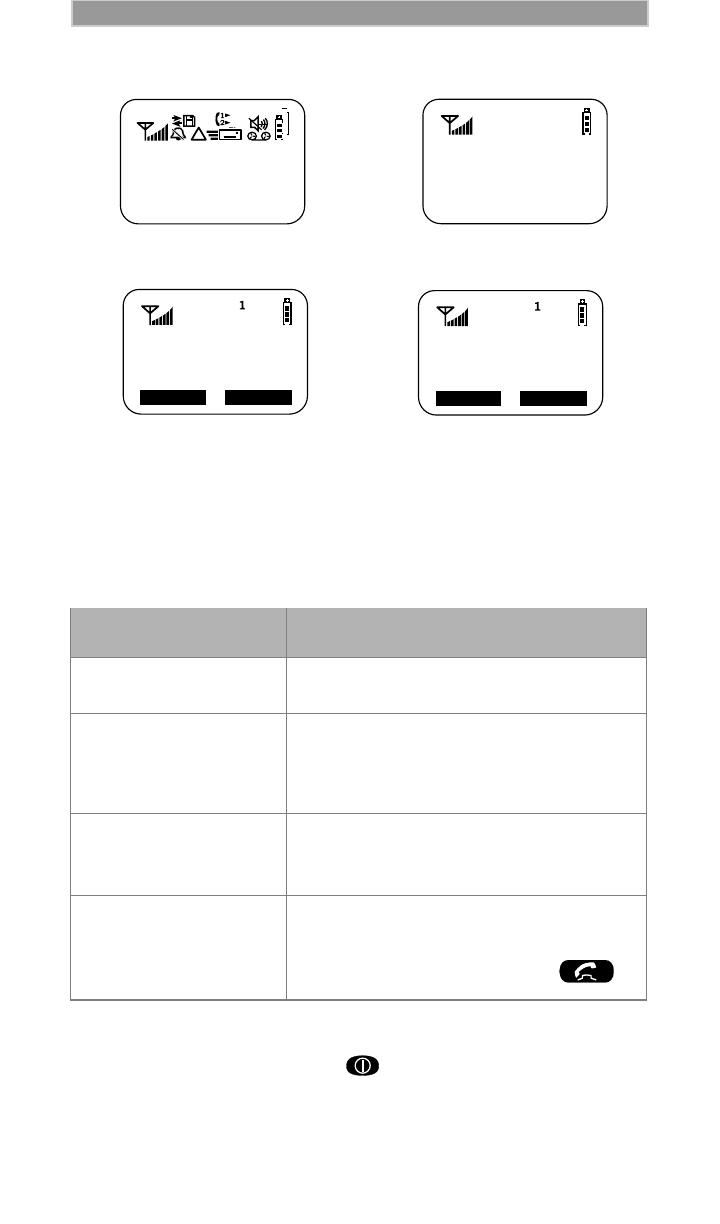
8
About Your i1000-A D R A F T
Cover Closed Cover Open
The menu options that appear on the Phone Ready screen depend on
whether the cover is open or closed.
The LED indicator located on top of the i1000-A shows the service
state. See Table 2 .
Table 2: LED Indicator
Turning Off Your i1000-A
Press and hold the On/Off button until you see the message
“Powering Off”.
OR
LED Indicator Status of Your i1000-A
Flashing Red Registering—your i1000-A is signing on
to your carrier’s network. Please wait.
Solid Red No service—your i1000-A cannot sign
on. It will continue trying to connect
every two minutes as long as it is turned
on.
Flashing Green In service—your i1000-A is ready to use.
You can now place and receive calls and
use the browser.
Solid Green In use—-your i1000-A is currently being
used. Check to make sure that you
ended the last call by pressing .
Please Wait
(888)555-1212
Phone Ready
Line1
10:35p 10/18
List Mode
Phone Ready
Line1
10:35P 10/18
Name Mail
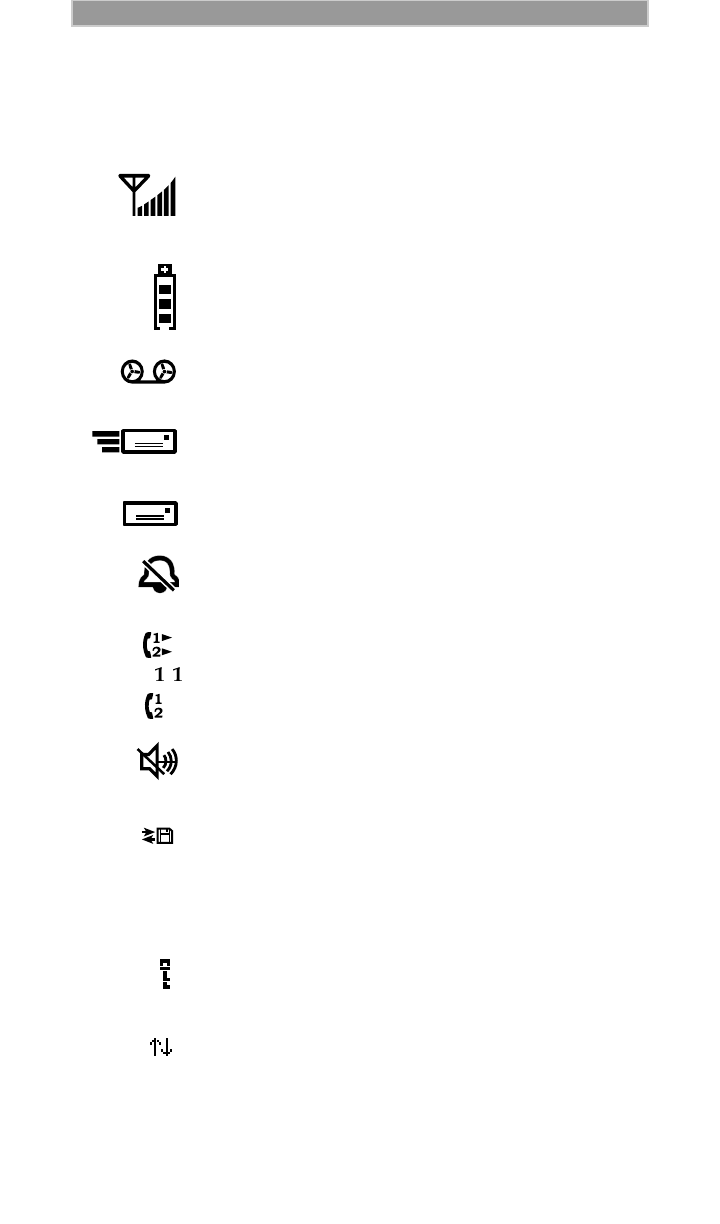
9
D R A F T About Your i1000-A
Display Icons
Display icons appear on the screen to inform you of existing conditions.
See the following list.
Some of the following icons may appear along the top of the display.
Signal Strength Indicator
Shows the signal strength. Six bars indicate the strongest
signal. Calls and messages may not be sent or received in
weak signal areas.
Battery Strength Indicator
Shows the remaining charge in your battery. Three bars
show full charge. The indicator flashes when you have
less than five minutes of talk time remaining.
Voice Mail
Indicates that unplayed messages are waiting in your
voice/fax mail box
New Message Mail
Indicates that you have new text messages in your mail
box.
Unread Message Mail
Indicates that you have unread Message Mail.
Vibrate All
Indicates that the Vibrate All option is turned on. You
will not hear a ring tone.
Call Forward
Indicates that incoming phone calls are being forwarded.
Active Line Indication
Displays the active phone line (1 or 2).
Private/Group Speaker
Indicates that the Private/Group speaker is off. You will
hear calls through the earpiece.
Packet Data
Indicates packet data registration. The blinking arrows
indicate send and receive activity. For more information,
see the Wireless Data User’s Guide (publication
68P81090C75-O).
Some of the following icons may appear on the last line of the display.
Secure Packet Data Connection
Indicates that your packet data information is encrypted
during transmission.
More Information
Indicates that there is more text to read above, below, or
above and below the current screen.

10
D R A F T
USING YOUR PHONE WITH YOUR
COMPUTER
You can use your i1000-A as a modem for fax and data transfer from
your IBMTM PC-compatible laptop computer. This is particularly useful
when there is no wired phone line available, for example, on a plane or
in your car.
You simply attach a data cable from your phone to your computer. This
type of wireless connection uses one of two types of data connection:
circuit-switched data and packet data.
• Circuit-switched data is typically used for sending and receiving
faxes and for transferring large files.
• Packet data is used for small file transfers such as e-mail.
To use these services, you must install the iDEN Wireless Data Services
software. For more information on setting up your computer and your
i1000-A for Packet and Circuit Data calls, see the iDEN Wireless Data
Services User’s Guide (publication 68P81090C75).
To make data calls using only your i1000-A, see “Net Mode” on
page 43 and “Mail Services” on page 64.

11
D R A F T
SPECIAL FEATURES
The i1000-A offers a hands-free speakerphone design, alert options by
selectable vibration, displayed time and date option, stored Phone and
Private lists, and your choice of displayed language. This section
describes each feature.
Hands-Free Speakerphone
The i1000-A provides a speakerphone similar to one in your office or
home. Because the i1000-A is wireless, you have the convenience of a
hands-free speakerphone for holding impromptu meetings or listening
to your voice mail messages.
During speakerphone operation, you may either speak or listen, but you
cannot do both at the same time.
Speakerphone operation varies according to whether the cover is open
or closed.
• If the cover is open during a speakerphone call and you close the
cover, you will end the call.
• If the cover is closed during a speakerphone call and you open the
cover, the call switches to the earpiece. You can switch back to
speakerphone operation by selecting “Spkr”.
To use the speakerphone:
1. Select “Spkr”. The “Spkr” option flashes while the speakerphone
is on.
2. Place the phone 15-30 inches (381-762 millimeters) away from
you. In a noisy environment, you may want to move the i1000-A
closer to you for better transmission.
To “select” a menu option, press the right or left
Option key directly under the desired menu
option.
If there is background noise in the vicinity of your
i1000-A, you may miss part of the incoming audio,
such as, a caller’s voice or messages.
To more clearly hear incoming audio, press ,
then press under “Mute”. The display changes
from “Phone In Use” to “Phone Mute” to indicate that
the microphone is muted.
While the microphone is muted, you can hear
incoming audio, but a caller cannot hear any speech
coming from your i1000-A. To be heard by the caller,
press under “Mute” again to turn on the
microphone of your i1000-A.

12
Special Features D R A F T
Private/Group Mode Speaker
In Private and Group modes, you can hear calls through either the
earpiece or the speaker. Press the Speaker button on top of the
i1000-A to turn the Private/Group Speaker on or off.
With the Speaker button on, you will hear incoming calls through the
speaker. This is useful to monitor talkgroup activity in Group mode.
With the Speaker button off, you will hear incoming calls through the
earpiece.
When you hear a brief chirp-like tone:
• In Private mode, you have a private call.
• In Group mode, there is activity within the talkgroup.
VibraCall™
VibraCall is a vibration alert system that notifies you of incoming phone
calls, messages, and data calls.
The alert choices are:
• Vibrate Only—produces only a vibration.
• Vibrate/Ring—produces a vibration followed by a ring tone.
• Vibrate Off—turns off the vibration and produces only a ring tone.
Note that the only choices for “Mail” and “Grp/Prvt” are Vibe On or
Vibe Off. The Mail vibe selection includes Net alerts.
You can set VibraCall to notify you of all incoming phone and data calls
and messages, or you can select individual services, such as “Mail”, for
vibration alert.
When you set vibration alerts, they are set only for
the current line.
If you have a second phone line, you must select
that line and repeat the procedure for selecting all
services or selecting individual services to vibrate.
If VibraCall is set for incoming calls and messages,
the power-up sequence includes a brief vibrate cycle.
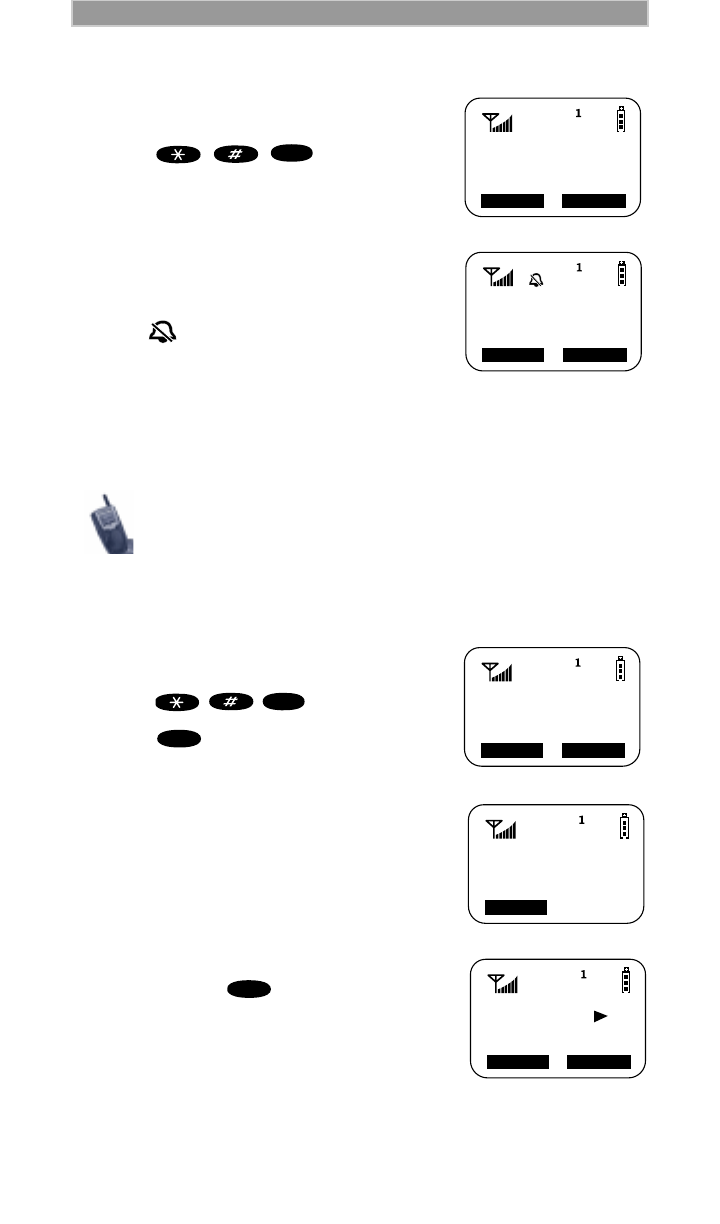
13
D R A F T Special Features
Selecting VibraCall for All Incoming Calls and Messages
To set a vibration alert for all incoming calls
and messages:
1. Press , , .
2. Select “All”.
After you complete the setting, the display
returns to the previous mode.
Look for (the Vibrate All icon) at the top of
your display.
Selecting VibraCall for Specific Phone or Mail Services
To set a vibration alert for specific phone
ormail services:
1. Press , , .
2. Press until you see the
“Selct” menu option on the last line of
the display.
3. Select “Selct”. The first selection is Vibe.
The menu option “Selct” allows you to set
individual vibration alerts for incoming
calls and messages.
4. To view the Vibe/Ring vibration alert
choices, press on the keypad.
The vibration selection that you make
affects only the current mode. In this
example, vibration is set only for Phone
mode. You must set each mode or service
When you select Vibrate for Phone mode, you receive
a vibration alert for all incoming phone and circuit data
calls.
When you select Vibrate for Mail, you receive a
vibration alert for all incoming mail and net alerts.
Exit All
9=Vibrate
Alert:Off
9
WXYZ
10:54p 12/09
Line1 Vibe
Phone Ready
Name Mail
9=Vibrate
Alert:Off
Exit On
9
WXYZ
MENU
9=Vibrate
Alert:Off
Selct
Phone
Vibrate:
Vibrate Off
Exit Vibe
MENU
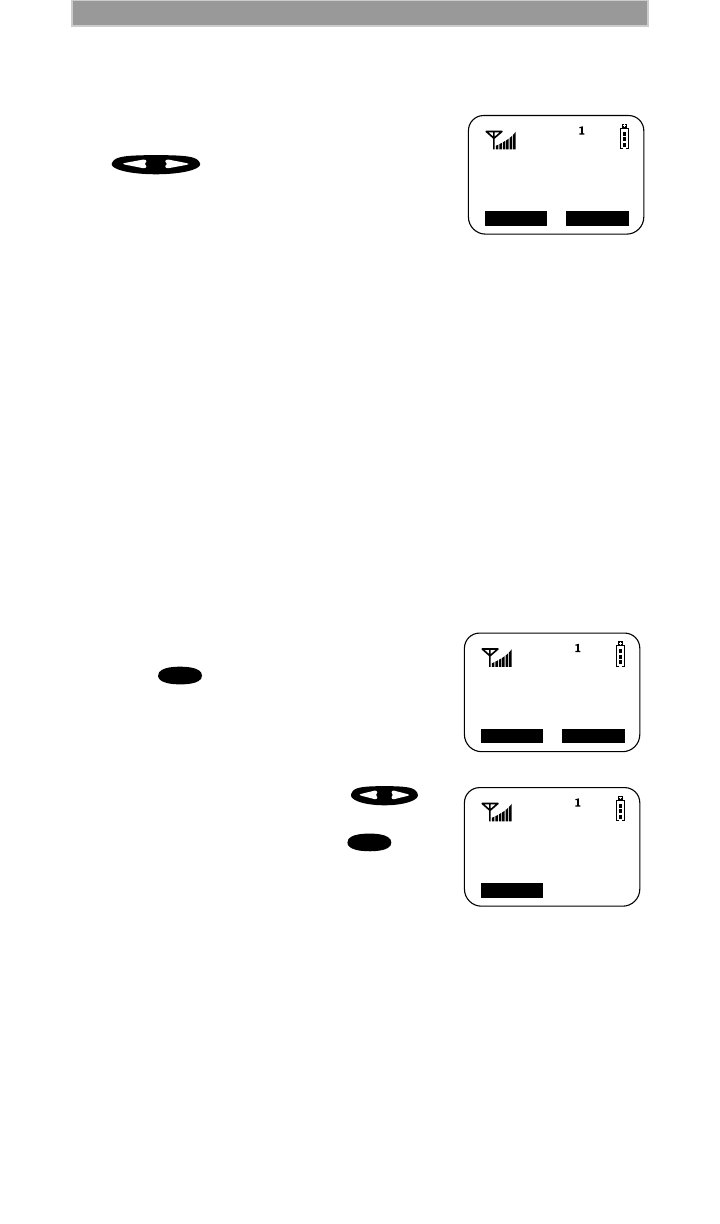
14
Special Features D R A F T
individually or select “All”
to set all services.
5. To set a vibration alert for another service,
such as “Mail” or “Group/Prvt”, press
on the keypad until you see the
desired mode or service.
6. Select “Exit” to return to the Vibrate Alert
menu.
7. Select “Exit” again to return to the previous mode.
Call Alert™
Call Alert enables you to page an individual (in Private mode) by
sending an audible tone.
Sending a Call Alert
Cover Closed
1. Select “Mode” to go to Prvt Ready.
2. Select “List”. Use the Volume Control buttons to scroll to the
desired name or ID.
3. Select “Alert” then press the PTT button.
Cover Open
1. Press to go to the “Prvt Ready”
screen.
2. Select “Alert”.
3. Enter the Private ID or press to
scroll to the desisred name. You may also
select the name by pressing and
using Name Search.
4. Press the PTT button to send the Call
Alert.
Receiving a Call Alert
When you receive a Call Alert, you hear a chirp-like tone and see a
message on your display.
• To answer the Call Alert, press the PTT button.
• Or, to clear the Call Alert, select “Clear”
• Or press any key other than the PTT button.
Group/Prvt
Vibe:Off
Exit On
Prvt Ready
Alert Name
JOHN
12:30p 10/29
Mode
Alert
JOHN
Exit
MENU
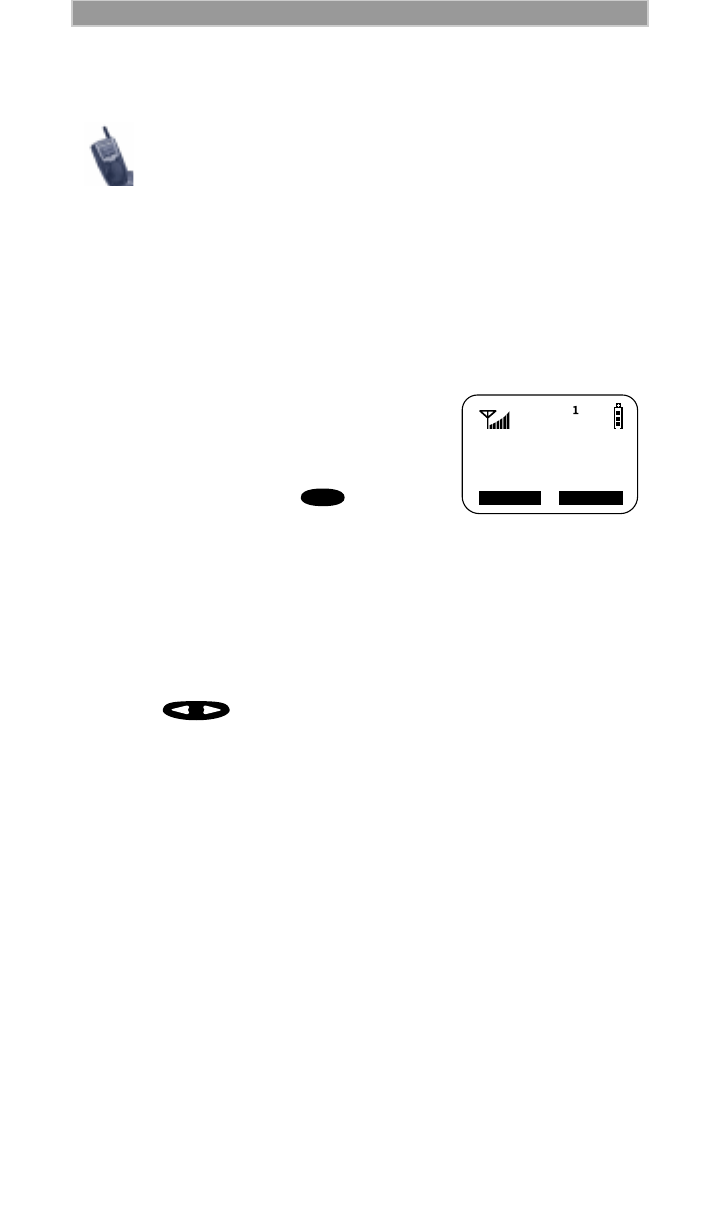
15
D R A F T Special Features
Call Alert Stacking
If your carrier provides Call Alert Stacking, you can save up to eight
Call Alerts in a queue. By stacking a Call Alert, you save it to the queue
for later use.
After you respond to the Call Alert, it is removed from the stack.
Receiving a Call Alert with Stacking
When you receive a Call Alert with Stacking,
do one of the following:
• To clear a Call Alert, select “Clear”.
• Or, to place the Call Alert into the queue,
select “Queue”. Pressing also
queues the Call Alert.
If you receive multiple Call Alerts, the last received Call Alert displays
and the remaining Call Alerts are stacked at the beginning of the queue.
Responding to a Call Alert in the Stack
You can respond to the Call Alerts in any order. To select a Call Alert for
response:
1. Select “Queue”.
2. Press to scroll to the desired Call Alert.
3. Press the PTT button to respond to the Call Alert.
Phone Only Mode
If your carrier provides this option, you can turn off Private, Group,
packet, and browser services. You can make and receive phone calls and
receive Message Mail and circuit-data calls.
Placing the phone in Phone Only mode increases the standby battery
life. Make sure that the LED is blinking green, which indicates that you
are in a coverage area.
Until the Call Alert is cleared or returned, you will not
receive any additional Phone, Private, or Group calls.
Alert
JOHN SMITH
3 Queued
Clear Queue
Mode
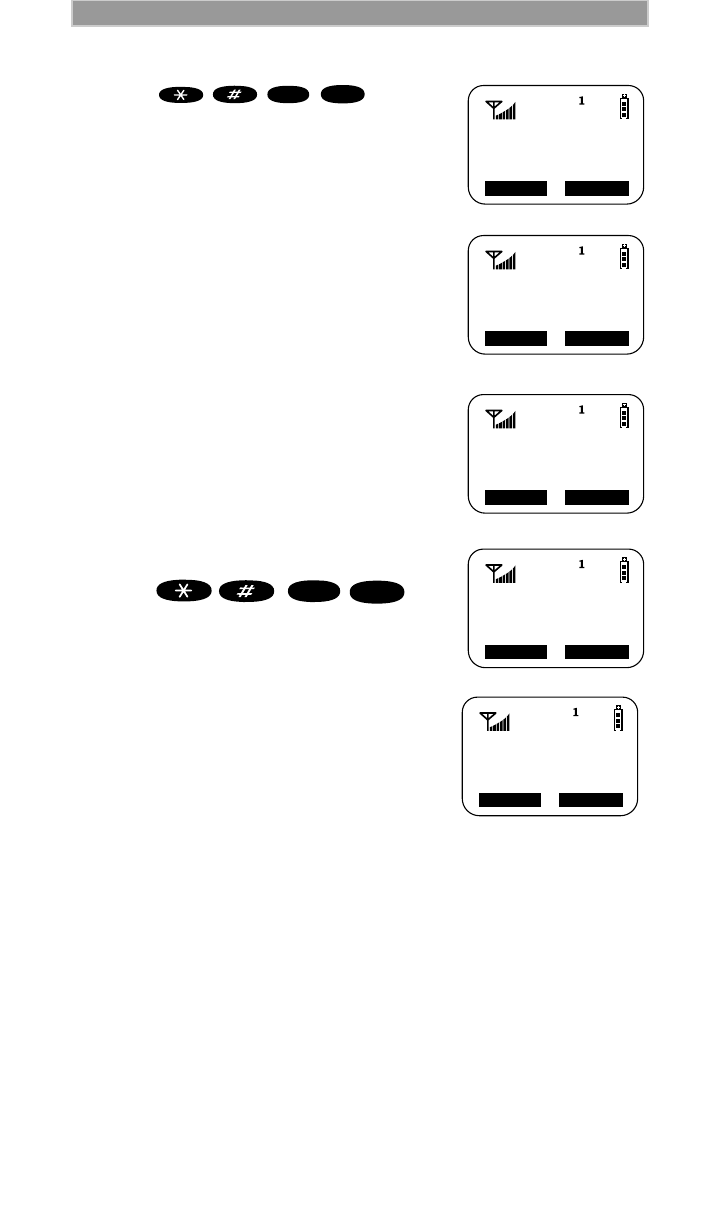
16
Special Features D R A F T
To turn on Phone Only mode:
1. Press , , , .
2. Select “On”.
3. Select “Exit”.
The “Phone ONLY” message displays. Group
and Private Mode services are now suspended.
To return to normal Phone mode:
1. Press ,, ,.
2. Select “Off”.
3. Select “Exit”. The display returns to
Phone Ready.
All services are now available.
80=Phone
Only:Off
On
Exit
8
TUV
0
80=Phone
Only:On
Exit Off
Phone ONLY
2:12p 07/21
Name Mail
Line1
80=Phone
Only:On
Exit
Off
8
TUV
0
80=Phone
Only:Off
Exit
On
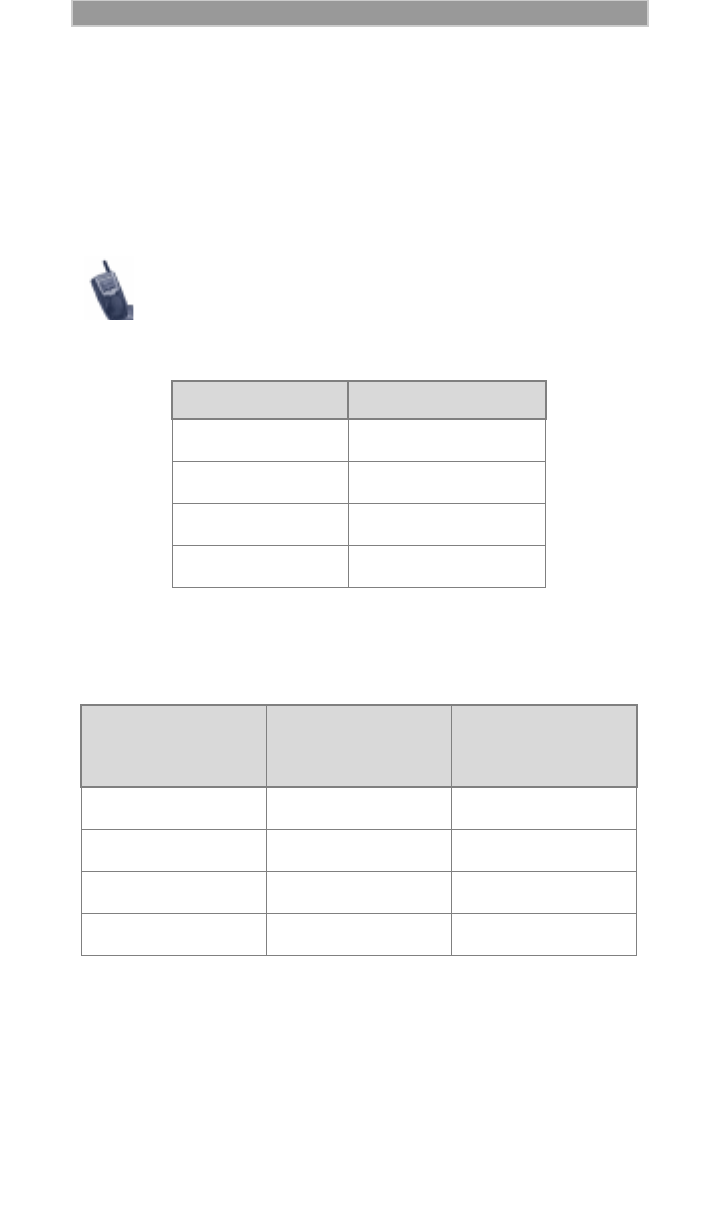
17
D R A F T Special Features
Setting the Time and Date
If your carrier provides this option, you can set your phone to display
the current time and date. Unless the phone is turned off, it continues to
display the current time during a loss of service.
You have a choice of a 12- or a 24-hour clock format. See Table 3.
You have a choice of either a MM/DD (month/day) or a DD/MM (day/
month) date format. See Table 4.
If your carrier activates the time and date, they are displayed in all
modes (Phone, Private, Group, Net). The time of day is also shown
during an active Phone call. The time and date are not displayed in
Group mode when you select an Area option.
As you travel between different time zones, your
phone automatically displays local time.
Table 3: Time Display Options
12-Hour Display 24-Hour Display
12:00a 00:00
6:25a 06:25
12:00p 12:00
6:25p 18:25
Table 4: Date Display Options
Date US Format
(MM/DD)
International
Format
(DD/MM)
January 2nd 01/02 02/01
January 31st 01/31 31/01
October 9th 10/09 09/10
December 31st 12/31 31/12
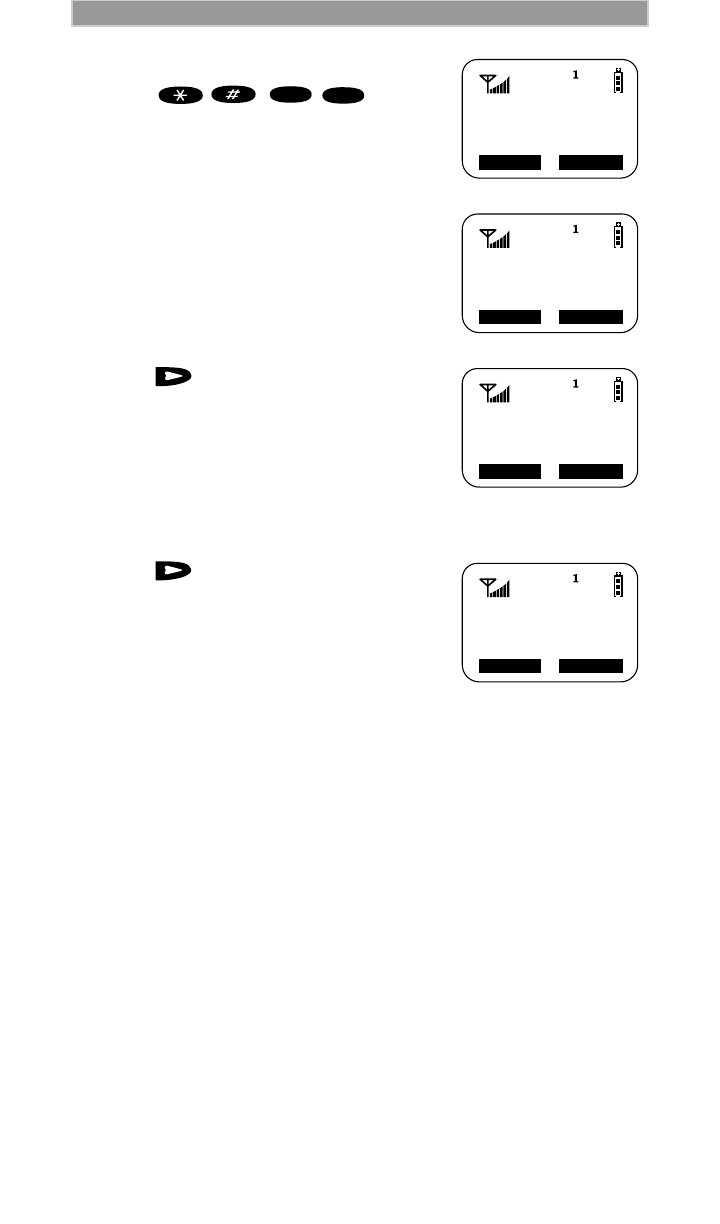
18
Special Features D R A F T
To set the time and date format:
1. Press , , , .
2. Select “Ok”. The Time/Date screen
displays.
The default (preset) time and date format that
is displayed depends on your carrier. You can
accept the default format or select an
alternate format.
3. Press until you see the
Time Format screen.
4. Do one of the following:
• To accept the 12-hour format, go to
the next step.
• To set the 24-hour format, select
“24hr”.
(See Table 3 on page 17.)
5. Press until you see the
Date Format screen.
6. Do one of the following:
• To accept the MM/DD format, select
“Exit”.
• Or to set the DD/MM format, select
“DD/MM”. (See Table 4 on page 17.)
7. Select “Exit”. The Ready screen for each mode (Phone, Group,
Private, and Net) now displays
the selected time and date formats.
71=Time/
Exit Ok
Date
7
PQRS
1
Time/Date
Display:On
Exit Off
Time Format:
12 Hour
Exit 24hr
Exit DD/MM
MM/DD
Date Format:
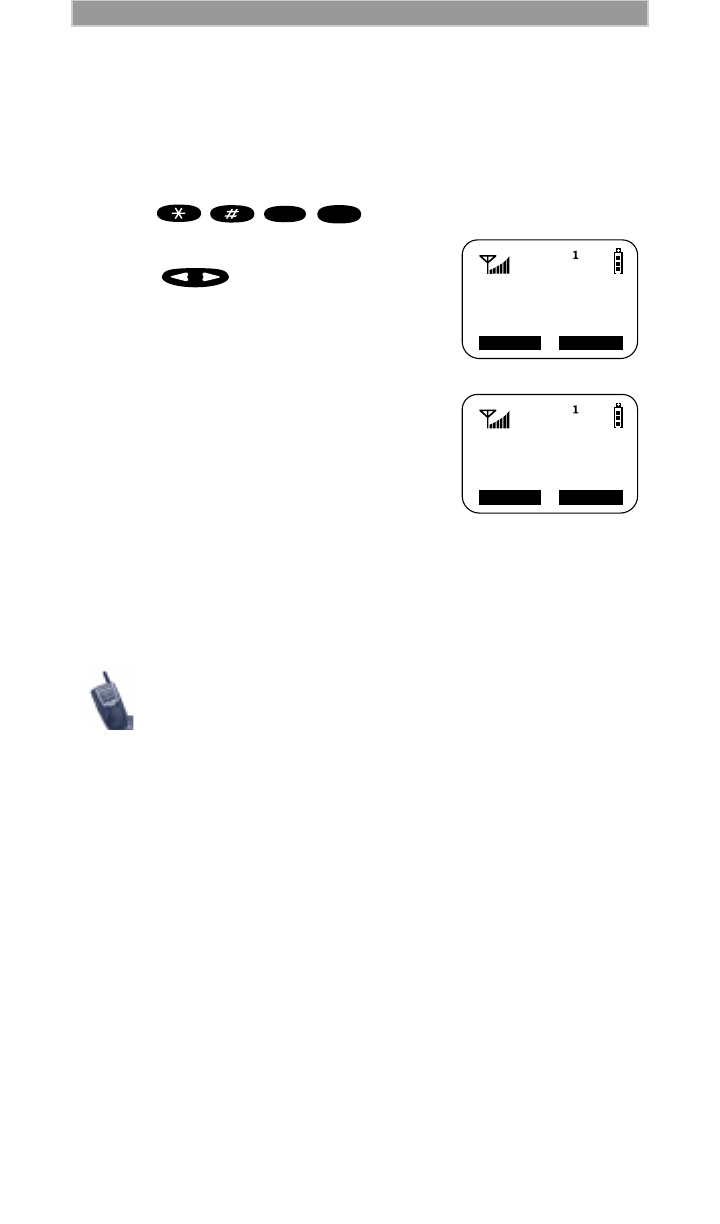
19
D R A F T Special Features
Changing the Display Language
You can customize your i1000-A to display one of four languages:
English, French, Spanish, or Portuguese.
To change the displayed language:
1. Open the cover.
2. Press , , , .
3. Select “Ok”.
4. Press to scroll through the
language options.
Selecting“Exit” at any time retains the
current language selection.
5. When the desired language appears on
your display, select “Ok”. The displayed
text immediately changes to the selected
language.
6. Select “Exit”, “Quitt”, “Salir”, or “Saír”
(whichever one displays) to exit this
menu.
The language that you select will be the displayed language.
If you select an incorrect language, repeat the
procedure for "Changing the Display Language".
7
PQRS
0
70=Language
English
Exit Ok
70=Langue
Francais
OkQuitt
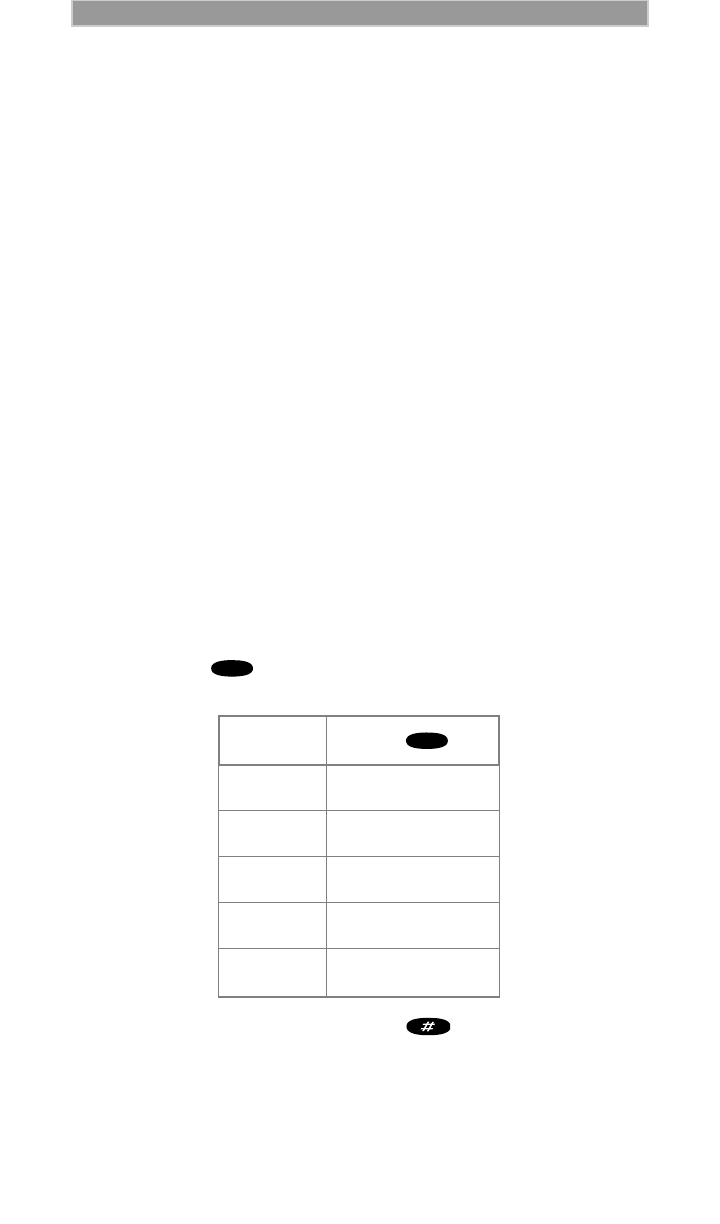
20
Special Features D R A F T
Creating and Using Stored Lists
A stored list is made up of phone numbers and Private IDs and their
related names, called aliases. Stored lists are convenient because you do
not have to remember names and numbers— you simply scroll through
your stored list.
Your i1000-A provides the following:
• Combined Phone and Private ID List
• Quickstore for Phone numbers
• Quickstore for Private IDs
• Last 10 Received and Sent Call List
Combined Phone and Private ID List
You can set a combined Phone and a Private ID with the associated
name, which eliminates the need to program the same name twice.
You can add up to 100 numbers to your Phone list, store them with
names, and assign them to speed-dial numbers.
The display holds 12 phone-number characters. If the phone number
exceeds 12 characters, select “More” to see the remaining characters.
Entering Numbers
To enter a number, press the corresponding number key on the keypad.
Entering Names
To enter a letter, press the key the required number of times, which is
related to the letter’s position on the key. Table 5 describes how to enter
each letter on the key.
Table 5: Entering a Name
To enter uppercase letters, press and hold .
Letter Press
P once.
Q twice.
R three times.
S four times.
7 five times.
7
PQRS
7
PQRS
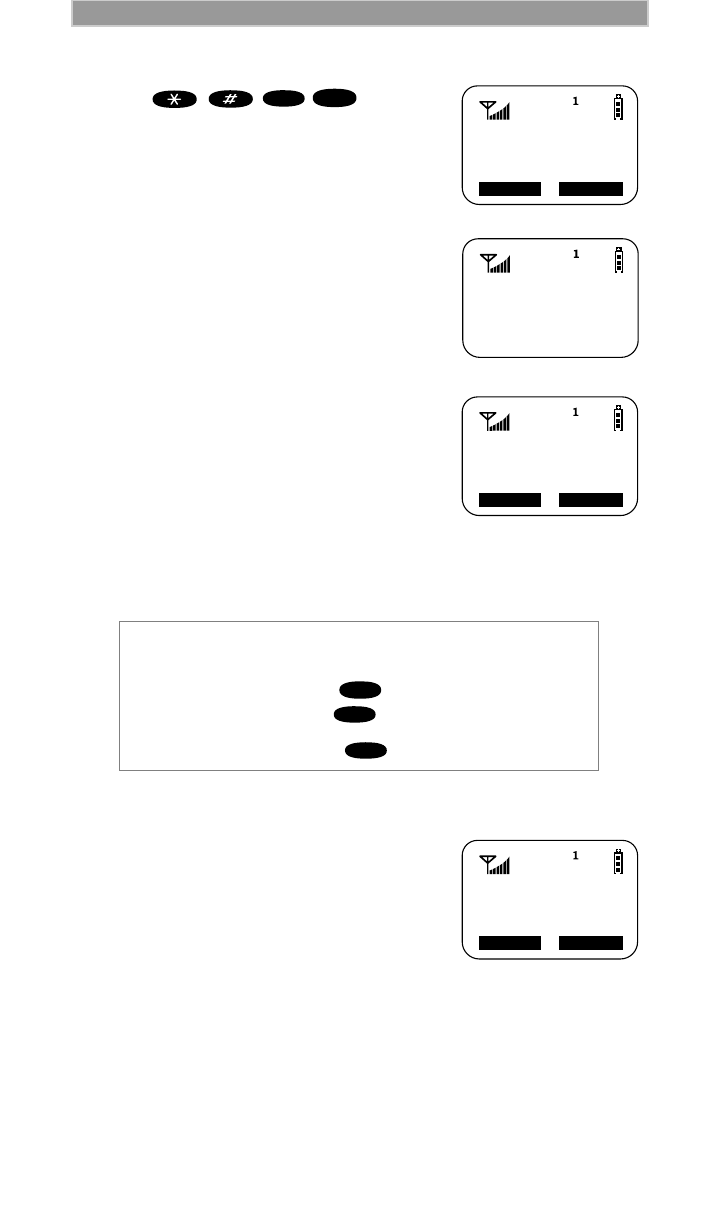
21
D R A F T Special Features
Storing Names and Numbers
1. Press , , , .
2. Select “Ok”.
The next screen displays the remaining
number of phone numbers and private IDs that
you can store.
3. Enter the name
4. Select “Store”.
See Table 6 for an example of entering a
name.
Table 6: Entering a Name
4. Enter the phone number that you want to
associate with this name and select
“Store”.
To skip the Phone Number entry, select
“Skip”. You will go directly to the
“Enter Prvt ID Number” screen.
EXAMPLE
To store the name “Tim”:
1. Enter “T” by pressing once.
2. Enter “i” by pressing three times.
3. Enter “m” by pressing once.
20=Phone/
Prvt List
Exit Ok
2
ABC
0
Available
98 Phone #
3 Prvt IDs
Enter Name
Exit Store
_
8
TUV
4
GHI
6
MNO
Skip Store
Enter Phone
Number
_
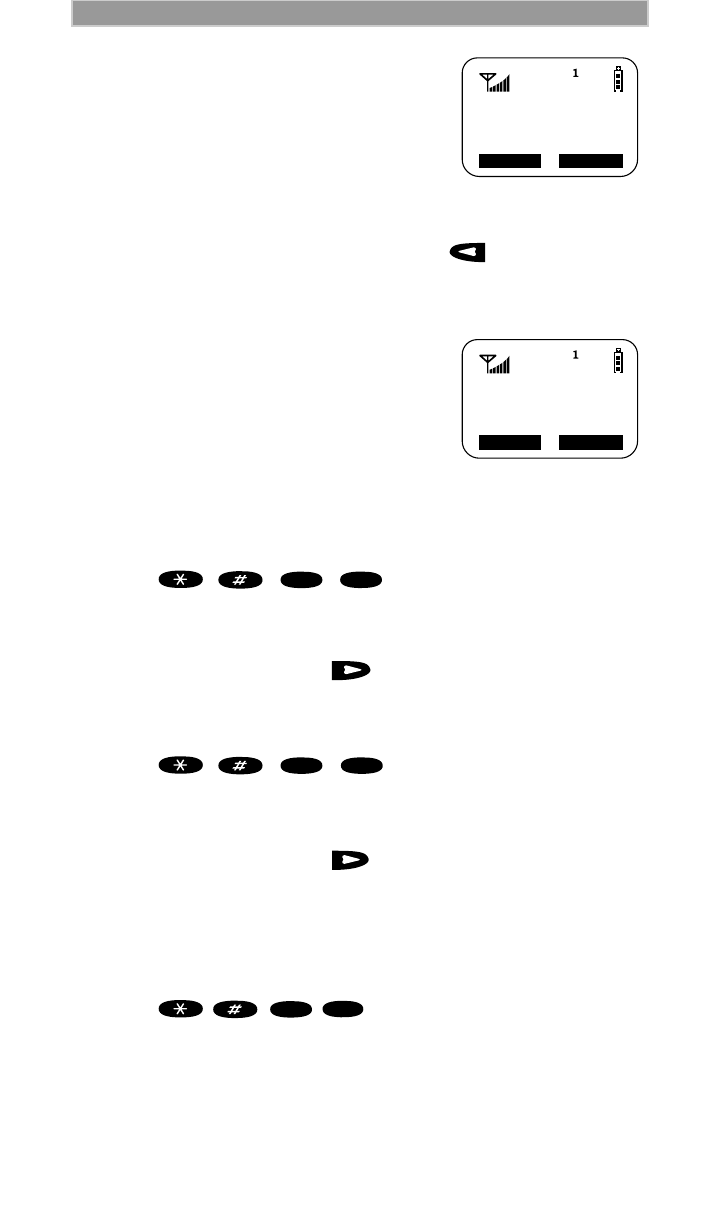
22
Special Features D R A F T
The next screen displays the name that you
entered and a flashing speed-dial number.
5. Do one of the following:
• To accept the speed-dial number
shown, select “Store”.
• To change the speed-dial number,
enter the desired speed-dial number.
The speed-dial number stops flashing.
• To enter another phone number, press and enter the
desired phone number.
If you do not want to enter a speed-dial number, select “Cancl”. You
will return to the “Enter Phone Number” screen.
6. At the next screen, enter the Private ID
number associated with the name that
you entered.
To skip the Private ID number entry, select
“Skip”.
For more information about using the speed-
dial feature, see “Speed Dial” on page 31.
Editing and Erasing Phone List Entries
1. Press , , , .
2. Do one of the following:
• To edit an entry, select “Edit”.
• To erase an entry, press once,
then select “Erase”.
Editing and Erasing Private ID List Entries
1. Press , , , .
2. Do one of the following:
a. To edit an entry, select “Edit”.
b. To erase an entry, press once,
then select “Erase”.
Naming and Storing a Talkgroup
To add and store a talkgroup name to your i1000-A:
1. Press , , , .
2. Select “Ok”.
3. At “Add New Entry?”, select “Ok”.
TIM
Spd#=3
Cancl Store
Enter Prvt
ID Number
Skip Store
2
ABC
1
2
ABC
2
ABC
2
ABC
3DEF
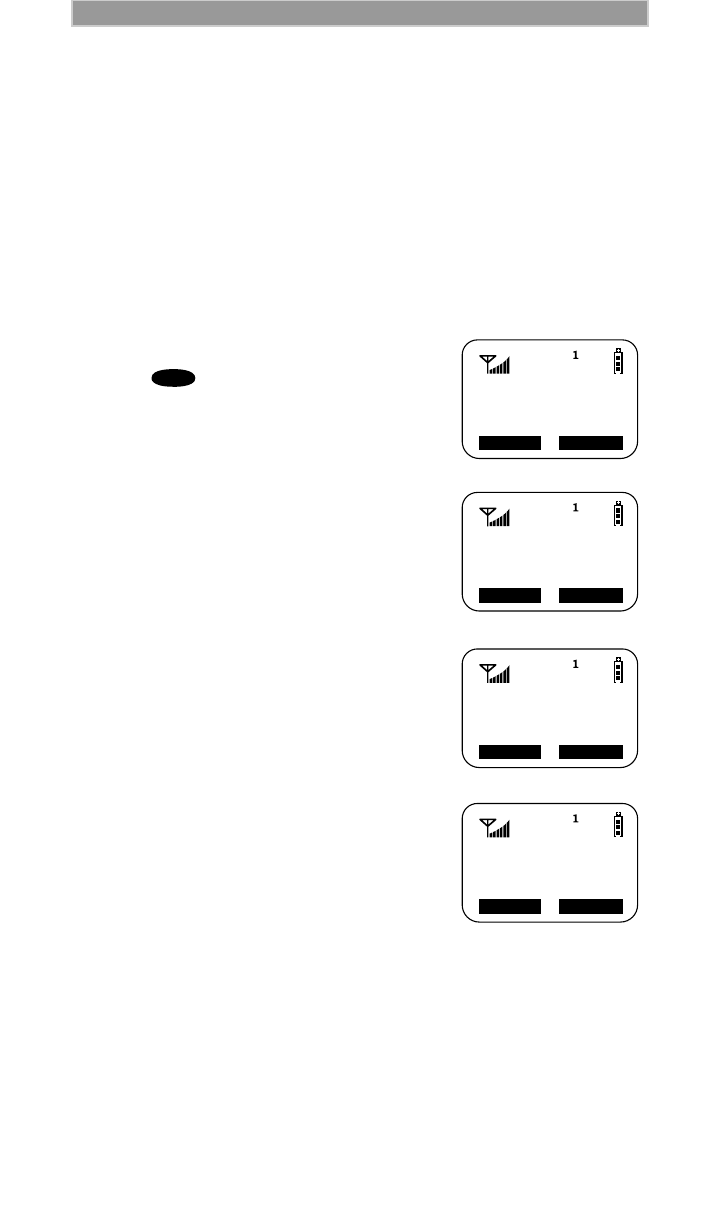
23
D R A F T Special Features
4. At “Enter ID”, enter the desired talkgroup number.
Optional: At “Enter Name”, enter a name for the talkgroup.
5. Select “Store”.
Recall Last 10 Calls
You can view, dial, and store two lists of the last ten telephone numbers.
The two lists are:
• Last 10 calls sent
• Last 10 calls received
Each list can have up to 10 numbers. The most recent call sent or
received appears first in your call list.
From the Phone Ready screen:
1. Press . The menu options change to
“Calls” and “Forwd”.
2. Select “Calls”. The Rcvd Calls screen
opens.
If the “Store” option appears, the
number currently displayed is not in
your Phone list. To add the number to
your list, select “Store”.
3. Do one of the following:
• To view the Received calls list, use
the Scroll key to view each entry.
• Or, to view the Sent Calls list, select
“Sent”. Use the Scroll key to view
each entry.
4. To view the Received calls list again,
select “Rcvd”.
5. To close the Calls list, select “Cancl”.
Phone Ready
Line1
Calls Forwd
12:55p 10/18
MENU
Rcvd Calls
1:5554444
Cancl Store
12:55p 10/18
Rcvd Calls
2:MAILBOX
Cancl Sent
12:56p 10/18
Sent Calls
1:JOHN
Cancl Rcvd
12:56p 10/18
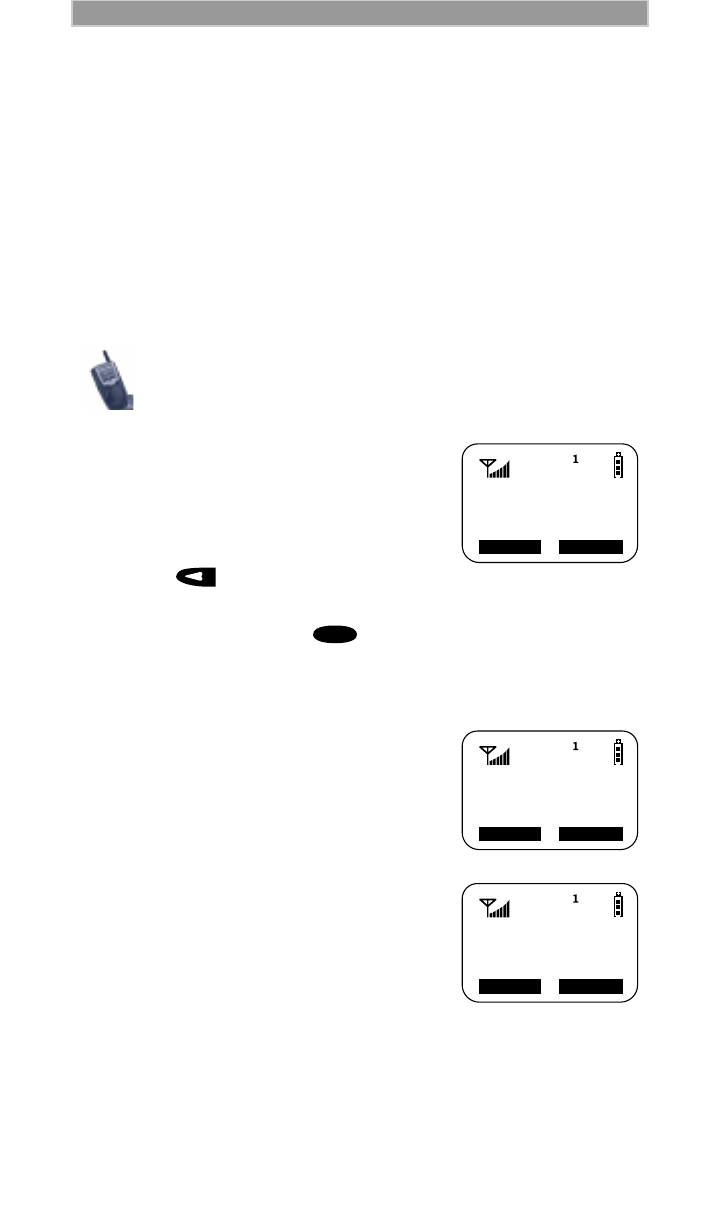
24
Special Features D R A F T
Phone Number Quickstore
Quickstore allows you to quickly store a received or sent phone number
without having to enter the programming menu.
If the name for the received or sent phone number is not in your Phone
list, the “Store” option will be available if the cover is open.
The “Store” option is not available for a Phone number:
• If the cover is closed
• If the i1000-A is active in a call
However, the phone number is added as the last number to the Last 10
Received or Sent list. Therefore, you can store it later.
To use Phone Number Quickstore, from the
Phone Ready screen:
1. Do one of the following:
• To go to the most recent call,
press .
• Or, to store the number in the Received
or Sent Call list, press until you
see “Call”, then select it.
2. Select “Store”.
3. Enter the name then select “Store”.
The combined name and number entry is
stored in the first available storage space.
As you scroll through the Last 10 Received or Sent
calls list, only the name displays. If the name is not
available, the phone number displays.
Phone Ready
Line1
Name Mail
12:43p 11:35a
MENU
Phone Ready
0=5554455
Cancl Store
Enter Name
_
Cancl Store
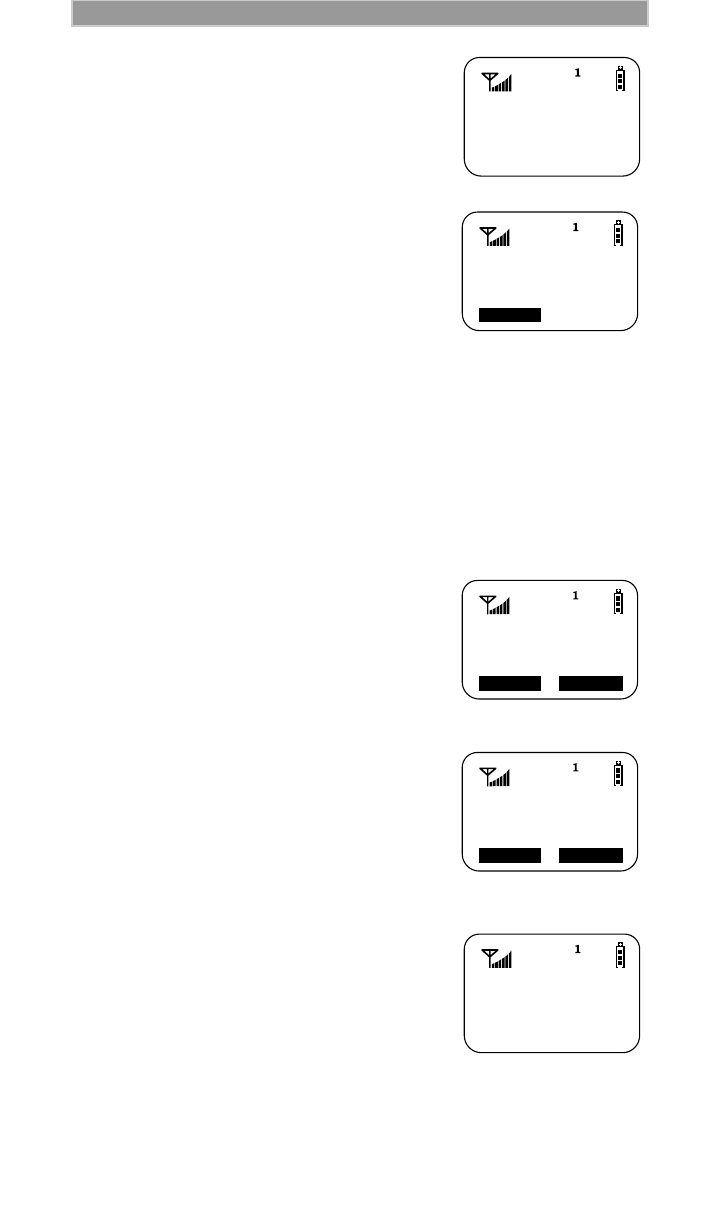
25
D R A F T Special Features
The Stored message displays with the name
that you stored.
Next, the Phone Ready screen displays the
speed-dial number, the name and its
associated phone number.
Private ID Quickstore
Quickstore allows you to quickly store a received Private ID without
having to enter the programming menu.
If the person’s name for the received Private ID is not in your Private ID
list, the “Store” option will be available if the cover is open.
The “Store” option is not available for a Private ID:
• If the cover is closed
• If you are at the Call Alert screen
However, the ID is added as the last number received in Private mode.
Therefore, you can store it later.
To use Private ID Quickstore, from the Private
Ready screen with the Private ID displayed:
1. Select “Store”.
If an ID is greater than 12 characters,
the ID wraps to the third line, replacing
the time and date.
2. Enter the name associated with the
Private ID.
3. Select “Store”. The Stored message
displays with the name that you entered.
If the list is full, you will get the
message, “List Full”. You cannot add
aliases until you remove some names
from the list.
JOHN
5551212
Stored
Phone Ready
0=JOHN
Cancl
5554455
Prvt Ready
56781
Alert Store
12:43p 10/18
Enter Name
_
Cancl Store
JOHN
12345
Stored
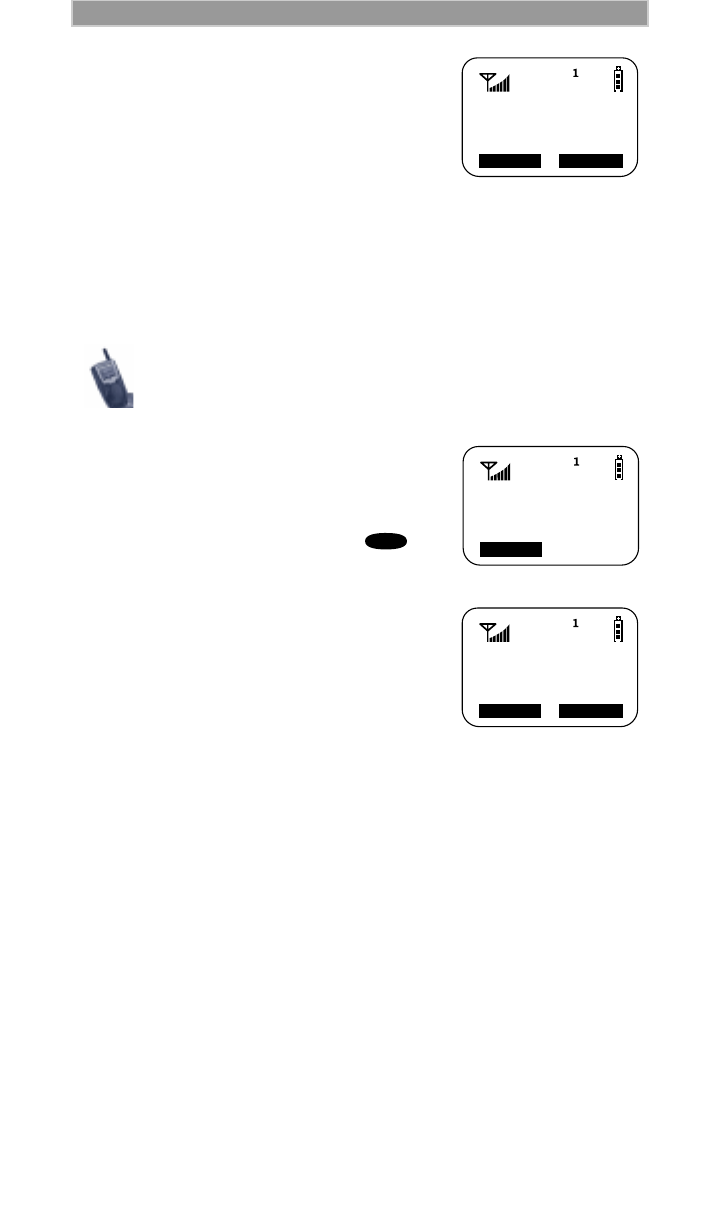
26
Special Features D R A F T
4. Next, the Prvt Ready screen displays the
stored name.
Turbo Dial
Turbo Dial enables you to place a phone call by pressing and holding the
numeric key on the keypad that corresponds to the stored entry in your
Phone list directory.
From the Phone Ready screen, with the cover
open:
1. Select one of the first eight entries in the
Phone list using key numbers
1 through 8. For examle, press for
speed dial #1. Keypad numbers 0 and 9
are not available for Turbo Dialing.
2. Press and hold the associated key for
two seconds to activate Turbo Dial.The
phone begins to dial the number and
“Phone Ready” changes to “Phone-In
Use”.
If you are on a Phone call, place the call on hold
before using Turbo Dial.
Prvt Ready
JOHN
Alert Name
12:45p 10/18
Phone Ready
1
Cancl
1
Phone-In Use
Voice Mail
Mute Spkr
12:45p 10/18
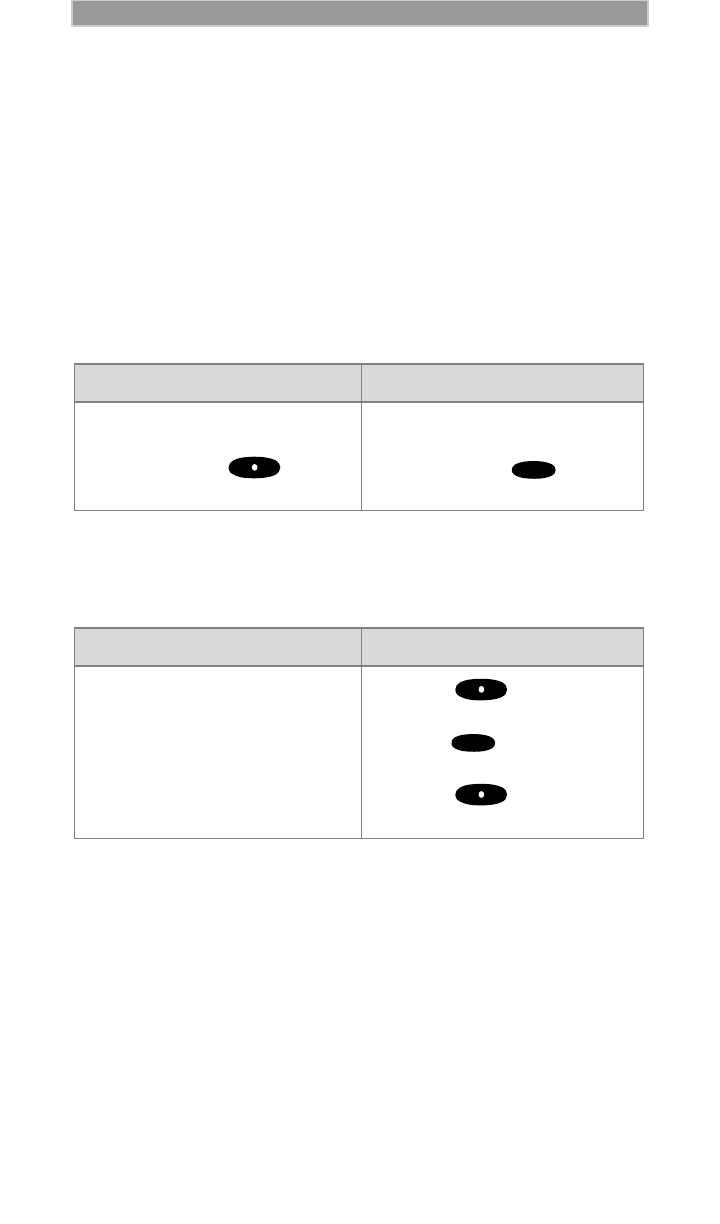
27
D R A F T
MODES AND MENUS
Modes and menus are the navigational tools of your i1000-A. Pressing
the Mode key takes you through the mode choices. Pressing the Menu
key takes you through the menu selections within each mode.
There are four modes:
• Phone—for cellular phone calls. See page 30.
• Private—for one-to-one radio calls. See page 39.
• Group—for radio calls with all individuals in a designated
talkgroup. See page 41.
• Net—for browser use. See page 43.
To change modes:
Menu choices within each mode provide access to the various features
of your i1000-A.
To use menu options:
Cover Closed Cover Open
• To switch between Phone,
Private, Group, and Net
modes, press under
“Mode”.
• To switch between Phone,
Private, Group, and Net
modes, press .
Cover Closed Cover Open
• Select “Mode” to go to the
desired mode.
• Select the desired menu
option.
Use the Volume Control buttons
to scroll through lists and other
menu options.
• Press under “Mode”
to go to the desired mode.
• Press to scroll through
available menu options.
• Press under the
desired menu option.
Mode
MENU
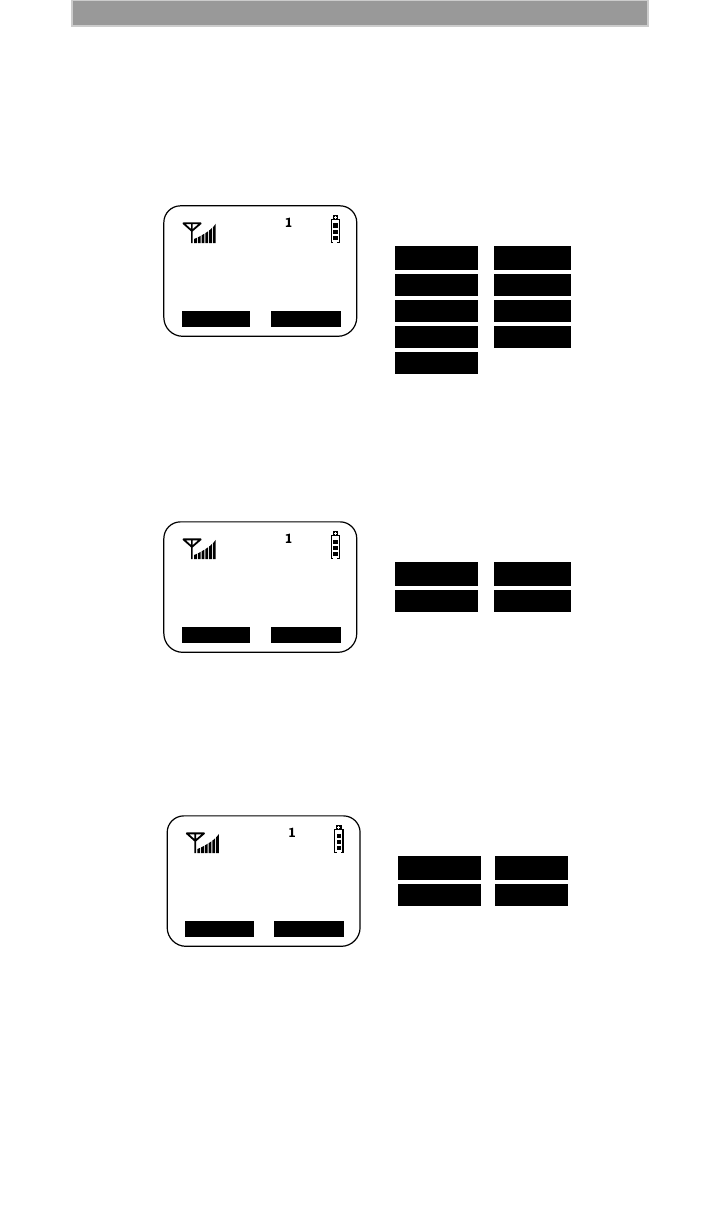
28
Modes and Menus D R A F T
With the cover open and your phone ready to use, your display looks
like the following screens for the Phone, Private, Group, and Net modes.
Before you start, be sure “Ready” appears.
Phone Mode and Menus - Cover Open
Private Mode and Menus - Cover Open
Group Mode and Menus - Cover Open
Menu options:
Name Mail
Calls Forwd
Spd# Memo
Wait Prgm
Line2
Menu options:
Alert Name
Mail Prgm
Note: If a caller is not
in your Private ID list,
“Store” replaces
“Name”.
Menu options:
Alert Mail
Area Prgm
Line1
10:54a 12/09
Name Mail
Phone Ready
1
Prvt Ready
JOHN SMITH
10:54a 12/09
Alert Name
Group Ready
Talkgrp 10
12:27p 12/09
Alert Mail
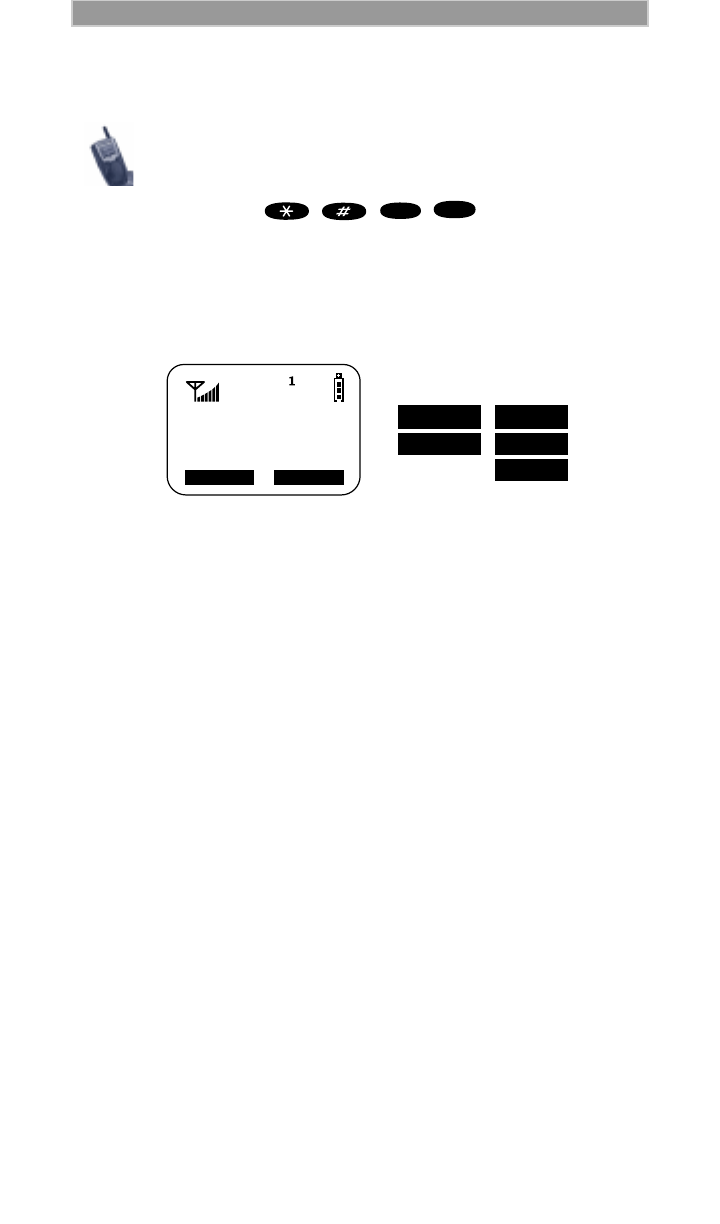
29
D R A F T Modes and Menus
Net Mode and Menus - Cover Open
If you set the Silent Group programming menu to
silence incoming alerts and voices, the “Group Ready”
screen displays as “Group-Silent”. To reset it:
1. Press , , , . The”38=Silent
Group” message displays on your screen.
2. Select “Ok”.
Menu options:
Net Mail
Net1 Net2
Prgm
Note: Net1 and
Net2 are carrier
options and may
not appear on
your phone.
3DEF
8
TUV
Net Ready
12:27p 12/09
Net Mail
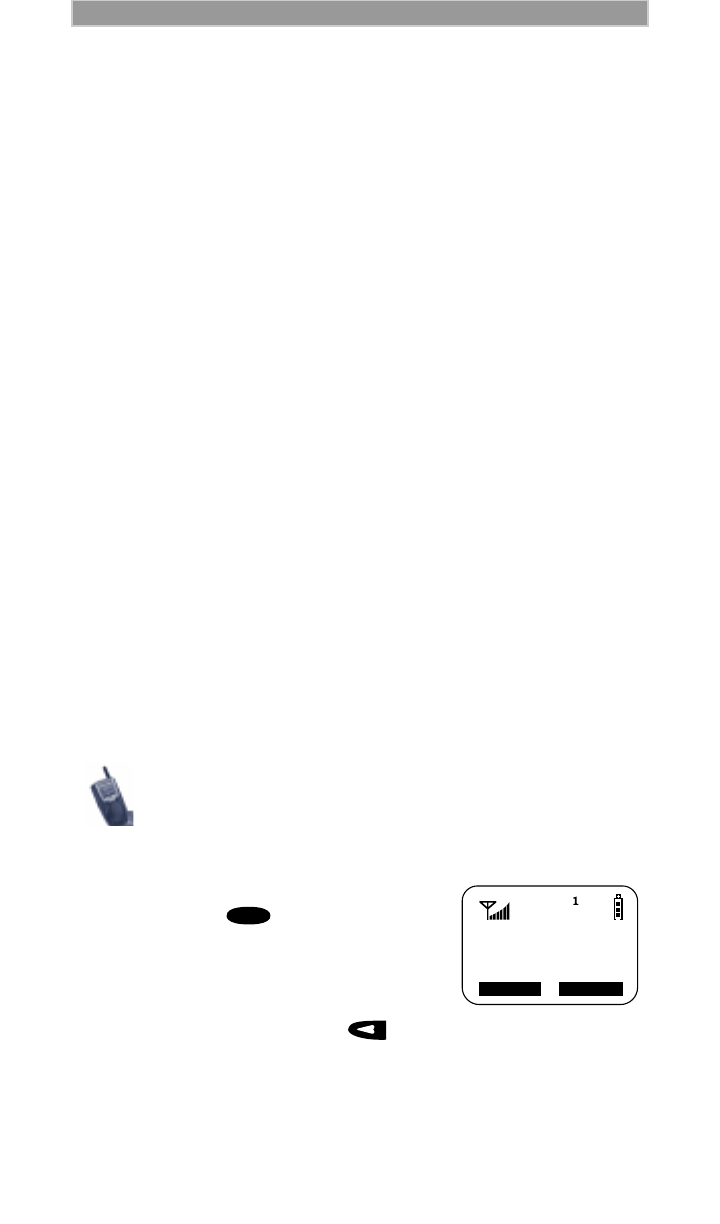
30
D R A F T
PHONE MODE
In addition to making and receiving phone calls in Phone mode, you can
use the speakerphone, forward calls, use call waiting, put calls on hold,
and use three-way calling. Phone Ready is the main screen.
You can also have an optional, additional line on your i1000-A. Your
additional line will have its own unique number so that you can
designate special use for each line.
The menu option choices that appear on the “Phone Ready” screen
depend on whether the cover is open or closed.
Making a Phone Call
You can make a phone call with the cover closed or open.
Cover Closed
To place a call with the cover closed, you must have a stored phone
number. For more information, see “Creating and Using Stored Lists”
on page 20.
1. Select “List”.
2. Use the Volume Control buttons to scroll through your stored
Phone list until you see the desired name or number.
3. Select “Dial”. A call is dialed to the selected number and the
speakerphone is activated. For a private conversation, open the
cover and use the earpiece.
Cover Open
You can place a call by entering the phone number on the keypad.
1. If your i1000-A does not display “Phone
Ready”, press until “Phone
Ready” appears.
2. Using the keypad, enter the desired
number.
If you make a mistake, press once
to move back one digit, or select
“Cancl” to start over.
You can choose other dialing options, such as Scroll,
Name Search, and Speed Dial after you create stored
names and phone numbers. For more information,
see “Creating and Using Stored Lists” on page 20.
Phone Ready
3:15p 08/21
Name Mail
Line1
Mode
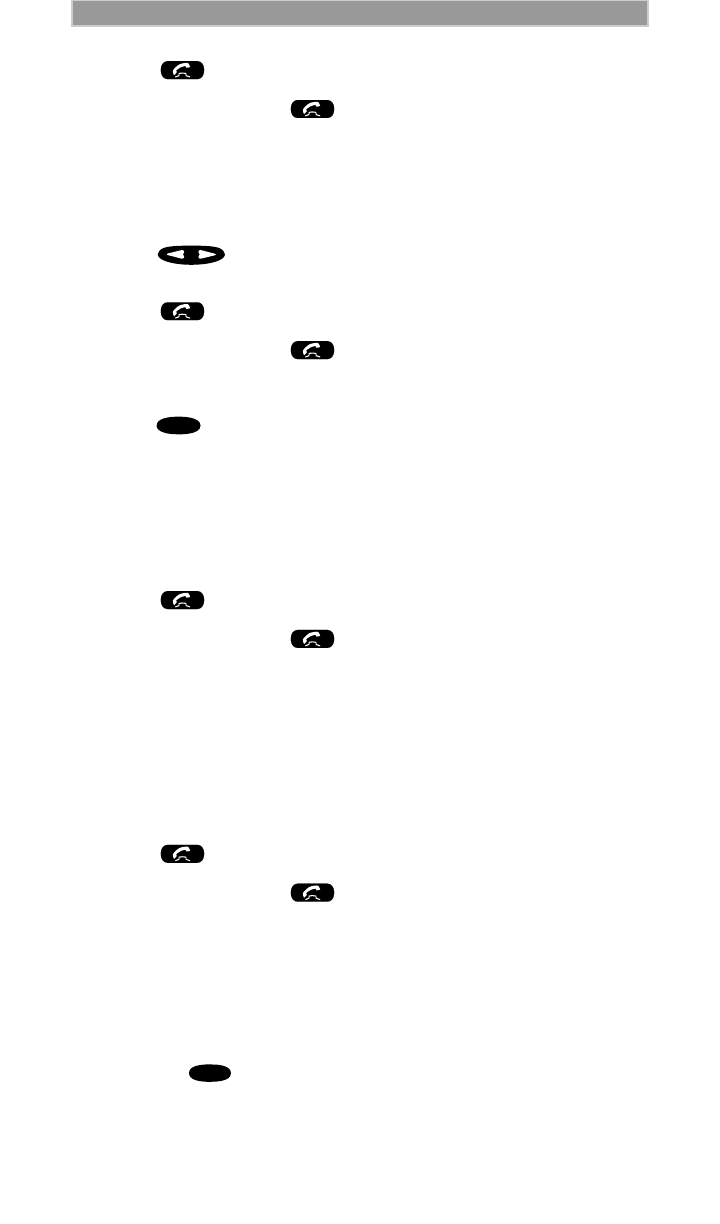
31
D R A F T Phone Mode
3. Press to place the call.
4. To end the call, press or close the cover.
To use Scroll, Speed Dial, or Name Search, names and numbers must be
programmed in your phone. See “Creating and Using Stored Lists” on
page 20.
Scroll
1. Press to scroll backward or forward through the stored
list of numbers and names.
2. Press to place the call.
3. To end the call, press or close the cover.
Speed Dial
1. Press until you see the “Spd#” option on the last line of
your display.
2. Select “Spd#”.
3. Enter the assigned speed-dial number (1-100). You will see the
stored name associated with the speed dial number.
For more information, see “Combined Phone and Private ID
List” on page 20.
4. Press to place the call.
5. To end the call, press or close the cover.
Name Search
1. Select “Name”.
2. Press the key with the first letter of the stored name associated
with the Phone number. The name and phone number appear on
your display.
For more information, see “Combined Phone and Private ID
List” on page 20.
3. Press to place the call.
4. To end the call, press or close the cover.
Emergency Dial
You can dial the emergency phone number if the keypad is locked. If
you are on an active call, you must end it before using the emergency
number.
1. From any mode (Phone, Private, Group, or Net), press
and hold until the unit displays “EMERGENCY”. The
phone then automatically dials the emergency number.
MENU
9
WXYZ
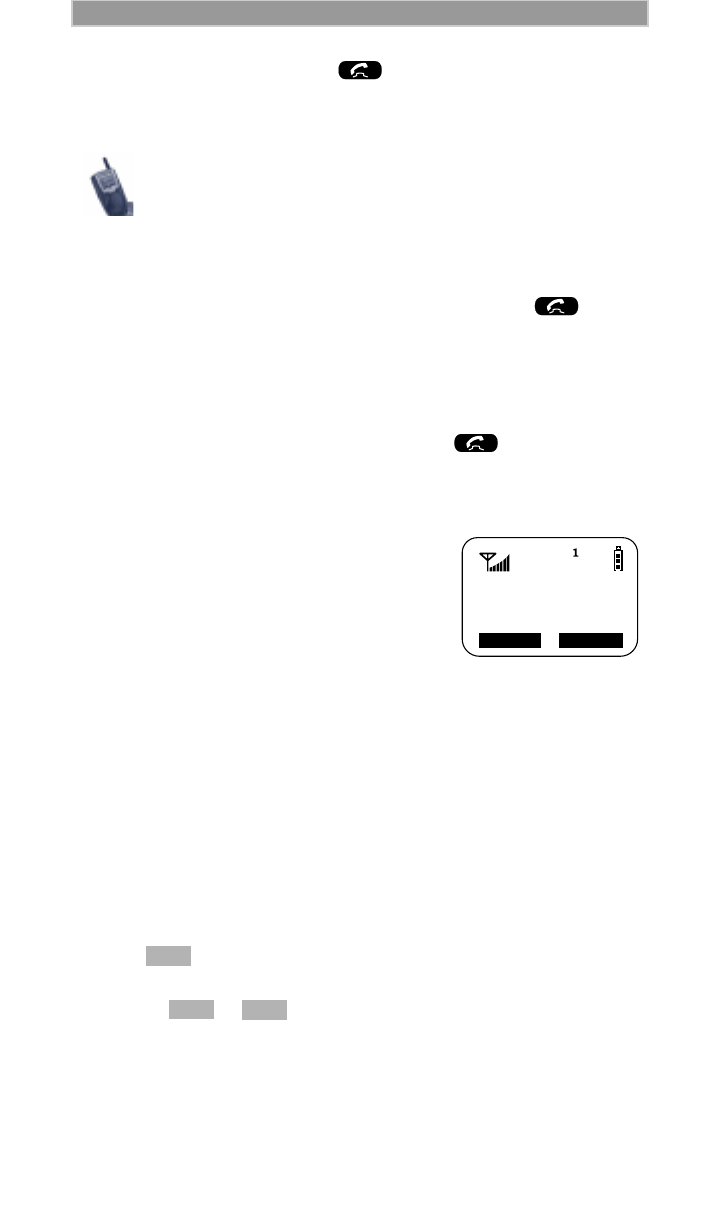
32
Phone Mode D R A F T
2. To terminate the call, press . The emergency phone number
will not be saved as the last number dialed.
Automatic Redial
If you receive a “System Busy, Try Later” message, press to have
your phone automatically redial the number. You will hear a ring-back
tone when the call is successful.
Last Number Redial
To redial the last number that you called, press .
Receiving a Phone Call
When your i1000-A rings or vibrates:
• If you subscribe to caller ID, the caller’s ID
displays. Caller ID is provided by your
carrier.
• If the caller is stored in your Phone List
and the name matches the caller ID, the
name displays.
You can answer a phone call with the cover
open or closed.
Cover Closed
Do one of the following:
• Select “Spkr” to activate the speakerphone.
• Or, open the cover to answer the call using the earpiece.
Cover Open
Do one of the following:
• Press
• Or, press any numeric key (0 through 9).
• Or, press or .
To activate the speakerphone, select “Spkr”.
For more information on the Emergency Dial feature,
contact your carrier.
Incoming
Phone Call
Spkr
End
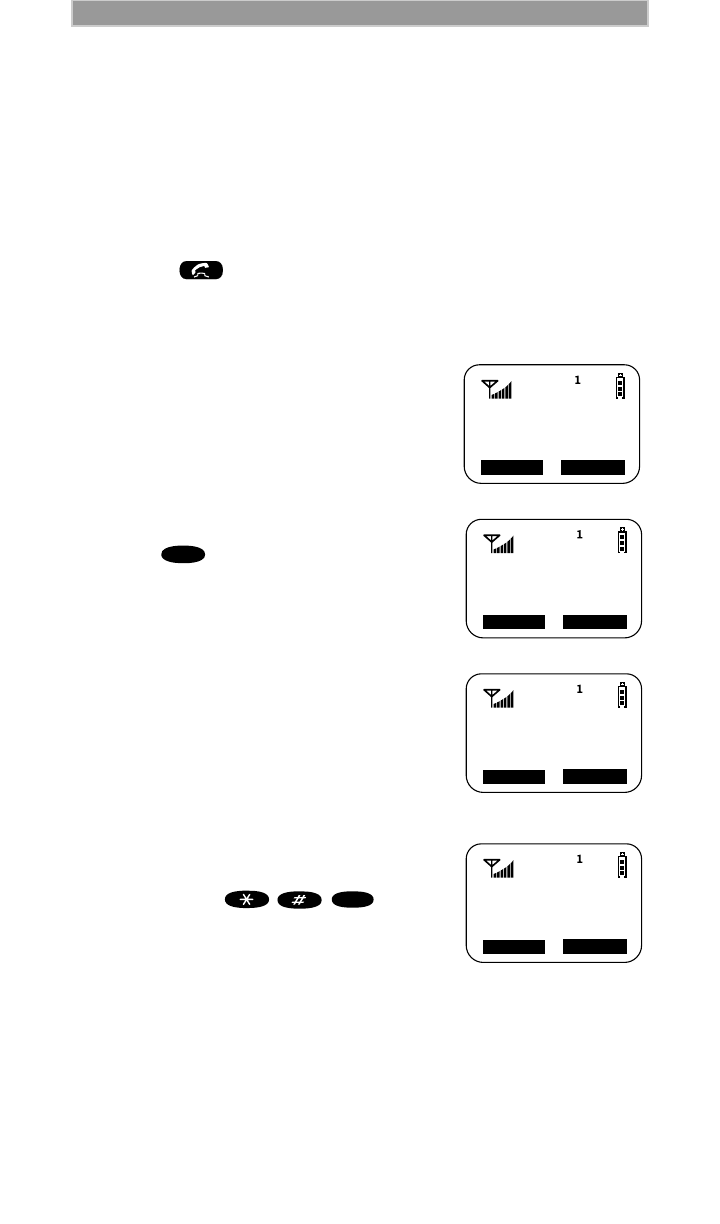
33
D R A F T Phone Mode
Ending a Phone Call
Cover Closed
• Select “End”.
Cover Open
• Close the cover.
• Or, press .
Missed Call Indicator
Your i1000-A notifies you of received, but
unanswered phone calls, then stores the
caller’s phone number in your Last 10
Received Calls list. Your screen displays a
flashing message with the number of missed
calls.
Press any key to clear the flashing indicator.
To retrieve the missed caller’s phone number:
1. Press . The menu options change
to “Calls” and “Forwd#”.
2. Select “Calls”. The Rcvd Calls screen
opens with the number, time, and date
of the last call that you received.
3. Scroll to continue viewing the list.
What Is My Phone Number?
After you turn on your i1000-A, the first
screen displays your phone number.
You can also press , , to
display it.
Selectable Ring Styles
Your phone has nine selectable ring styles. Phones with two phone lines
can use the same or different ring styles for each phone line.
Incoming circuit data calls have a unique, preset ring style which you
cannot change.
Phone Ready
Line1
Mail
Name
2 Rcvd Calls
Phone Ready
Line1
Forwd
Calls
10:42a 11/06
MENU
Rcvd Calls
1:555-2222
10/20 10:30a
Cancl Store
1=Own Ph#
954-555-3434
Exit Edit
1
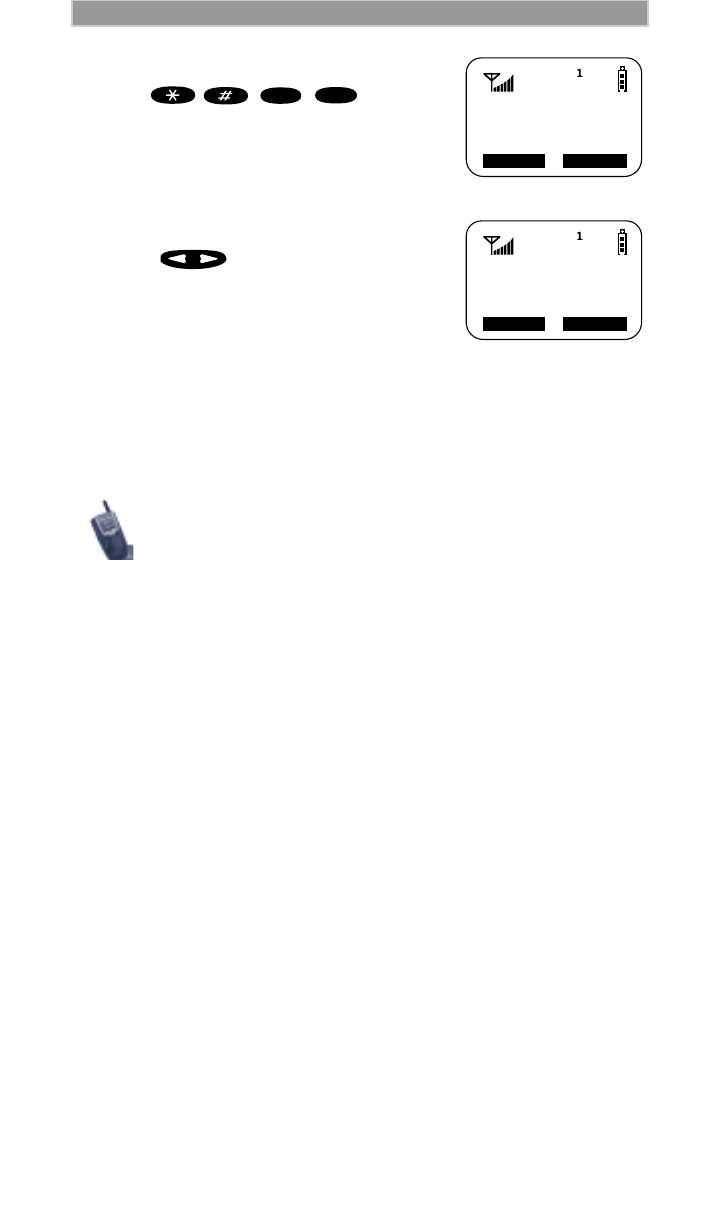
34
Phone Mode D R A F T
To set a ring style:
1. Press , , ,
to access the Programming Menu item
for ring style selection.
The display shows your current ring
style.
2. Select “Ok”.
3. Press to scroll through the
available Ring Styles.
4. To listen to the selected ring style, press
the Volume buttons on the side of the
phone.
Select “Ok” to select the current Ring Style
shown.
To leave the ring style unchanged, select “Cancl”. .
Call Forwarding
Call forwarding lets callers reach you wherever you are. You have two
options: forward all incoming calls (unconditional) or select those
circumstances (conditional) when you want your calls forwarded.
Make sure that the LED is blinking green, which indicates that you are
in a coverage area.
Entering the Number
You can select the call forward number using the direct dial, scroll,
speed dial or name search method. For more information, see “Making
a Phone Call” on page 30.
If you have a second line and want to change the ring
style for the second line:
• Select “Exit”.
• Select the other line and reset the ring style using
the procedure for “Selectable Ring Styles” on
page 33.
31=Set Ring
Style:1
Ok
Exit
3DEF
1
Ring
Style 4
Ok
Exit
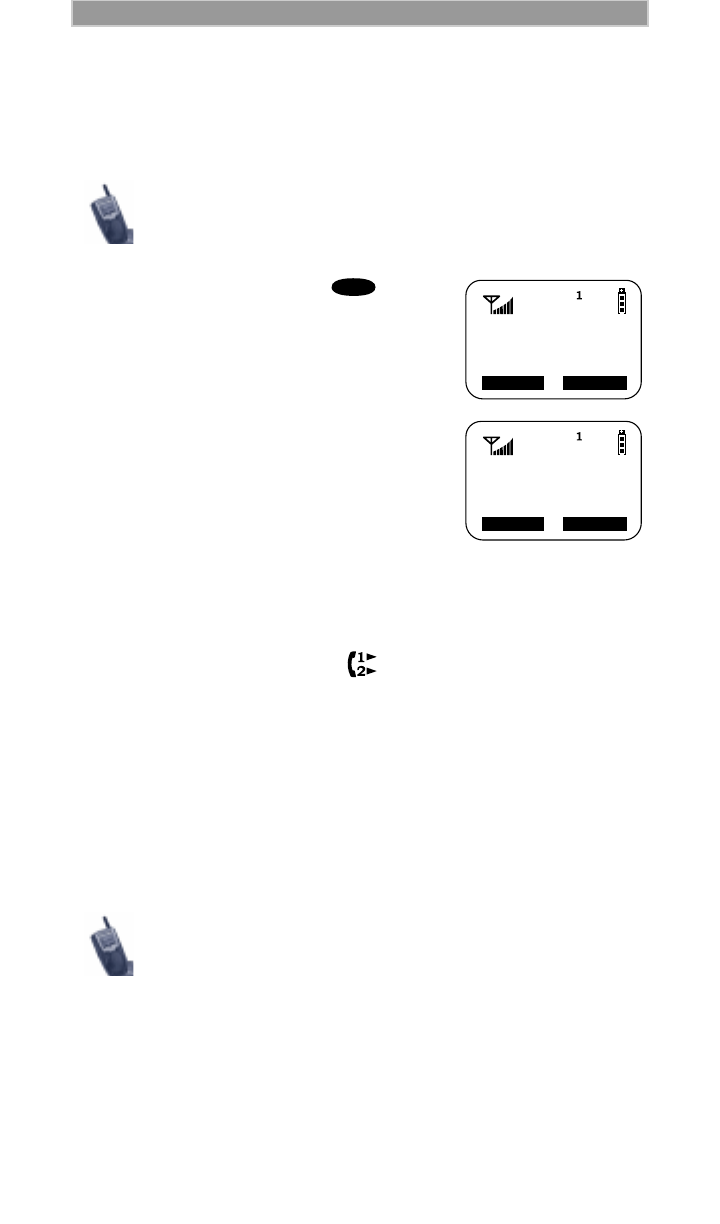
35
D R A F T Phone Mode
Unconditional Call Forwarding
Unconditional call forwarding sends all incoming calls to the designated
number.
1. Within Phone mode, press until
you see “Forwd” on the last line of the
display.
2. Select “Forwd”.
3. To select the number where you want
your calls forwarded, do one of the
following:
• Enter a number.
• Or, press the scroll keys to select a
number from your stored list.
For more information, see
“Combined Phone and Private ID List” on page 20.
4. Select “On”.
5. After the “Please Wait” message displays, select “Exit”.
Notice that the Call Forward icon appears on your display when
Unconditional Call Forwarding is set.
Conditional Call Forwarding
You may want to forward your calls when your i1000-A is:
• Busy on another call or the browser (Busy)
• Not answered (NoAns)
• Outside the service area (NoRch).
When you set unconditional call forwarding, your
phone does not ring.
You must turn off Unconditional Call Forwarding
before you can set Conditional Call Forwarding
options.
Phone Ready
Line 1
Calls Forwd
9:06a 09/03
MENU
Forwd:Off
To:5551212
Exit On
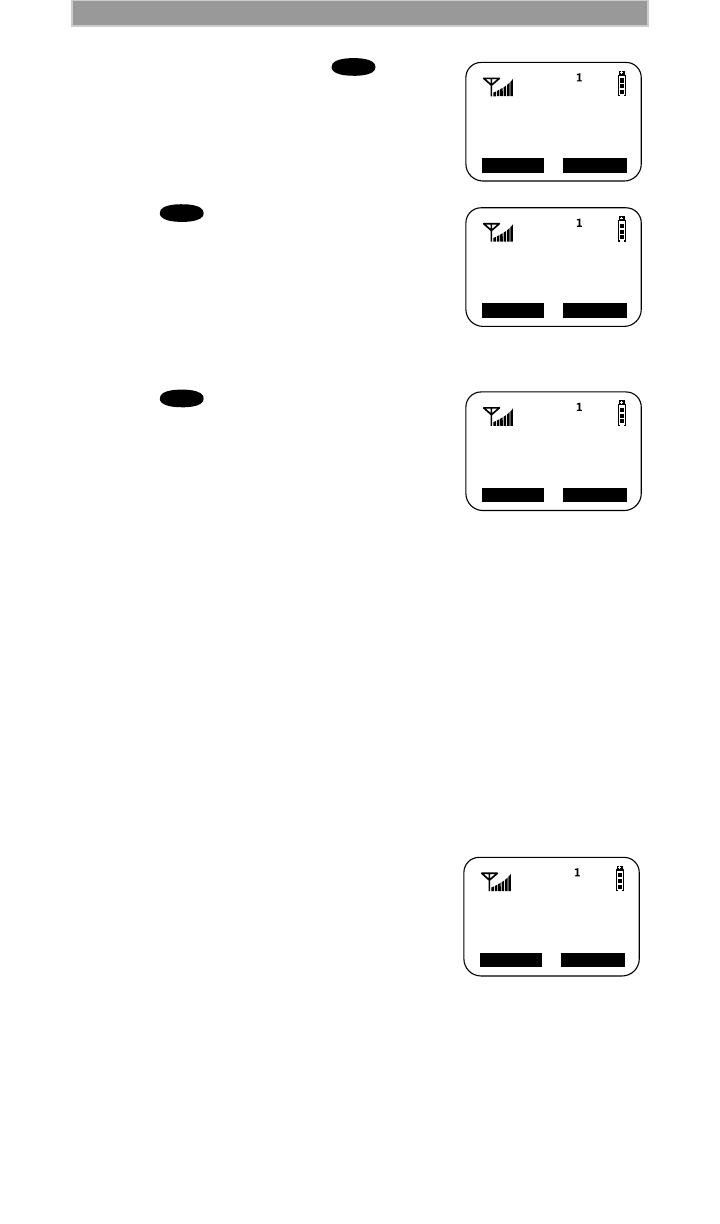
36
Phone Mode D R A F T
1. Within Phone mode, press until
you see “Forwd” on the last line of your
display, then select it.
2. Press once again until you see
“Busy” and “NoAns” on the last line of
your display.
• To forward your calls when your
phone is busy, select “Busy”.
• To forward your calls when
you do not want to answer
them, select “NoAns”.
3. Press again until you see
“NoRch” and “Rcl#” on the last line of
your display.
• To forward your calls when you
cannot be reached, select “NoRch”.
• To forward your calls when you
cannot be reached, select “NoRch”.
4. After you select the call-forward option, either enter the number
where you want your calls to be forwarded, or press the scroll
buttons and select a number.
You can set more than one condition by repeating steps 2
through 6.
5. Select “On”.
6. Select “Exit”.
Call Waiting
Using the Call Waiting feature, you can answer an incoming call when
you are on another call. Call Waiting is on unless you turn it off for a
particular call.
1. After the alert tone, your display shows
the incoming number and asks “Accept
Call?”. To accept the call, select “Yes”.
To decline the call, select “No”.
Phone Ready
Line 1
Calls Forwd
9:06a 09/03
MENU
Forward:Off
To:
Busy NoAns
MENU
Forward:Off
To:
NoRch Rcl#
MENU
555-1212
No Yes
Accept Call?
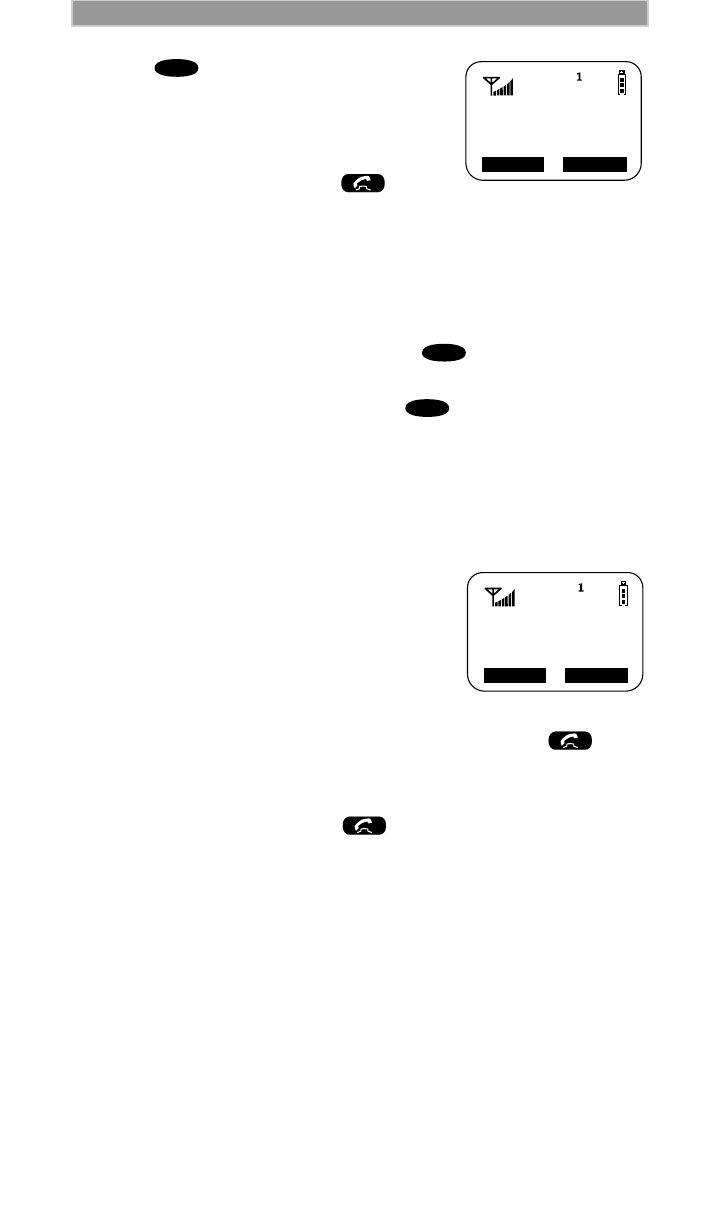
37
D R A F T Phone Mode
2. Press , then select “Hold” to place
the second call on hold and return to the
first call. Selecting “Hold” switches
you between the two calls.
3. To end the active call, press or
close the cover.
Call Hold
When you are on a call, you can place the call on hold and make a
second call.
1. To place the active call on hold, press , then select “Hold”.
You may then answer or place another call.
2. To remove the call from hold, press , then select ”Hold”
again.
The options “3way” and “Spkr” appear only when you are on an active
call.
3-Way Calling
If your carrier provides 3-way calling, you can
combine two ongoing phone calls into one
conversation. This option is available only
when you initiate the second call.
After you place or receive a phone call:
1. Select ”3way”. This action places the
current call on hold.
2. Enter the phone number for the second call and press .
3. When the second call is connected, select “3way” to join the calls.
Both phone numbers and “3way” appear on your screen.
4. To end the 3-way call, press or close the cover.
Additional Phone Line
If your phone is activated with two phone lines, you can switch between
them. To change phone lines, your phone must at the Phone Ready
screen. The following settings are independent for each phone line.
When you enable a setting, it applies only to the active line.
• Ringer Volume
• Auto Answer
• One-minute Beep
• Automatic Display Timer
Call 1-Hold
555-1212
S
Hold Spkr
MENU
MENU
MENU
Phone-In Use
5551212
1:40p 05/08
Hold 3way
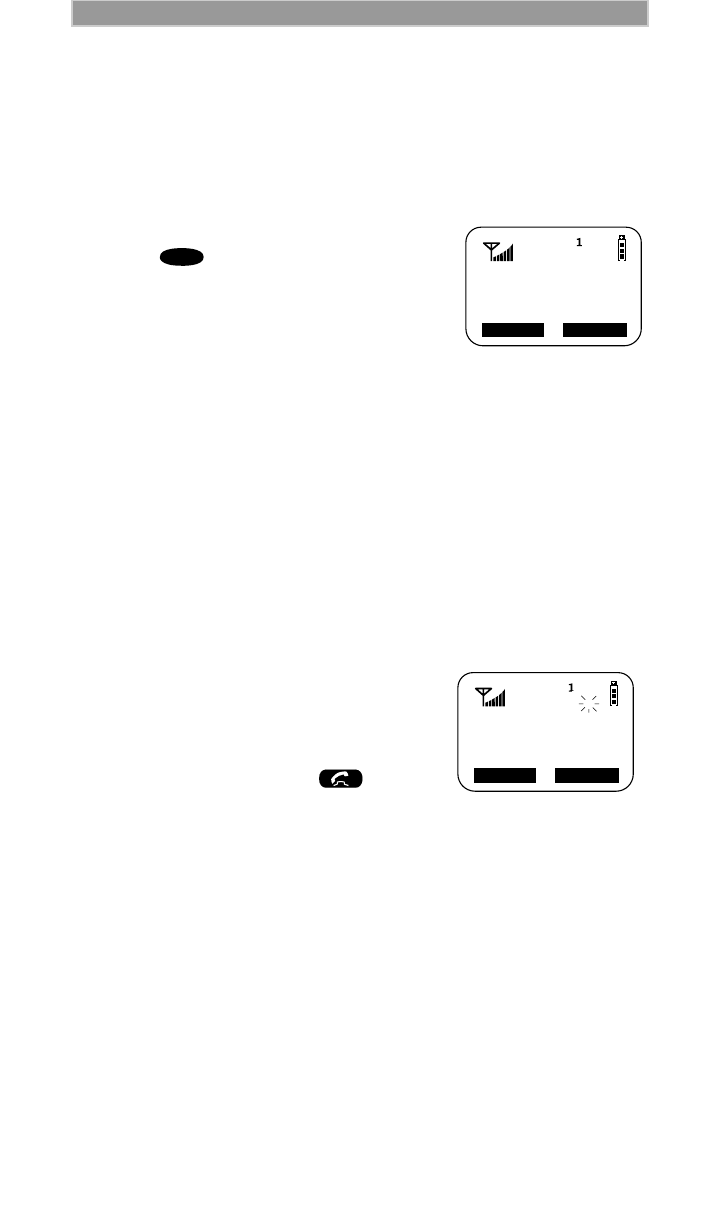
38
Phone Mode D R A F T
• Resettable Timer
• Total Call Timer
• Selectable Ring Styles
• Call Forwarding
Setting the Active Line
At the “Phone Ready” screen:
1. Press until you see
“Line2”. (If you are on Line 2, you will
see “Line1”.)
2. Do one of the following:
• Select “Line2” to activate Line 2
when Line 1 is the active line.
• Or, select “Line1” to activate Line 1 when Line 2 is the
active line.
Outgoing calls will be made on the selected line.
Receiving a Call
You can receive calls on either line, regardless of the active line setting.
• If you receive a call on the currently active line, that icon simply
flashes.
• If you receive a call on the line that is not currently active, the active
line icon remains lit and the alternate line icon flashes.
If you are on a call on one line:
1. Select “Yes” to answer the call on the
other line. Your previous call will be
placed on hold.
2. Do one of the following:
• To end the call, press .
• Or, to place the current call on hold,
select “Hold”.
When the call is terminated, the phone remains active in the last active
line selected.
Phone Ready
Line 1
Wait Line2
1:48p 08/21
MENU
3055551212
Accept Call
On Line 2?
No Yes
1
2
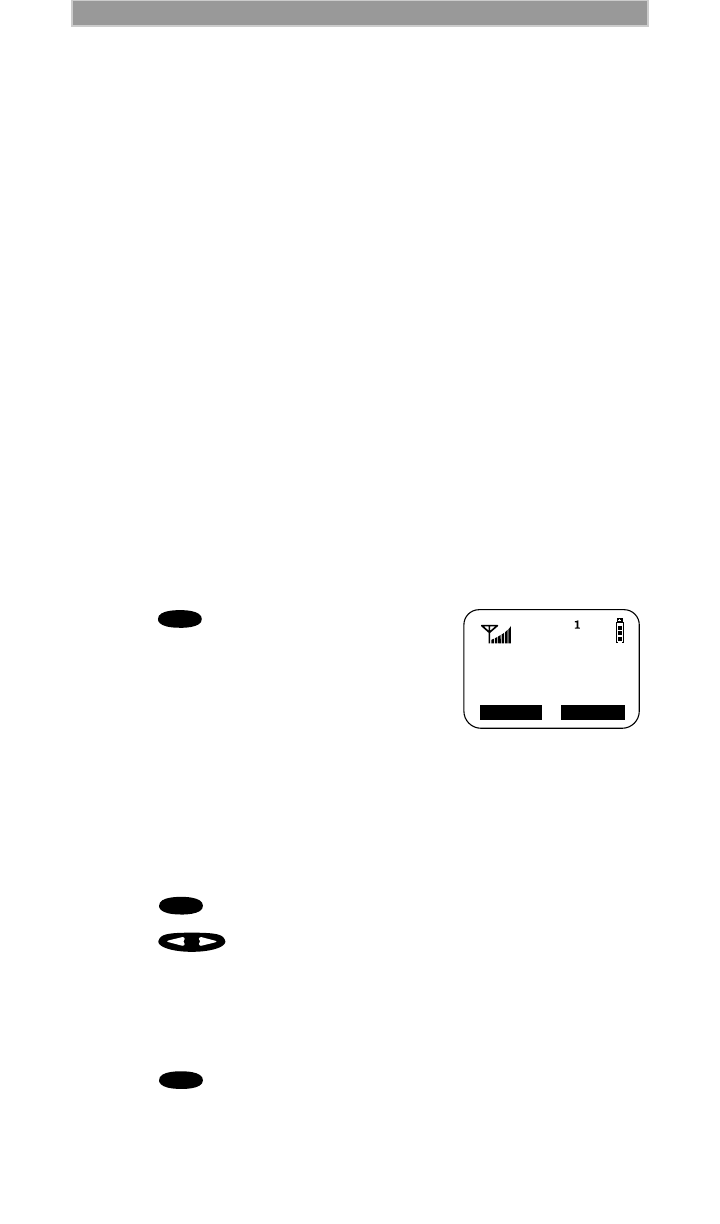
39
D R A F T
PRIVATE MODE
A Private call is a one-to-one conversation between two people. In
Private mode, each i1000-A is identified by a name or a number called a
Private ID.
The menu options that appear on the “Prvt Ready” screen depend on
whether the cover is open or closed.
Making A Private Call
You can make a Private call with the cover closed or open.
Cover Closed
To contact the last Private ID that you called:
1. Select the “Prvt Ready” mode.
2. Press the PTT button.
To select a number from your Private ID list:
1. Select “List”.
2. Use the Volume Control buttons to scroll to the desired name.
3. Press the PTT button.
Cover Open
1. Press until you see “Prvt Ready”
on your display.
2. Use the keypad to enter the Private ID
of the person that you want to reach.
3. To speak, press and hold the PTT
button, wait for the chirp, then speak
into the microphone.
4. To listen, release the PTT button.
To use Scroll or Name Search, you must have a Private ID list. For more
information, see “Combined Phone and Private ID List” on page 20.
Scroll
1. Press until you see “Prvt Ready” on your display.
2. Press to select the person for the private call that you
previously entered into your Private ID list.
3. Press and hold the PTT button, wait for the chirp, then
speak into the microphone.
Name Search
1. Press until you see “Prvt Ready” on your display.
Prvt Ready
JOHN SMITH
8:23p 10/23
Alert Name
Mode
Mode
Mode

40
Private Mode D R A F T
2. Press until you see the “Name” menu option on your
display.
3. Select “Name”.
4. Press the key with the first letter of the name associated with the
Private ID.
5. Press to find the desired name in the list.
6. Press and hold the PTT button, wait for the chirp, then speak into
the microphone.
Receiving a Private Call
When you receive an incoming Private call, you hear a brief chirp-like
tone. Your i1000-A automatically switches to Private mode, and the
Private ID or the name of the caller displays.
1. Your phone must be idle, that is, not busy in an active call or on
the browser.
2. Wait for the caller to finish speaking.
3. Press and hold the PTT button. Begin speaking after you hear the
chirp.
Storing Your Private ID
To store your Private ID in your i1000-A:
1. Press , , . The screen displays the message,
“2=Own Pvt ID”.
2. Select “Ok”.
3. Enter the Private ID provided by your carrier.
4. Select “Store”.
What Is My Private ID?
1. To view your private ID at any time after you store it, press
, , . The screen displays the message, “2=Own
Pvt ID”. The next line displays your Private ID. This is the
number supplied by your carrier, that you must store in your
phone. See “Storing Your Private ID” on page 40.
2. Select “Exit”.
MENU
2
ABC
2
ABC
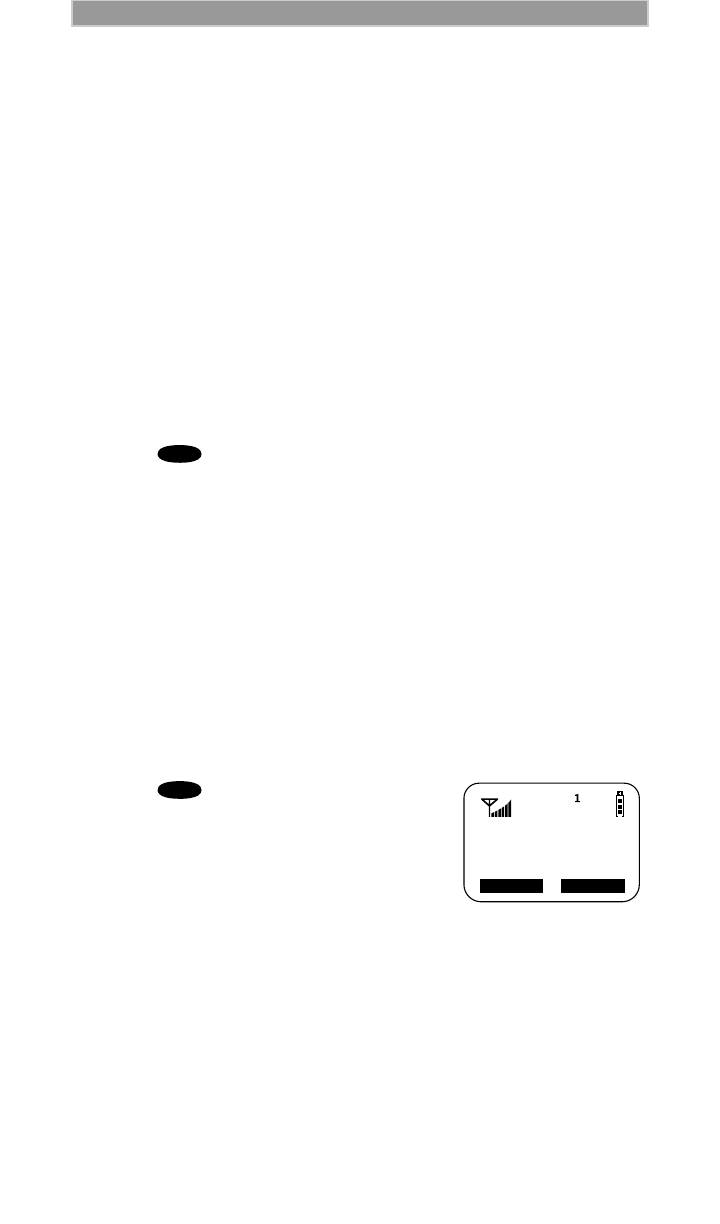
41
D R A F T
GROUP MODE
A Group call allows you to instantly communicate with members of a
selected Talkgroup—a pre-defined set of people who share a
communication need.
Talkgroups appear on your display as numbers or programmed names,
such as Sales Team or Talkgrp10.
The first menu option choices that appear on the Group Ready screen
depend on whether the cover is open or closed.
Making a Group Call
You can make a group call with the cover closed or open.
Cover Closed
To contact the last group that you called:
1. Press until “Group Ready” displays..
2. Press and hold the PTT button. Wait for the chirp then speak into
the microphone.
3. To listen, release the PTT button.
To select a talkgroup from your talkgroup list:
1. Select “List”.
2. Use the Volume Control buttons to scroll to the desired group
name.
3. Press the PTT button.
For more information about talkgroup lists, see “Naming and
Storing a Talkgroup” on page 22.
Cover Open
1. Press until “Group Ready”
displays. Your most recently used
talkgroup displays, for example,
“Talkgrp 10”.
2. To place a call to this talkgroup, press
and hold the Push-to-Talk (PTT)
button. Wait for the chirp, then speak
into the microphone.
3. To listen, release the PTT button.
Mode
Group Ready
Talkgrp 10
11:15a 04/02
Alert Mail
Mode

42
Group Mode D R A F T
Changing Talkgroups
Your phone can store up to 30 pre-defined talkgroups. To change
talkgroups:
1. From Group mode, enter the talkgroup number, or press to
select the talkgroup from your stored talkgroup list. For more
information about talkgroup lists, see “Naming and Storing a
Talkgroup” on page 22.
2. Select “Ok”.
3. To talk, press the PTT button and wait for the chirp.
Receiving a Group Call
When you receive an incoming Group call, you hear a brief chirp-like
tone. Your i1000-A automatically switches to Group mode, and the
talkgroup name displays.
1. Your phone must idle, that is, not busy in an active call or on the
browser.
2. To speak, wait for the caller to finish speaking.
3. Press and hold the PTT button. Begin speaking after you hear the
chirp.
You can receive group calls only in the talkgroups that you have
predefined. For more information, see ““Naming and Storing a
Talkgroup” on page 22”.
Any communication activity within the talkgroup that you select
automatically switches your phone into Group mode.
Area Selection
In Group mode, you can call only those talkgroup members in a specific
location. This is useful when you know where the individuals are
located within the service area.
1. Press until you see “Group Ready” on your display.
2. Press once, then select “Area”.
3. Press to scroll through the targeted areas specified by your
local carrier.
4. Select “Ok” to select the targeted area.
Mode
MENU
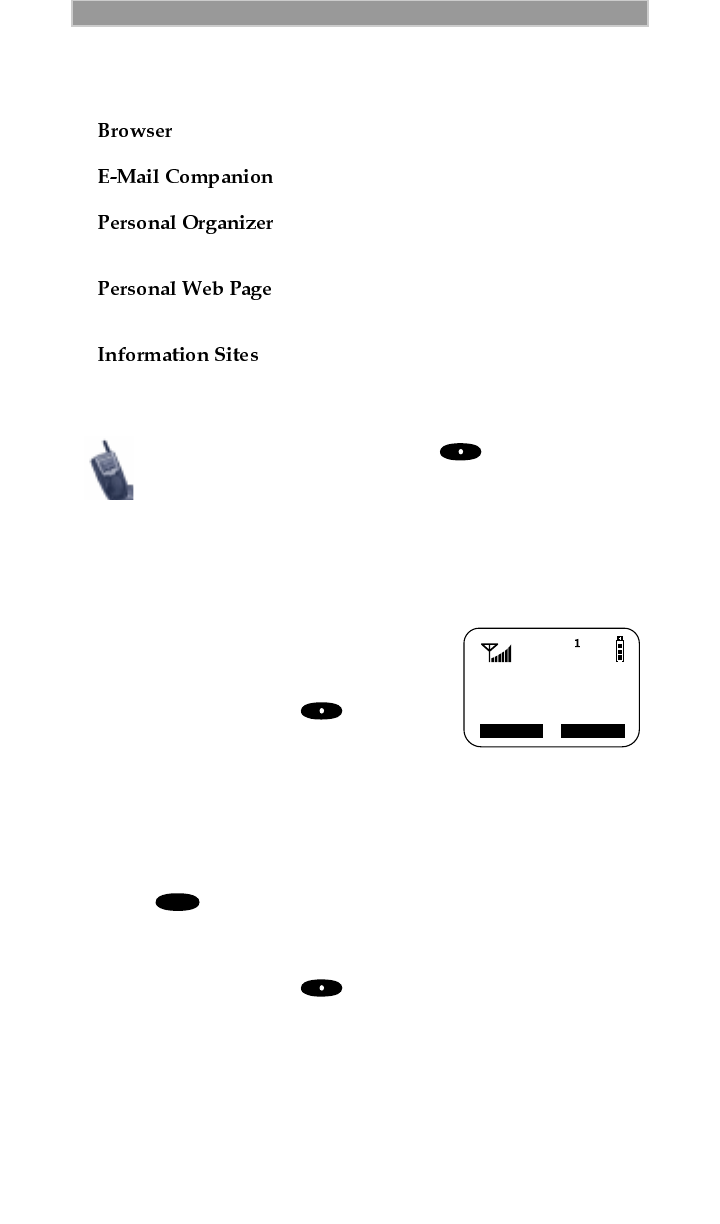
43
D R A F T
NET MODE
Net mode provides wireless access to a variety of online services:
• —to access Internet services.
See “Browser” on page 44.
• —to send and receive e-mail.
See “E-mail Companion” on page 47.
• —to store and use the address book, calendar,
and call list.
See “Using the Personal Organizer” on page 52.
• —to share personal information between your
computer and your i1000-A.
See “Using Your Personal Web Page” on page 59.
• —to reach online information sources.
See “Accessing Information Sites” on page 62.
Accessing Net Mode
Cover Closed
1. Select “Mode” until the Net Ready
screen appears.
2. Do one of the following:
• Select “Net” (press under
“Net”) to go to the browser.
• Or, select “Mail” to go to Voice,
Message, Net, and Fax Mail. You can easily reply to messages
and dial numbers within messages.
For more information, see “Mail Services” on page 64
Cover Open
1. Press from any display screen, and continue pressing until
you see the Net Ready screen.
2. Do one of the following:
• Select “Net” (press under “Net”) to go to the browser.
• Or, select “Mail” to go to Voice, Message, Net, and Fax Mail.
You can easily reply to messages and dial numbers within
messages.
For more information, see “Mail Services” on page 64.
To “select a menu option, press under the menu
option indicated.
Net Ready
11:15a 04/02
Net Mail
Mode
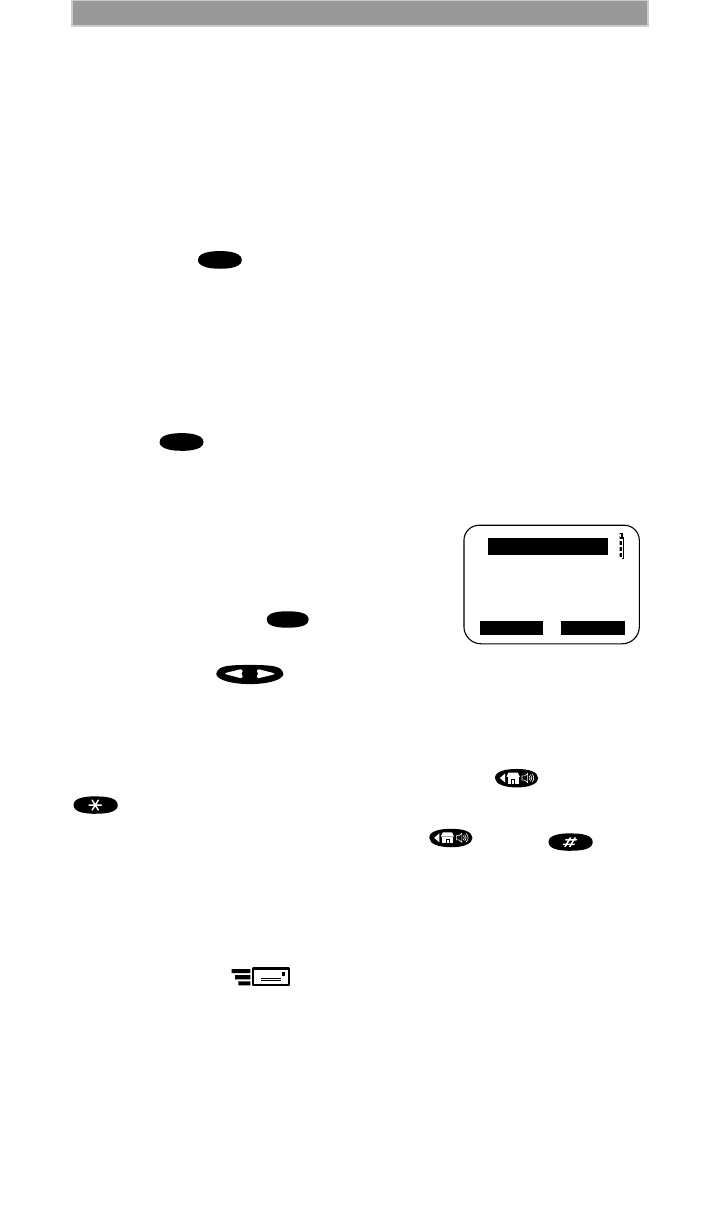
44
Net Mode D R A F T
Exiting Net Mode
Cover Closed
• Select “Mode” to go to the desired mode.
• Or, from Browser, press the Home button at the Home screen.
Cover Open
• Either press or press Home button on Home screen?
• Or, take another action, such as placing a call.
Browser
The Browser provides access to various activities from its Home menu.
To start the browser:
1. Press to switch to the Net Ready screen.
2. Select “Net”. The Home menu opens.
To navigate the browser:
1. Select an option from the Home menu.
You can do this in one of two ways:
• Press the number key that
corresponds to the menu item. For
example, press to open your
calendar.
• Or, press to scroll the list.
When your cursor is on a line, the line appears in reverse text.
2. Select “Ok”.
To go back to a previous display screen, either press or press
once.
To return to the Home menu, press and hold or press .
Net Mode Alerts
Net mode has an alert system that notifies you of new messages with an
alert tone and places a notification in the Alerts list. Also, the New
Message Mail icon appears on your display.
The Alerts list is a menu of the services that have sent you alerts. For
example, you can receive an alert for an urgent message, a stock price
change, or an appointment.
Mode
Mode
2 Email
3 Addresses
4 Calendar
Ok Alerts
1 Make Call
4
GHI
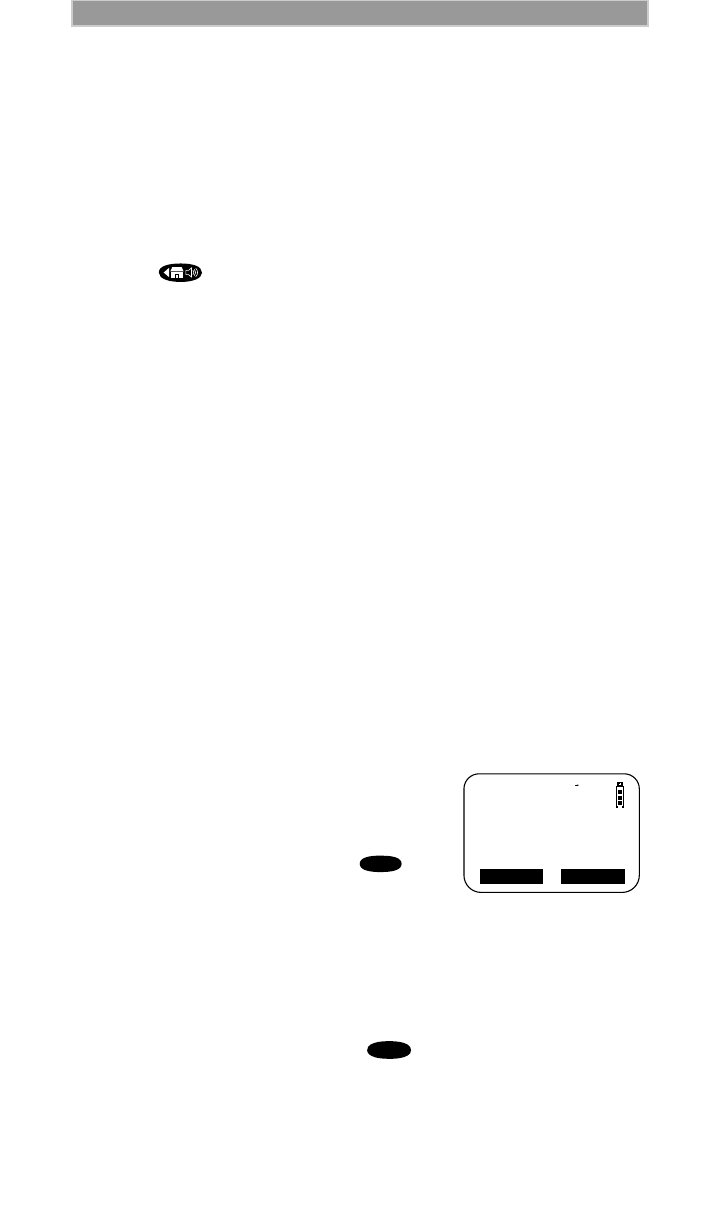
45
D R A F T Net Mode
New messages that you have not read or stored are preceded by an
asterisk (*).
• To check your alert messages immediately, select “Now”.
• To postpone checking your alert messages and to clear the display,
select “Later”. The icon stops flashing but remains on your display to
remind you that you have an unread alert message.
Retrieving Stored Alerts
To view your alerts:
1. Press (the Speaker/Home/Back key) to go to the Home
menu.
2. Select “Alerts”. The Alerts list opens.
3. Select the service related to the alert, then select “Ok”.
After you view the alert information, the asterisk disappears but the
entry remains in the Alerts list. You can view it later or delete it.
Deleting Alerts
To delete an alert from the Alerts list, select the service, then select
“Del”.
Deleting alert services on the Alerts list does not delete the messages
associated with them.
Entering Text in Net Mode
You can enter text to compose e-mail, enter Uniform Resource Locator
(URL) addresses, and reply to messages, as follows.
• Use the alphanumeric keys to enter letters and numbers. When you
are prompted to enter text, you will see the current text entry method
(“Alpha”, “Num”, or “SymX”) on your display.
• Use “SymX” to enter punctuation marks and symbols. To select a
different mode of entry, select “Alpha” or “Num”.
Continue pressing the selected key until the
desired character appears. A slight pause
causes the cursor to move to the next space,
ready for the next character entry.
In this example, to type an N, press
once, then quickly press it again.
For information about specific key functions,
see Table 1, “Special Key Functions,” on page 4.
Changing Browser Settings
To customize browser settings:
1. From any display screen, press until the Net Ready screen
appears.
2. Select “Net”. The Home menu opens.
N
Subject
Ok Name
6
MNO
Mode

46
Net Mode D R A F T
3. Select “Settings”, then select “Ok”.
4. Continue with the instructions for specific settings, such as your
web page login, time zone, or dial.
• Your web page login
5. Select “Set Login”, then select “Ok”.
6. Scroll through the message, then select “Ok”.
7. Enter your user name (it can be any length), then
select “Ok”.
8. Enter your password then select “Ok”. As you enter each
character, it displays as a star ****.
If you make a mistake while entering your name or password,
press to backspace once, or press and hold to
clear the entire entry.
9. Enter your password again, exactly as you entered it in the
previous step.
• Time Zone
5. Select “Preferences”, then select “Ok”.
6. Select “Timezone”, then select “Edit”.
7. Select the name of your time zone, then select “Ok”.
• Dial Settings
5. Select “Preferences”, then select “Ok”.
6. Select “Dial”, then select “Edit”.
7. Select one of the following:
• To get help each time you make a call, select “Always
Prompt”.
• Or, to have the call automatically dialed using the area
code and number, select “Always Dial”.
8. When you finish, select “Ok”.
Clearing the Cache
If you have a navigation problem, it might be helpful to clear the cache.
The cache is a type of memory that holds information so that you can
access it more quickly.
1. From any display screen, press until the Net Ready screen
appears.
2. Select “Net”.
3. Press and hold until you see the Browser menu.
4. Select “Reset”, then select “Ok”.
Mode
MENU
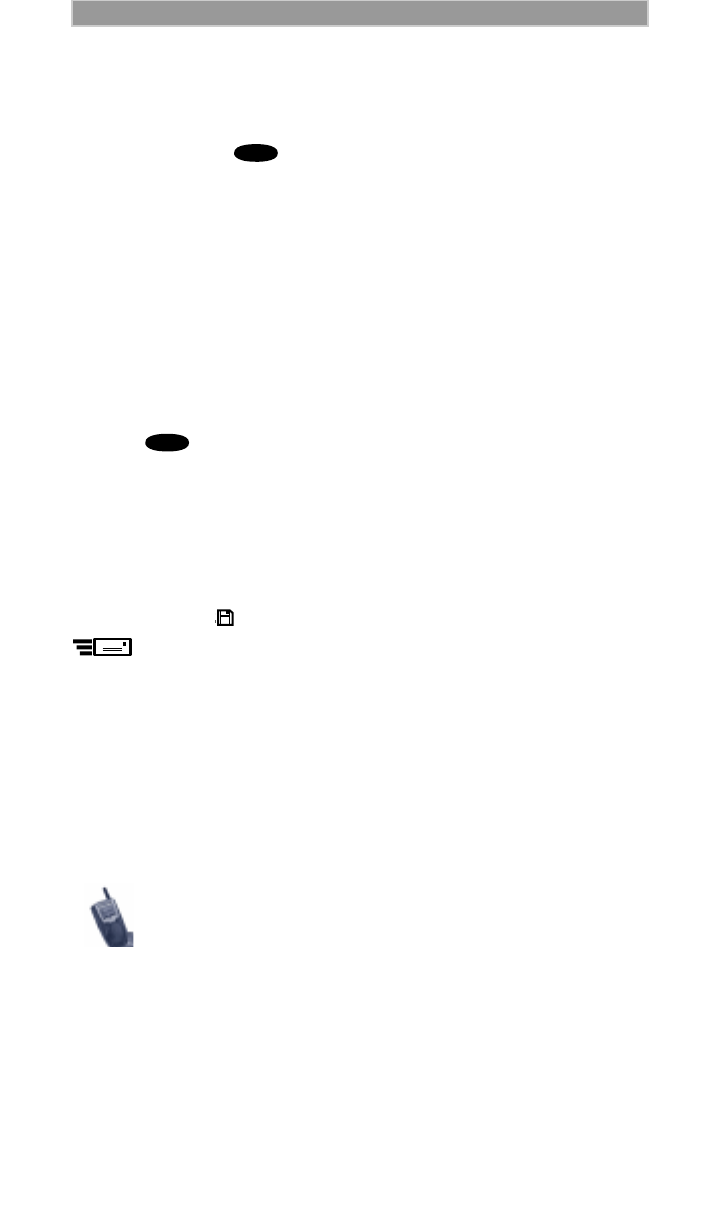
47
D R A F T Net Mode
Finding a URL Name
To go back to a web page at a later time, you can identify and save the
URL address.
1. Press and hold until you see the Settings menu.
2. Select “Show URL”, then select “Ok”.
3. Make a note of the URL address for future reference.
Entering a URL Name
1. Go to the Bookmark menu.
2. Select “Ok”.
Exiting the Browser
To exit the browser, do one of the following:
• Press .
• Or, select “Home” on the Home screen.
• Or, place a Phone, Private, or Group call.
E-mail Companion
Your mailbox receives messages automatically when your phone is
turned on and the icon is lit. You receive an alert tone and the
icon appears on the display.
Your E-mail Account
Your carrier supplies your e-mail address, allowing you to receive, reply
to, forward, and fax e-mail that is sent to your address.
Using the e-mail feature in Net mode, you can send messages to anyone
who has a valid Internet e-mail address.
For information about mail alerts, see “Browser” on page 44.
The first time you access your e-mail inbox, verify your
e-mail name and address, as follows:
• From the E-mail menu, scroll down and select
“Settings”, then select “OK”. This action opens a menu
of settings. Verify your e-mail name, which appears in
brackets next to “E-mail Name”.
• Scroll down and select “Settings”, then select “OK”.
Scroll down and select “View E-mail Address”, then
select “Edit”.
MENU
Mode
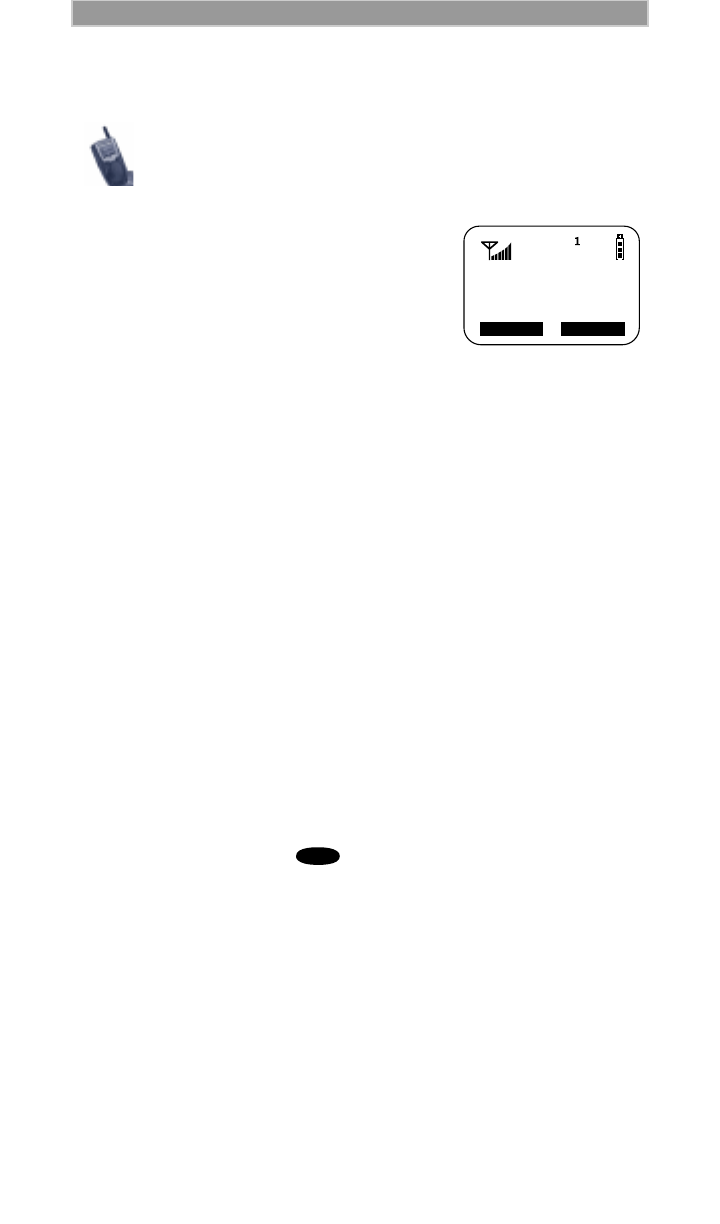
48
Net Mode D R A F T
Retrieving E-mail
When you receive new e-mail, the New Net
Mail screen opens. You can read the mail
immediately or later.
If “More Alerts” appears on the display
screen, you have additional alerts. To view
them, go to the Alerts list.
To go to the Alerts list:
1. From the Home menu.
2. Select “Alerts”. The Alerts list opens.
3. Select the service related to the alert, then select “Ok”.
To read new e-mail immediately:
1. At the New Net Mail screen, select
“Now”. The list of saved e-mail messages opens.
The service with new mail has an asterisk (*) next to it.
2. Select the new message that you want to read, then select “OK”.
If the message is longer than one screen, an arrow appears on the
last line of the display screen.
3. To read hidden lines, press the Volume Down button and scroll
down.
4. When you finish, select “Exit”.
To read stored or unread e-mail later:
1. At the New Net Mail screen, select “Later”. The New Net
Mail screen closes and you return to the screen where you
received the alert.
When you are ready to read your mail:
2. From any mode, press until you see the “Mail”
option, then select it.
3. Select “NetMail”, then select “Ok”.
4. Highlight the type of message (such as mail or fax) associated
with the alert, then select “OK”. The Message Inbox opens.
5. Select the new message that you wish to read.
If the message is longer than one screen, an arrow appears on the
last line of the display screen.
6. To read hidden lines, press the Volume Down button and scroll
down.
Although you cannot read e-mail attachments on your
i1000-A, you can forward them to your computer.
New Net Mail
Later Now
Email
MENU

49
D R A F T Net Mode
7. When you finish, select “Exit”.
Replying to E-mail
To reply to a message:
1. From the Message Inbox or Saved list, select the desired message.
You can reply to a message while you are reading it.
2. To display a list of options, select “Act”.
3. Select “Reply”, then select “Ok”. The system automatically
creates a reply message and enters the e-mail address of the party
to whom you are responding.
If the message contains embedded responses, see "Using EZReply™".
Using EZReply™
EZReply is a quick method of responding to e-mail messages. The
sender enters a list of response options and phone numbers. To reply,
simply select an option or a phone number.
Receiving EZReply Messages
The sender must follow these guidelines:
• Send the message to your i1000-A address.
• Precede each response option with @@.
• If the sender is using a computer, enter only one option per
line. If the sender is using an i1000-A, this is not required.
• Precede each phone number with @# and include 1 and the
area code, if they are required for your return call.
To respond to an EZReply message:
1. Select “Act”.
2. Select “Reply”, then select “Ok”. The list of embedded responses
appears.
3. Do one of the following:
• Select a response or a phone number. Use the Volume Up and
Down buttons to see all the response options.
• Or, select “Enter Msg...” and compose your own response.
4. Select “Ok” to send your response or dial the phone number. At
the confirmation message box, select “Ok”.
While you are reading a message, you can select
“Act” to see a list of options, including replying,
forwarding, saving, and faxing the current message.

50
Net Mode D R A F T
Sending EZReply Messages
You can compose and send EZReply messages from your i1000-A.
EZReply automatically adds “Enter Msg...” as the last option. The
recipient can select option 5 to enter a message rather than select one of
the first four options.
Deleting Messages
To delete messages that you no longer need:
1. From the inbox or saved message list, select the message that you
want to delete.
2. Select “Act”.
3. Select “Delete” then select “Ok”.
Special Features
Special features include sending e-mail messages from your web page,
faxing and printing e-mail messages, automatically forwarding e-mail
messages to another number, saving addresses, and viewing e-mail
message headers.
Sending E-mail Messages from Your Web Page
You can send an e-mail message to anyone who has an iDEN data-
enabled phone.
To send an e-mail message from your web page:
1. Go to your web page.
2. Select “Send a Message” to display the mail form.
3. Complete the form and select “Send”.
Faxing and Printing E-mail Messages
You can print your e-mail messages by faxing them to your printer. Your
faxing capability depends on your carrier’s services.
To fax an e-mail message:
1. From the e-mail inbox or saved list, select the e-mail messages
that you want to fax.
2. Select “Act”. A list of options opens.
Compose this message:
Got time to meet tomorrow?
@@Yes, 1-2
@@Yes, 2-3
@@Try for next week
@#1-954-555-1212
To create this message:
Got time to meet tomorrow?
1>EZReply:Yes, 1-2
2 EZReply:Yes, 2-3
3 EZReply:Try for next week
4 Call: 1-954-555-1212
5 Enter Msg...

51
D R A F T Net Mode
3. Scroll down and select “Fax Msg”, then select “Ok”. When
requested, enter the fax number, starting with the area code. Then
select “Ok”. The recipient screen appears with your name.
4. If you are sending the fax to someone other than yourself, change
the recipient’s name, then select “Ok”.
5. Optional: Enter comments for the fax cover sheet.
6. Select “Ok”.
AutoForward
To keep a copy of all sent e-mail and store it in your inbox :
1. From the Home menu, select “Email”. The e-mail inbox opens.
2. Select “Settings” then select “Ok”.
3. Select “Autofwd” then select “Edit”.
4. Enter the forwarding e-mail address, then select “Ok”.
Saving Addresses
To save the address of a received e-mail message and store it in your
Address Book:
1. From the inbox, select the message.
2. Select “Act” to see the list of options.
3. Select “More” to see additional options.
4. Select “Store Address”, then select “Ok”.
5. Optional: To edit a field, select the field then select “Edit”.
Viewing Headers
To see the complete message header:
1. From the inbox, select the desired message.
2. Select “Act”, then select “More”.
3. Select “Header”, then select “Ok”. The complete message header
appears.
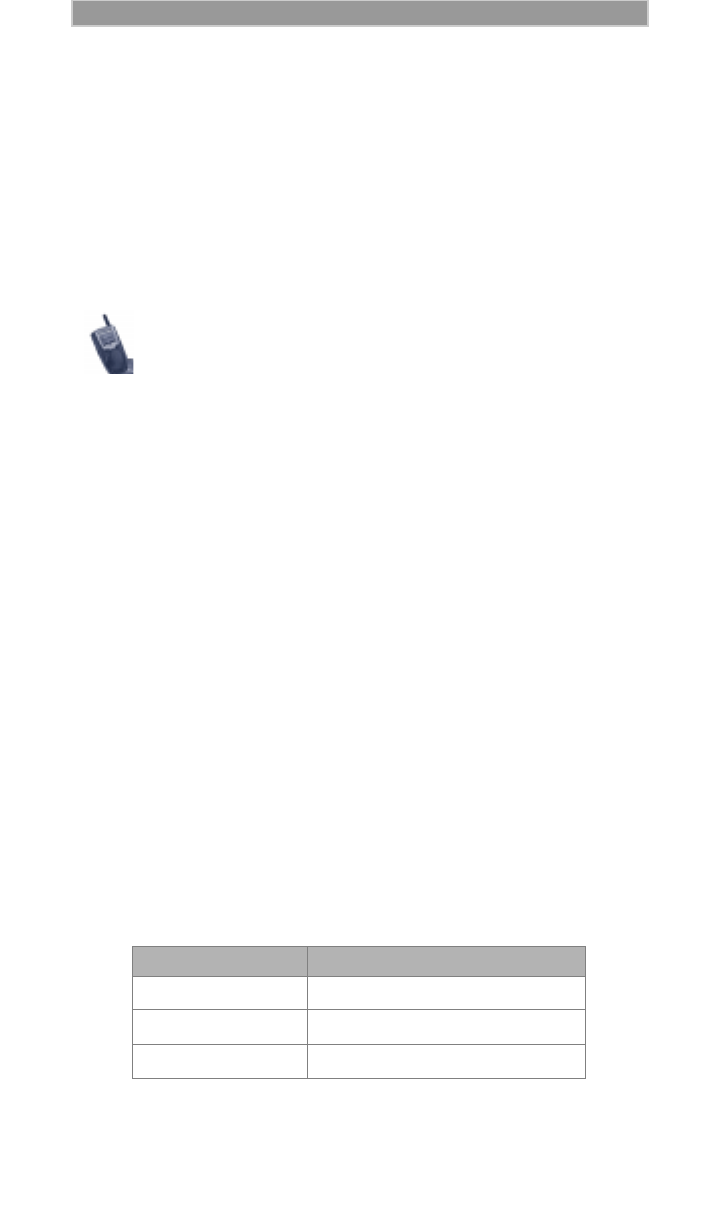
52
Net Mode D R A F T
Using the Personal Organizer
The Personal Organizer stores information that most people use on a
daily basis. It has three components, which appear on the Home menu:
• Addresses
• Calendar
• Call List
Addresses
The Addresses option provides an address book for your frequently
called names and numbers.
To open the Address Book:
1. From Net mode, select “Net”. The Home menu opens.
2. Select “Addresses”, then select “Ok”. The Address
Book menu opens. If this is the first time that you are going to the
Address Book, it will be empty. You must add your own entries to it.
3. Continue to follow the instructions for Address Book options,
such as adding names, sending e-mail to a name in the address
book, and using the Top 9 list.
• Adding Names
4. Do one of the following:
• If you see “Act”, select it. A list of options opens.
• If you see “New”, select it, then select “Ok”.
5. Select a field to edit, then select “Edit”.
The following fields are available for editing.
You can use your personal web page to:
• Update your Address Book.
See “Using Your Personal Web Page to Update the
Address Book” on page 60.
• Download addresses to your Phone list.
See “Downloading Addresses to Your Phone List” on
page 61.
Table 7: Available Fields for Editing
Field Label Description
First First name
Last Last name
Company Company name

53
D R A F T Net Mode
6. When you finish editing a field, select “Ok”.
7. To edit other fields, repeat steps 6 and 7.
8. To add the contact information to the Address Book, select
“Save”.
• Finding Names in the Address Book
4. Select “Act”.
5. Select “Find” then select “Ok”.
6. Enter the first few letters of the last name, first name, or
company name, then select “Ok”.
• Calling a Name in the Address Book
4. Select the desired name in the address list or select “Find”.
5. Select “View”. The phone numbers for the selected name
appear.
6. Select a phone number, then select “Ok”. The phone number
is automatically dialed.
Be sure to include the area code in phone number
fields.
W Work phone number
H Home phone number
P Pager number
C Cellular phone number
F Fax number
E E-mail address
H2 Additional home phone
number
Company Addr Address of company
Home Addr Home address of contact
Table 7: Available Fields for Editing

54
Net Mode D R A F T
• Sending E-mail to a Name in the Address Book
4. Select the desired name in the address list or select “Find”.
5. Select “View”. The phone number for the selected name
appears.
6. Scroll to view and select an e-mail address, then select “Ok”.
The e-mail display screen opens.
7. To continue, select “Ok”. The e-mail is automatically
created, ready for you to enter your message.
• Editing Names in the Address Book
4. Select the name that you want to change, then select “Act”.
5. Select “Edit”, then select “Ok”.
6. Select the field that you want to edit, then select “Edit”.
7. When you finish editing the field, select “Ok”.
8. To edit other fields, repeat steps 6 and 7.
9. To keep the changes in the Address Book, select “Save”.
• Deleting Names from the Address Book
4. Select the name that you want to delete, then select “Act”.
5. Select “Delete”, then select “Ok”. A confirmation message
appears.
6. To delete the name, select “Yes”, then select “Ok”.
• Sorting Addresses
4. Select “Act”.
5. Scroll down and select “Settings”, then select “Ok”.
6. Select “Sort by” then select “Edit”.
7. Select “Last” (last name), “First” (first name), or
“Company”, then select “Ok”. The addresses are listed
according to the field that you selected.
If you select a phone number and the dialing mode is
set to:
“Always Prompt”, a list of dialing optins opens. Make
your selection, then select “Ok”.
“Always Dial”, the system dials the number
immediately after you select “Ok”. However, to get a
listing of dialing options, you can select “Act”, choose
your option, then select “Ok”.

55
D R A F T Net Mode
• Adding a Name to the Top 9 List
If you have a large number of addresses in your Address Book,
the Top 9 list places the nine most frequently called names at the
top of the list.
4. Select “Act”.
5. Select “Settings”, then select “Ok”.
6. Select “Top 9”, then select “Edit”.
7. Select “Show”, then select “Ok”.
8. In the Address Book, select the name that you want to add,
then select “Act”.
9. Scroll down and select “Add to Top 9”, then select “Ok”.
10. Assign a number between 1 and 9 to indicate the position
where this address will reside on the Top 9 list.
If a name already occupies the position that you assigned,
that name will be replaced with the new name in the Top 9
list. However, the old name will remain in your Address
Book.
11. Select “Ok”. The Top 9 list always displays nine places even
if some are empty.
• Showing or Hiding a Name in the Top 9 List
4. Select “Act”.
5. Select “Settings”, then select “Ok”.
6. Select “Top 9”, then select “Edit”.
7. Select “Show” or “Hide”, then select “Ok”.
• Removing a Name from the Top 9 List
4. Select “Act”.
5. Scroll down and select “Delete”, then select “Ok”. A list of
options appears.
6. Select “Remove from Top 9”. To delete the name from the
Top 9 List and the Address Book, select “Delete Address”.
Then select “Ok”.

56
Net Mode D R A F T
Calendar
Your calendar is always available to you through your i1000-A. You can
use your i1000-A or your personal web page to store and retrieve
appointments and schedules.
To open your calendar:
1. From Net mode, select “Net”. This action opens the Home menu.
2. Select “Calendar” then select “Ok”. Your calendar opens. If this is
the first time that you are going to the Calendar, it will be empty.
You must add your own entries to it.
3. Continue the instructions for Calendar options, such as adding,
changing, or deleting appointments and faxing your calendar.
• Adding Appointments
4. Select “Act” to see a list of options.
5. Select “New”, then select “Ok”. A list of fields
appears.
6. Select “Appt”, then select “Edit”.
7. Enter a description for the appointment, then select “Ok”.
The list of fields returns.
Entering the Date:
8. Select “Date”, then select “Edit”.
If you select “Today” or a day of the week, the date is
automatically entered when you select “Ok”.
If you select “Other”, you are prompted to insert the date in
the MM/DD/YY format (the year is optional).
9. When you enter enough information, the “Back” option
changes to “Ok”. When you finish entering the date, select
“Ok”.
Entering the Time:
10. Select “Time”, then select “Edit”.
You are prompted to insert the start time in the HH:MM[A/P]
format.
You can also use your personal web page to update
your calendar. For more information, see “Using Your
Personal Web Page to Update the Address Book” on
page 60.

57
D R A F T Net Mode
11. When you enter enough information, the “Back” option
changes to “Ok”. When you finish entering the time, select
“Ok”.
Entering the Length of the Appointment:
12. Select “Length”, then select “Edit”.
13. Do one of the following:
• Select from the list of common meeting lengths.
• Or, to specify a time, select “Other”, then select “Ok”.
Enter the meeting length.
14. When you finish, select “Ok”.
15. Optional: To specify repeating appointments, select
“Repeat”, then select “Edit”. Select the frequency, then select
“Ok”.
Saving the Appointment:
16. When you finish editing appointments, select “Save”.
• Viewing Appointments
4. Do one of the following:
• From the appointment list, select the desired entry or day,
then select “View”. Scroll down to see all related
information.
• Or, enter the date by selecting “Other”, then selecting
“Ok”. Enter the date, then select “Ok”.
• Changing Appointments
4. Select the appointment that you want to change, then select
“Act”.
5. Select “Edit”, then select “Ok”.
6. Select the field that you want to edit, then select
“Edit”.
7. When you finish editing the field, select “Ok”.
8. To change additional fields, repeat steps 6 and 7.
9. When you finish editing fields, select “Save”.
• Deleting Appointments
4. Select the appointment that you want to delete, then select
“Act”.
5. Select “Delete”, then select “Ok”. A confirmation message
appears.
6. Select “Yes”, then select “Ok”.
• Changing the Calendar View
4. Select “Act”. A list of options opens.

58
Net Mode D R A F T
5. Scroll down and select “Settings”, then select “Ok”.
6. Select “View”, then select “Edit”.
7. Select “1 Day”, “7 Days”, or “30 Days”, then select “Ok”.
• Faxing Your Calendar
Faxing is a convenient way to print your schedule. Faxing
services are set by your carrier and may vary.
4. Display the day or the week that you want to start printing,
then select “Act”. A list of options opens.
5. Scroll down and select “Fax”, then select “Ok”.
6. Select the portion of your schedule that you want to fax, then
select “Ok”.
7. Enter the fax number including the area code, then select
“Ok”.
8. Enter the recipient’s name, then select “Ok”.
9. Optional: Enter comments for the cover sheet.
10. To send the fax, select “Ok”. A confirmation message
appears. To return to the Act menu, select “Ok”.
You can check the fax status by going to the Home menu,
selecting “Directory”, then selecting “Fax Status”.
Call List
The Call List is your phone call “to do” list. It holds the names and
numbers of people that you intend to call.
To display the Call List:
1. From Net mode, select “Net”. This action opens the Home menu.
2. Scroll down and select “Call List”, then select “Ok”. The Call List
opens.
3. Continue to follow the instructions for Call List options, such as
adding names and numbers, calling a number on the Call List, and
removing Call List names and numbers.
• Adding Names and Numbers
4. Select “Ok”. A list of options opens.
5. Select “New”, then select “Ok”. A screen opens with empty
fields, “First:”, “Last:”, and “Num:”.
6. Select “First:”, then select “Edit”.
Be sure to include the area code when you enter a
phone number.

59
D R A F T Net Mode
7. Enter the first name, then select “Ok”.
8. Repeat steps 6 and 7 for “Last:” and “Num:”.
9. When you finish, select “Save” to add the new entry to your
Call List.
• Calling a Number on the Call List
4. Scroll down and select the desired number.
5. Select “Call”.
6. If you are prompted for the area code, either enter it or select
another option.
7. To start the call, select “Ok”.
• Changing the Status of a Call
4. Scroll down and select the desired Call List entry, then select
“Act”.
5. Select “Ok”. A list of possible status assignments appears.
6. The Call List opens. A symbol appears in front of the call to
indicate its status. The symbols are:
7. Select a status from the list, then select “Ok”.
• Changing Names or Numbers
4. Scroll down to find the desired name or number, then select
“Act”.
5. Scroll down and select “Edit”, then select “Ok”.
6. Select the desired field, then select “Edit”.
7. Make the changes, then select “Ok”.
8. When you finish, select “Save”.
• Removing Call List Names and Numbers
4. Select “Act”. A list of options opens.
5. Scroll down and select “Delete All”, then select “Ok”. A
confirmation message appears.
6. Select “Yes”, then select “Ok”.
Using Your Personal Web Page
Your carrier provides you with a personal web page on the Internet.
Your web page enables you to share information between your i1000-A
and your computer. Any changes that you make affect both instantly.
To access your web page, you need a computer installed with:
BBusy, call back
CCompleted
MLeft message

60
Net Mode D R A F T
• Netscape Navigator™ version 3.0, or later
• Or, Microsoft Internet Explorer™ version 3.0 or later
To use the Personal Organizer and Bookmarks from your web page, you
need a computer installed with:
• Netscape IFC version 1.0 or later
You can update your address book, phone list, and calendar as well as
change browser settings and send urgent e-mail messages.
You can also bookmark useful services on your computer. Then, you can
quickly access them from the Bookmark list on the Home menu on your
i1000-A the next time that you need them.
For more information about your personal web page, contact your
carrier.
Using Your Personal Web Page to Update the Address
Book
You can use your computer web page to download (transfer) addresses
to your i1000-A.
To update the Address Book from your web page:
1. From your computer: Go to your web page and log in.
2. Click “Personal Organizer”. The Personal Organizer web page
opens.
If the Personal Organizer web page does not display properly, be
sure that you have the correct software installed on your
computer, as listed in “Using Your Personal Web Page” on
page 59.
3. Click the “Address Book” tab. The Address Book opens.
4. Continue with the instructions for adding a new contact or
changing an existing contact.
• Adding a new contact:
5. Select “New”. Enter the information in the text fields.
6. To view all the text fields, select the Phone, Business, and
Home tabs. Use the tab key to move between text fields.
7. When you finish, press Enter to insert your changes, then
select “Save”. The Address Book closes.
• Changing an existing contact:
Be sure to save your changes before you leave the
current Address Book page. If you select the
browser’s Back, Go To, or Bookmark function to go to
a different page, your changes will be lost.

61
D R A F T Net Mode
5. Click the name in the Contact list and enter the new
information in the text fields. Use the tab key to move
between text fields.
6. When you finish, press Enter to insert your changes, then
select “Save”. The Address Book closes.
Downloading Addresses to Your Phone List
1. From your computer: Mark the Address Book entries
that you want to download. If your Address Book entry has more
than one phone number, the phone selects the work phone number
first.
2. From your i1000-A: Select “Act”. A list of options
displays.
3. Select “Dwnld Addrs”, then select “Ok”.
4. To download the addresses to your i1000-A and overwrite your
Phone list, select “Ok”.
After you download the desired names, you can select “Info” to
see the number of names that were downloaded.
Using Your Personal Web Page to Update Your Calendar
To update your calendar on your web page:
1. From your computer: Go to your web page and log in.
2. Click “Personal Organizer”. The Personal Organizer web page
opens.
3. Click the “Calendar” tab. Your calendar opens. Dates that have
scheduled appointments are highlighted in the monthly calendar.
4. To display your schedule for a particular day, click the date in the
calendar or enter it in the Goto box then press Enter.
5. Continue with the instructions for adding a new appointment or
changing an existing appointment.
• Adding a new appointment:
6. Select “New”. or click a time in the schedule. Enter the
information in the text fields.
7. When you finish, press Enter to insert your changes, then
select “Save”. The Address Book closes.
• Changing an existing appointment:
6. Click the appointment in the calendar and enter the new
information in the text fields. Use the tab key to move
between text fields.
7. When you finish, press Enter to insert your changes, then
select “Save”. The Calendar closes.
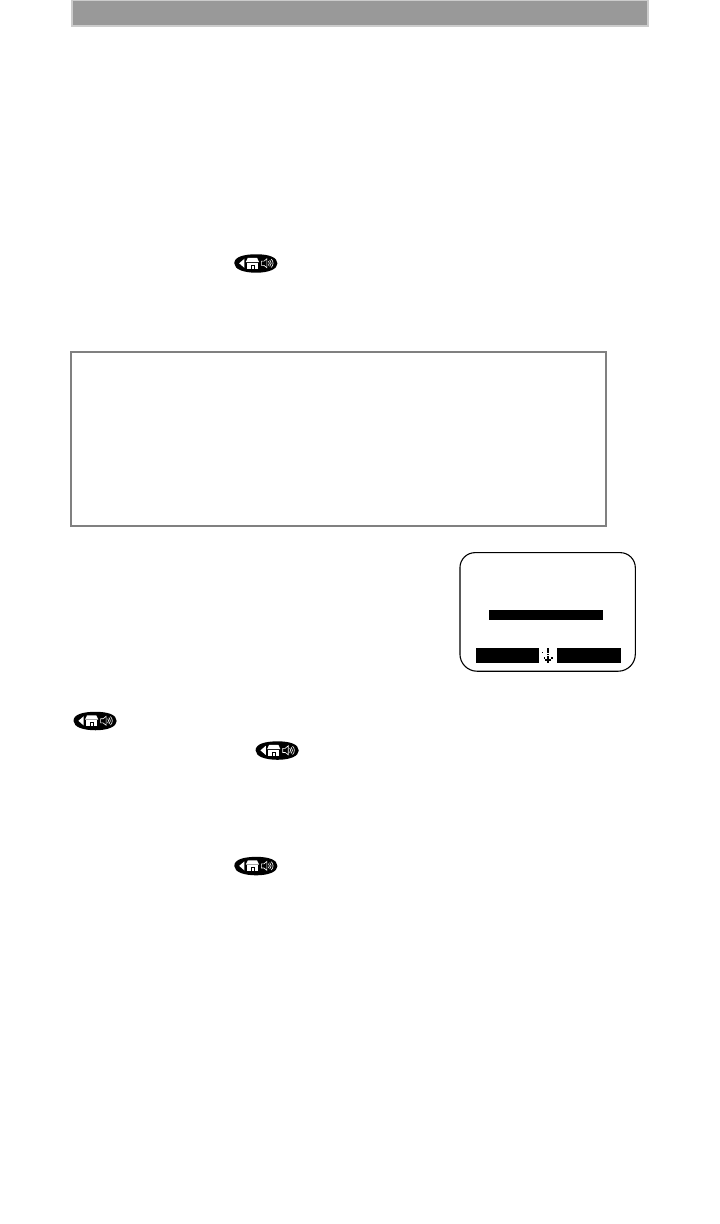
62
Net Mode D R A F T
Accessing Information Sites
You can read news and sports headlines, financial and stock reports,
phone company directories, travel and entertainment news, and weather
reports from online information sites.
Your carrier provides the sites that you can access.
Selecting an Information Site
1. Press and hold until you see the Home menu.
See the following illustration.The wording and content of the Home
menu are provided by your carrier. Therefore, the Home menu on your
phone might be different from this illustration.
2. Press the Volume Control buttons to
scroll to “Info Sites”, then select “Ok”.
The Info Sites screen opens.
3. Press the Volume Control buttons to
highlight the desired menu option, then
select “Ok”.
To go back to the previous menu, press
(the Speaker/Home/Back key). For example, if you are at the
Directory menu, press to go back to Info Sites. Pressing it once
again takes you to the Home menu.
Viewing the Listing of Other Information Services
1. Press and hold until you see the Home menu.
2. Press the Volume Control buttons to select “Listings”, then select
“Ok”. The Directory menu opens.
You can explore the services on the menu or you can search for a
particular service.
3. Continue with the instructions to display a list of options or find a
particular service.
Home Menu
1 Make Call
2 Email
3 Addresses
4 Calendar
5 Call List
6>Info Sites 1 Directory Directory
1>Yellow Pages
2 People
1 Directory
3 Weather
Ok Menu
4 News
Info Sites
2
Fi
nanc
i
a
l

63
D R A F T Net Mode
• To display a list of options:
4. Select “Act”, then select “Ok”. The Listings menu opens.
You can explore the listed services or look for a particular
service.
• To find a particular service:
4. Select “Act” to display the Action menu.
5. Select “Find Site”, then select “Ok”.
6. Enter a word that describes the type of service that you want
to find, then select “Ok”.
For example, to get information about stock quotes, enter
stock. To narrow the search, enter additional words
separated by spaces.
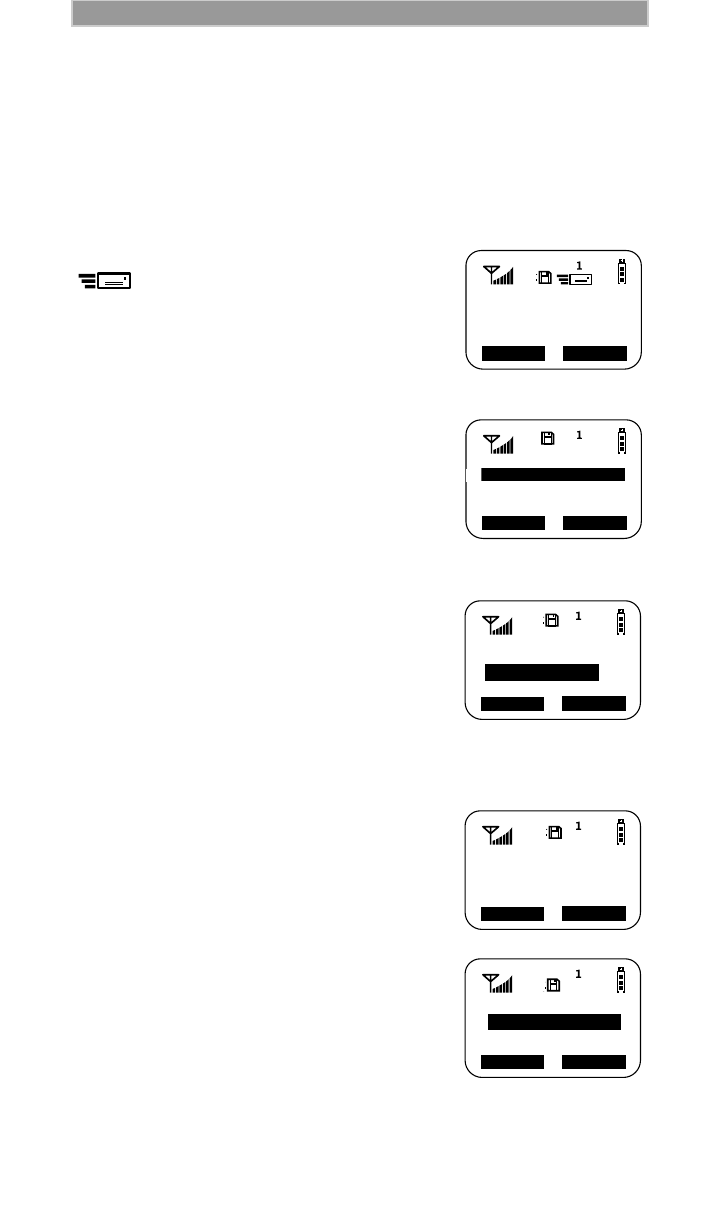
64
D R A F T
MAIL SERVICES
Your i1000-A provides the following mail services:
• Net Mail™
• Voice Mail
• Fax Mail
• Message Mail
When you receive a new message, the
icon appears and flashes.
• To read your new mail immediately, select
“Now”.
• To read your new mail later, select “Later”.
An asterisk * next to a mail service indicates
new mail.
To use message services, select “Mail” from
any Ready screen. The inbox screen opens
with your message services listed.
To select a message service, scroll to highlight
the service or press the corresponding number.
For example, to access your Message Mail,
press 2.
Net Mail
Net Mail enables you to send and receive
e-mail messages directly from your i1000-A
without the use of your computer.
From any mode:
1. Select “Mail”
2. Select “Net Mail”, then select “Ok”.
The Alerts inbox opens and displays the
number and type of Net Mail messages.
3. Select “Ok”. The Messages screen opens.
4. Scroll to the desired message to highlight
it.
5. To read the message, select “Read”.
New Mail
Later Now
Email
4> Fax Mail
3> Net Mail
Exit Ok
1 Voice Mail
2> Mesg Mail
>
*
2>Mesg Mail
4>Fax Mail
Exit Ok
1>VoiceMail
3>Net Mail
Ok Del
Alerts
1 UP.Mail
Read Act
Messages:
2:11/06 MEETING
1:9:10 JOHN
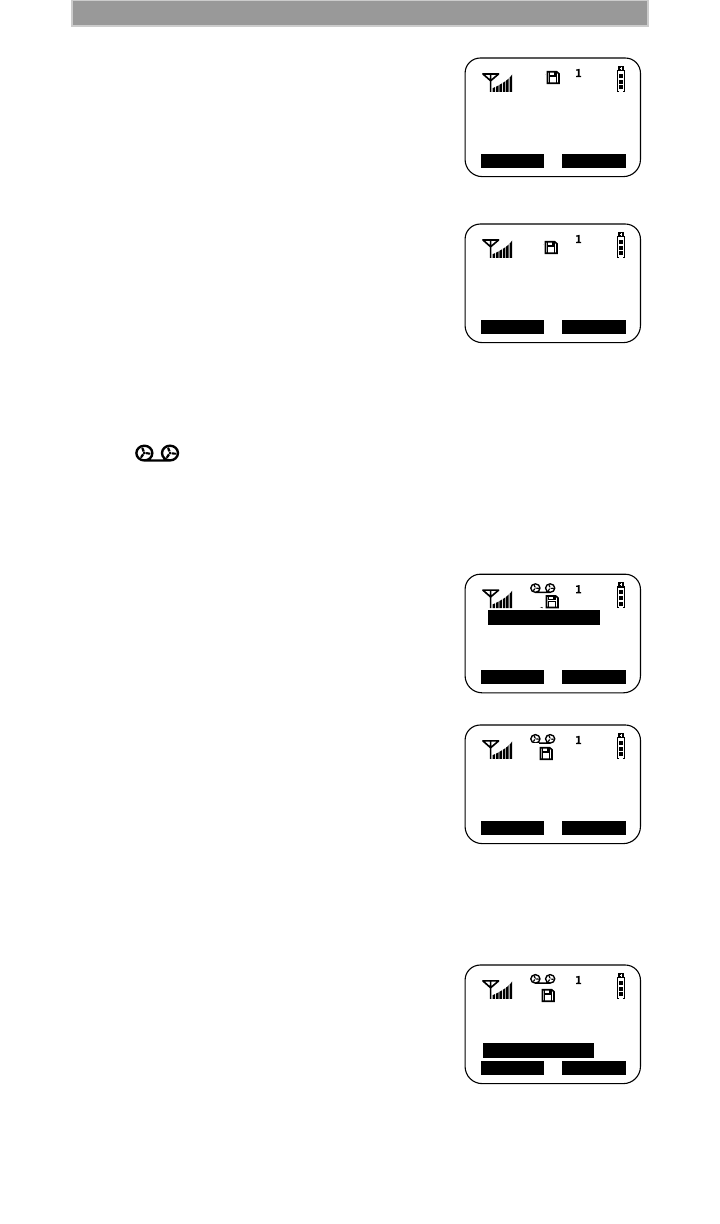
65
D R A F T Mail Services
6. When you finish, do one of the following:
• Select “Act” to get a list of actions
that you can take for this message,
such as reply, delete, or save.
• Or, select “Done” to go back and read
the next message.
7. Do one of the following:
• Select “More” to view more options.
• Or, select Reply, Delete, or Save then
click “Ok”.
Voice Mail
When your i1000-A receives a Voice Mail message:
• The icon appears on your display.
• The Voice Mail alert tone sounds (if Mail Notification is turned on).
• The message, “New Voice Mail Waiting” appears on your display.
• An exclamation point (!) on the display indicates that you have at
least one urgent message.
From any mode:
1. Select “Mail”
2. Select “VoiceMail”.
The VoiceMail inbox opens and displays the
number of your new and total VoiceMail
messages.
To retrieve your voice mail immediately:
1. Select “Dial”. This action automatically
places a call to your voice mailbox. The
most recent message is retrieved first.
2. To close your voice mailbox, select “Exit”.
Fax Mail
Your i1000-A can receive faxes without the use
of your computer.
From any mode:
1. Select “Mail”
MEETING
Done Act
----
With client at
11:00
Ok More
1>Reply
2>Delete
3>Save
4>GoTo Message
2>Mesg Mail
3>Net Mail
4>Fax Mail
1>VoiceMail
Exit Ok
Exit Dial
Voice Mail
1 New
1 Total
2>Mesg Mail
Exit Ok
1>VoiceMail
3>Net Mail
4>F
ax
M
a
il
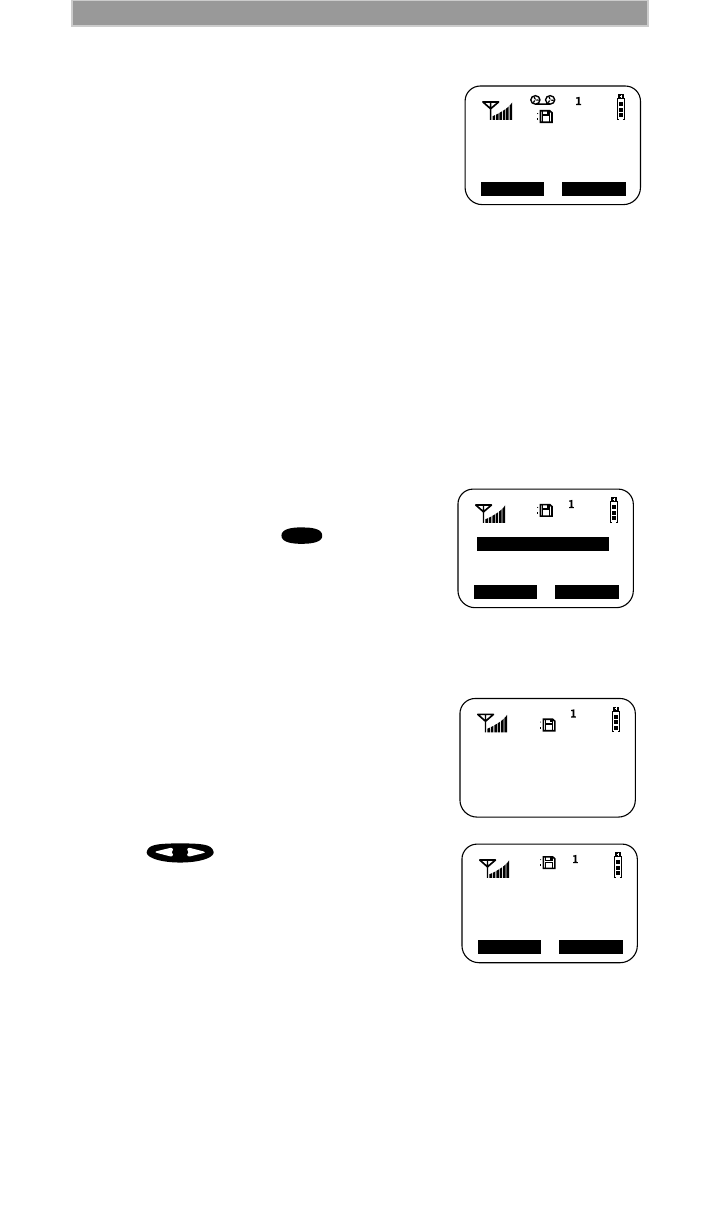
66
Mail Services D R A F T
2. Select “Fax Mail”.
The Fax Mail inbox opens and displays the
number of your new and total Fax Mail
messages.
To retrieve your fax mail immediately:
1. Select “Dial”. This action automatically
places a call to your fax mailbox. The
most recent message is retrieved first.
2. To close your fax mailbox, select “Exit”.
Message Mail
Message Mail be be either a numeric page or a text message of up to 140
characters. Your phone can receive and store 15 mail messages at any
time.
1. Do one of the following:
• Press the message number on the
keypad. For example, to read
message 3, press .
• Or, use the scroll keys to scroll
through and read your messages.
2. To postpone reading your mail and to
clear the display, select “Later”. The
icon stops flashing but remains on your
display to remind you that you have unread messages.
Your Message mailbox opens and
briefly displays the number of New and
Saved messages currently in your
Message mailbox.
3. Use to scroll through the first
screen of any unread or saved mail
messages.
4. Select “Read” to read the entire
message.
Your message shows the time and date that
the sender entered it in the network.
Exit Dial
Fax Mail
1 New
2 Total
4> Fax Mail
3> Net Mail
Exit Ok
1 Voice Mail
2> Mesg Mail
>
*
3DEF
Message Mail
0 Saved
2 New
1>Call
11:15a 04/02
Exit Read
5551212
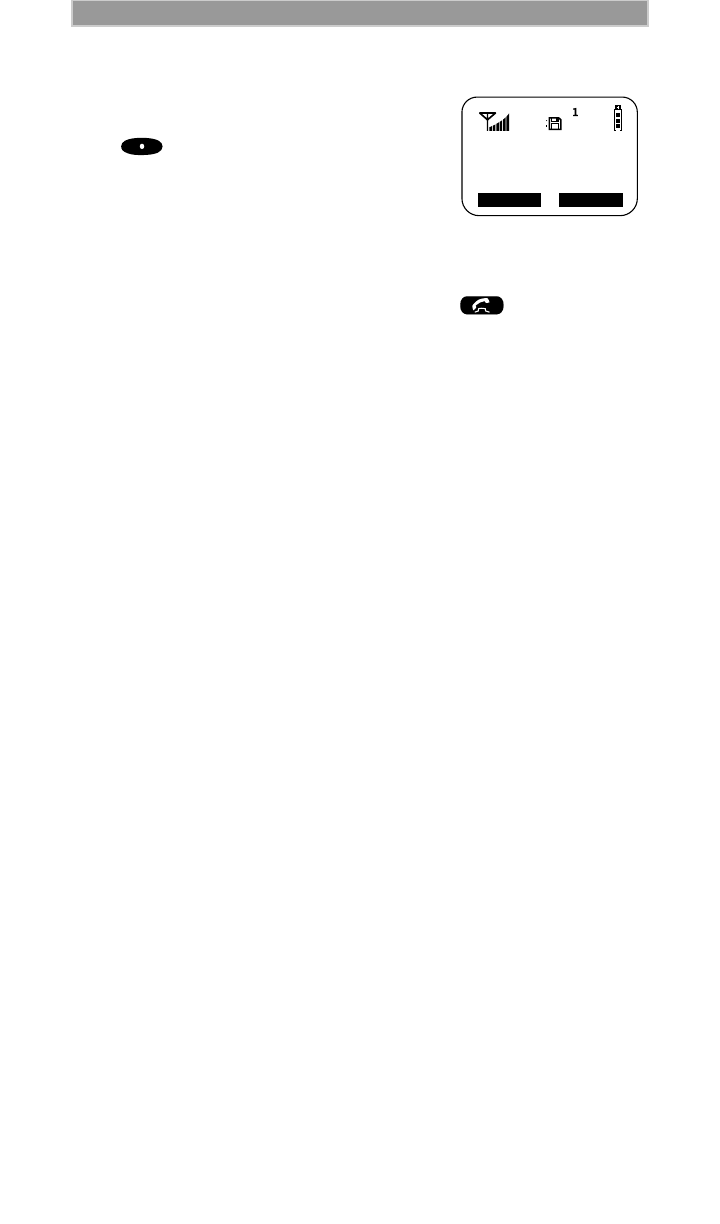
67
D R A F T Mail Services
Saving and Erasing Mail
After you read a text or numeric message,
you can either Save or Erase the message.
Press under the desired option.
Auto Call Back
With the cover open, you can respond to numeric pages and text
messages containing a call-back number. To automatically dial a
number contained within a Message Mail, press .
Mail Memory Full
If all 16 message registers are full, your phone displays the message
“Mail Waiting, Memory Full”. You cannot receive new Message Mail
until you empty register space by erasing saved or unread messages.
1>Call
11:15a 04/02
Erase Save
5551212
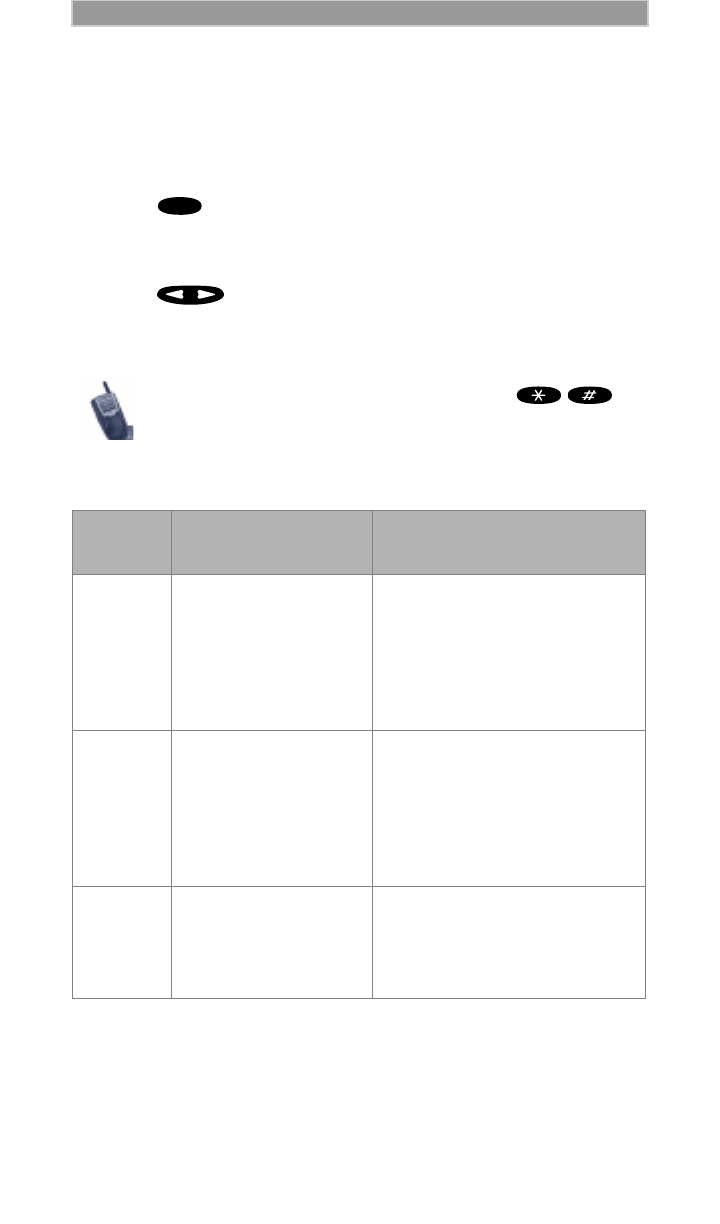
68
D R A F T
PROGRAMMING MENU OPTIONS
You can customize the settings on your phone using the Programming
Menu.
You may access the Programming Menu from any mode (Phone, Group,
or Private).
1. Press until you see “Prgm” on the display.
2. Select “Prgm”.
3. Select “Ok”.
4. Press to scroll to the desired Programming Menu Option
or enter the number of the Option.
In Phone, Private, or Group mode, press ,
then press the keypad number. See the following
table.
The programming menu is not available in Net Mode.
Keypad
Number Menu Option Function
1 Own Ph # Store the telephone number
of your phone after you
receive the first incoming call.
Or, you can enter the number.
“What Is My Phone Number?”
on page 33.
2 Own Pvt ID Display the private number of
your phone. You must first
store this number. See
“Storing Your Private ID” on
page 40 and “What Is My
Private ID?” on page 40.
3 Mail Display:On/Off Turn on and off the New Mail
message that is displayed
with incoming Voice,
Message, Net, or Fax Mail.
MENU
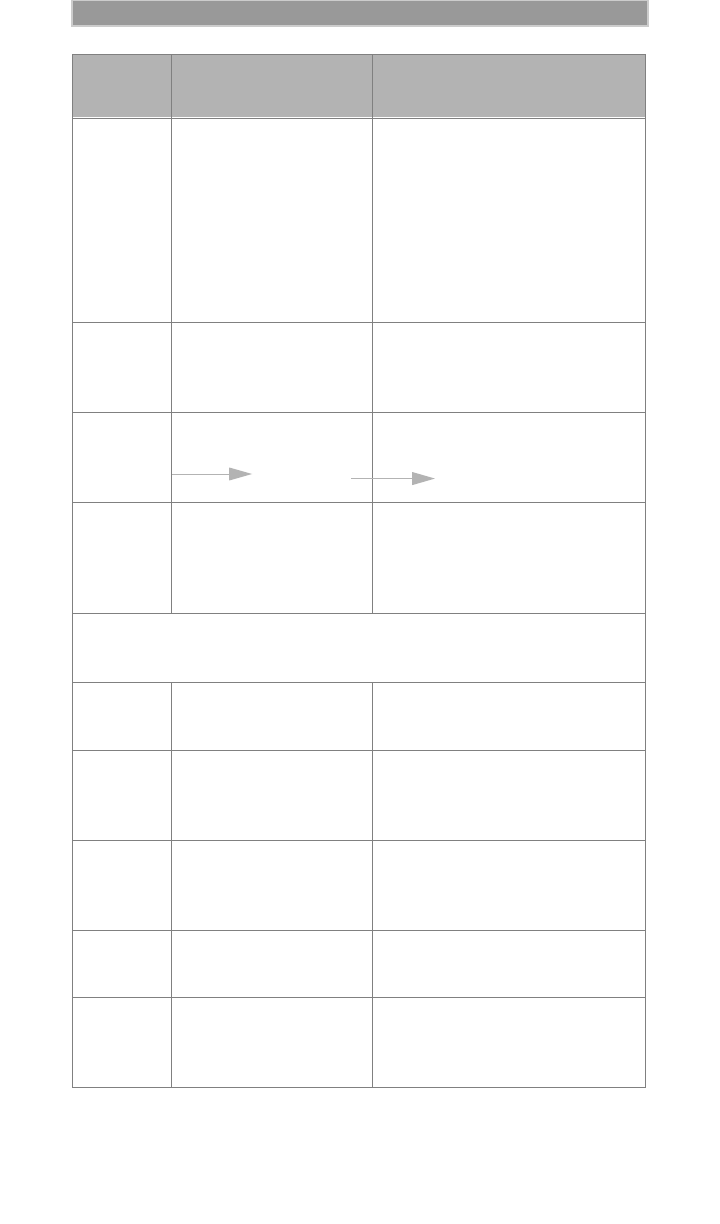
69
D R A F T Programming Menu Options
4 Manual Lock:On/Off Lock your phone to prevent
unauthorized use. You must
enter a pass code to unlock it.
With the manual lock on, you
can reach emergency help by
pressing and holding the
emergency key designated by
your carrier.
5 Auto Lock:On/Off Automatically lock your phone
each time it is powered off to
prevent unauthorized use.
6 Auto Answer:On/Off Turn on or off automatic
answering of incoming phone
calls after 1-4 rings.
9 Vibrate Alert:On/Off Receive a non-audible alert
for incoming phone and circuit
data calls and messages. See
“VibraCall™” on page 12.
The following options require you to press two keypad numbers.
For example, to enter keypad number 10, press 1 then press 0.
10 Last Call Timer Display the duration of the
most recent phone call.
11 Display Timer:On/Off Turn on or off automatic
display of the Last Call Timer
at the end of each phone call.
12 Reset Timer Display cumulative airtime of
all phone calls since last
reset.
13 Total Timer Display cumulative airtime of
all phone calls.
14 1 Minute Beep:On/
Off Automatically signal each
minute of elapsed phone
airtime with an audible beep.
Keypad
Number Menu Option Function
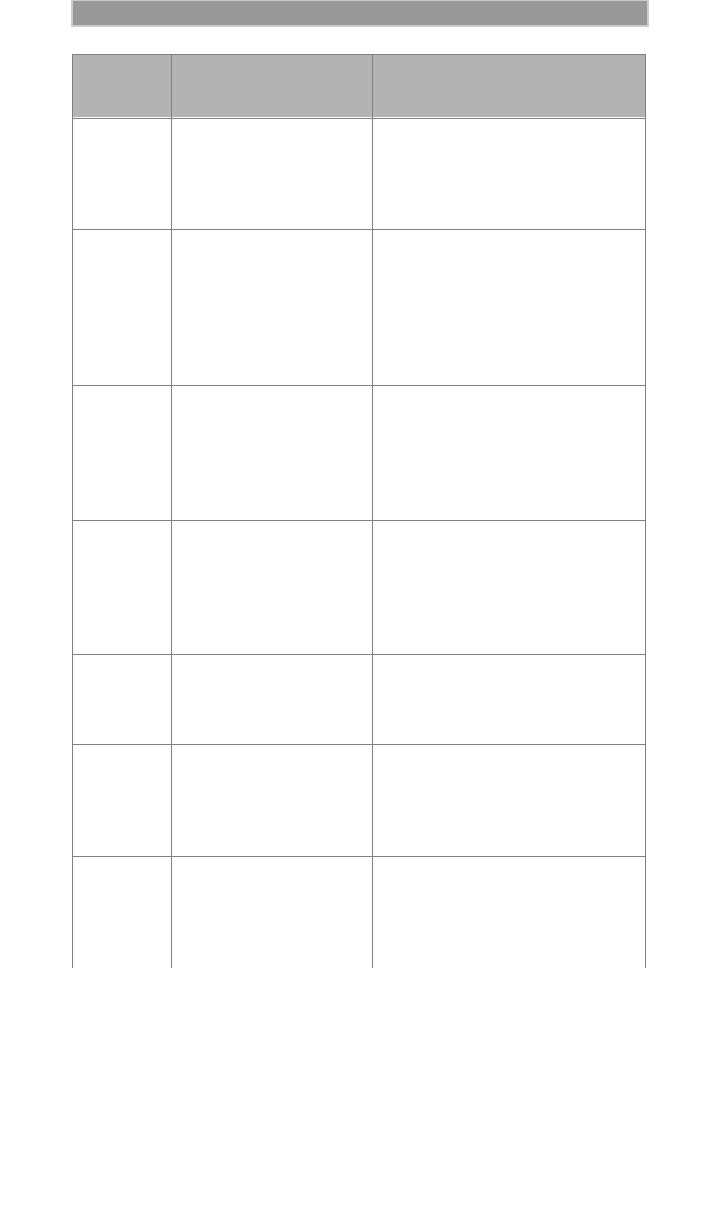
70
Programming Menu Options D R A F T
20 Phone/Prvt List Add phone and private
numbers in one procedure.
See “Combined Phone and
Private ID List” on page 20.
21 Phone List Edit Edit and erase up to 100
frequently called phone
numbers and associated
names. See “Editing and
Erasing Phone List Entries”
on page 22.
22 Prvt ID List Edit Edit and erase up to 100
Private numbers and
associated names. See
“Editing and Erasing Private
ID List Entries” on page 22.
23 Talkgrp List Program Add/Edit/Erase numbers and
associated names for up to 10
pre-programmed talkgroups.
See “Naming and Storing a
Talkgroup” on page 22.
24 Area List Program Add/Edit/Erase numbers and
associated names for up to 50
targeted areas.
30 Ringer Volume Set the ringer volume using
the volume control keys, or
lower the volume to silence
the ringer.
31 Set Ring Style Select a distinct ring style for
incoming phone calls. See
“Selectable Ring Styles” on
page 33.
Keypad
Number Menu Option Function
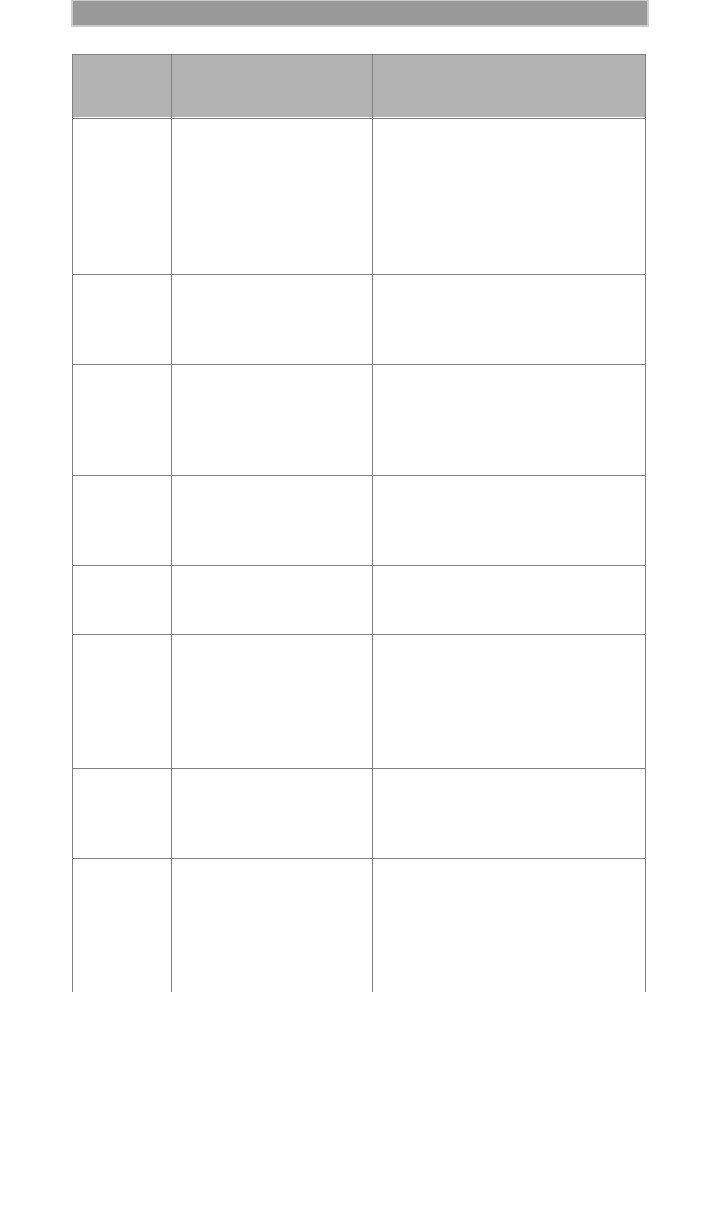
71
D R A F T Programming Menu Options
32 Mail Volume Set the volume of incoming
Message and Voice Mail and
Net alert tones using the
volume control keys, or lower
the volume to silence the mail
alert tones.
33 Earpiece Volume Set the default earpiece
volume using the volume
control keys.
34 Keypad Volume Set the volume of the keypad
tones using the volume
control keys, or to silence the
keypad tones.
35 Speaker Volume Temporarily adjust the Group/
Private Speaker volume for
noisy environments.
36 Spkr Vol Set Tone Turn the speaker volume set
tones on or off.
38 Silent Grooup Silence all incoming Group
call alerts and voice activity.
When set, your screen
displays the message, Group
Silent.
40 Change Passcode Change your secret four-digit
passcode from the initial
setting 0000.
60 Set Baud Rate Set the modem baud rate
between the phone and the
PC. See the
Wireless Data
User’s Guide
, publication
68P81088C07.
Keypad
Number Menu Option Function
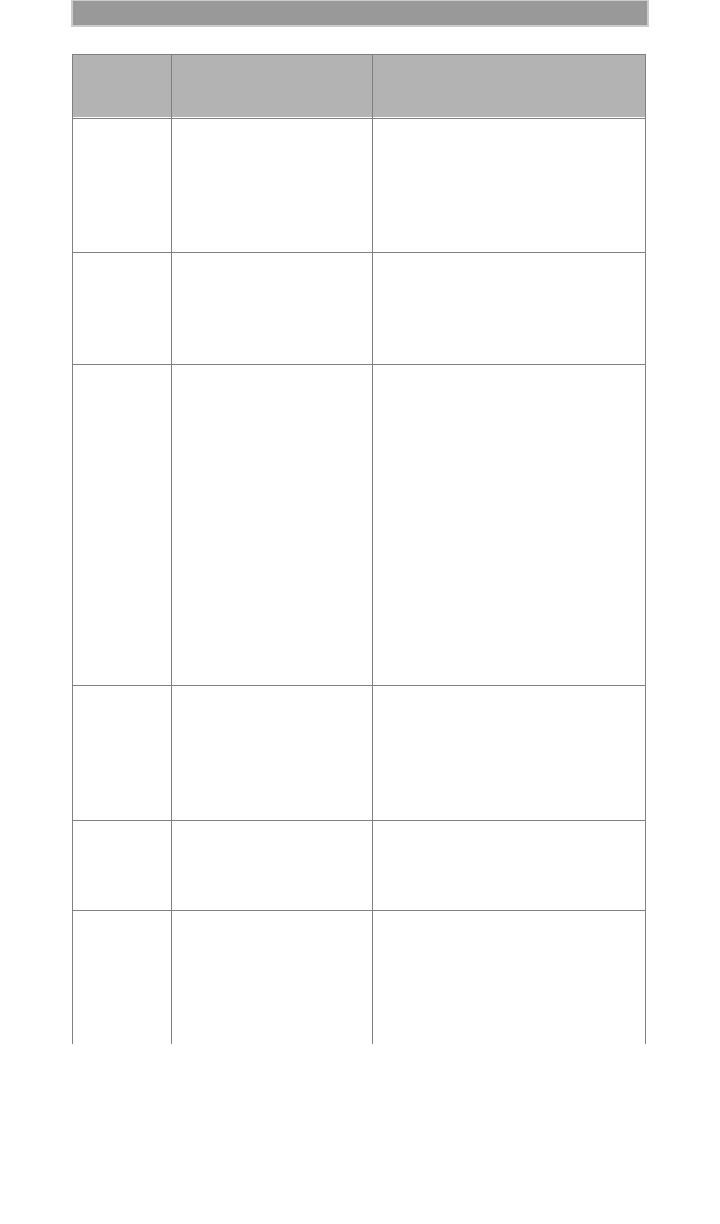
72
Programming Menu Options D R A F T
61 Data Ringer Volume Set the default data ringer
volume using the volume
control buttons. See the
Wireless Data User’s Guide
,
publication 68P81088C07.
62 Ckt Data # View your circuit data (fax)
number. See the
Wireless
Data User’s Guide
,
publication 68P81088C07.
63 IP Address View the Internet Protocol (IP)
Address-1 for your browser,
as programmed in your
phone.
If your phone is cabled to a
computer, view IP Address-2,
the stored IP address of your
computer.
Use the scroll keys to view
either one.
See the
Wireless Data User’s
Guide
, publication
68P81088C07.
64 Reset kBytes Tx/Rx View the number of Kilobytes
sent and received for packet
data. See the
Wireless Data
User’s Guide
, publication
68P81088C07.
65 Lines per Screen
(Browser or Mail
menu
)
Select 4 lines, 12 characters
or 6 lines, 16 characters.
70 Language Select one of four languages
for your display text.
The
default is English.
See
“Changing the Display
Language” on page 19.
Keypad
Number Menu Option Function
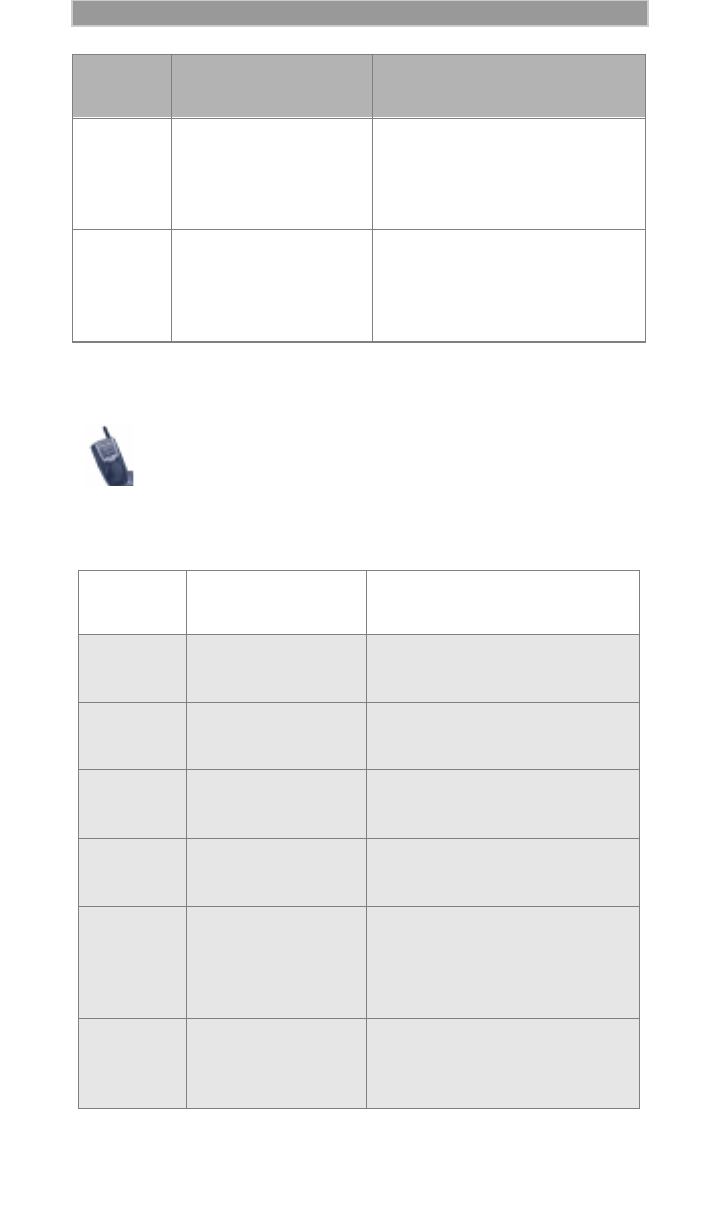
73
D R A F T Programming Menu Options
71 Time/Date Select the format for the time
and date display. See “Setting
the Time and Date” on
page 17.
80 Phone Only Turn on or off incoming
Private, Group, and Packet
Data services. See “Phone
Only Mode” on page 15.
Important!
Contact your carrier before trying to perform the
following shaded menu options.
In the Browser, do not select the “Advanced Encrption
New” key. Instead, contact your carrier.
Option
Number Menu Option Function
41 Feature Reset Returns all feature settings to
their original defaults.
42 Master Clear Performs Feature Reset and
erases all stored lists.
43 Master Reset Resets the phone’s
identification number.
44 Change Service
Key Changes or resets the fraud
prevention service key.
50 NAM Selects alternate Numeric
Assignment Module (NAM).
See local carrier for
information.
51 Net ID Edits the pre-programmed
Network number list and
select roaming options.
Keypad
Number Menu Option Function
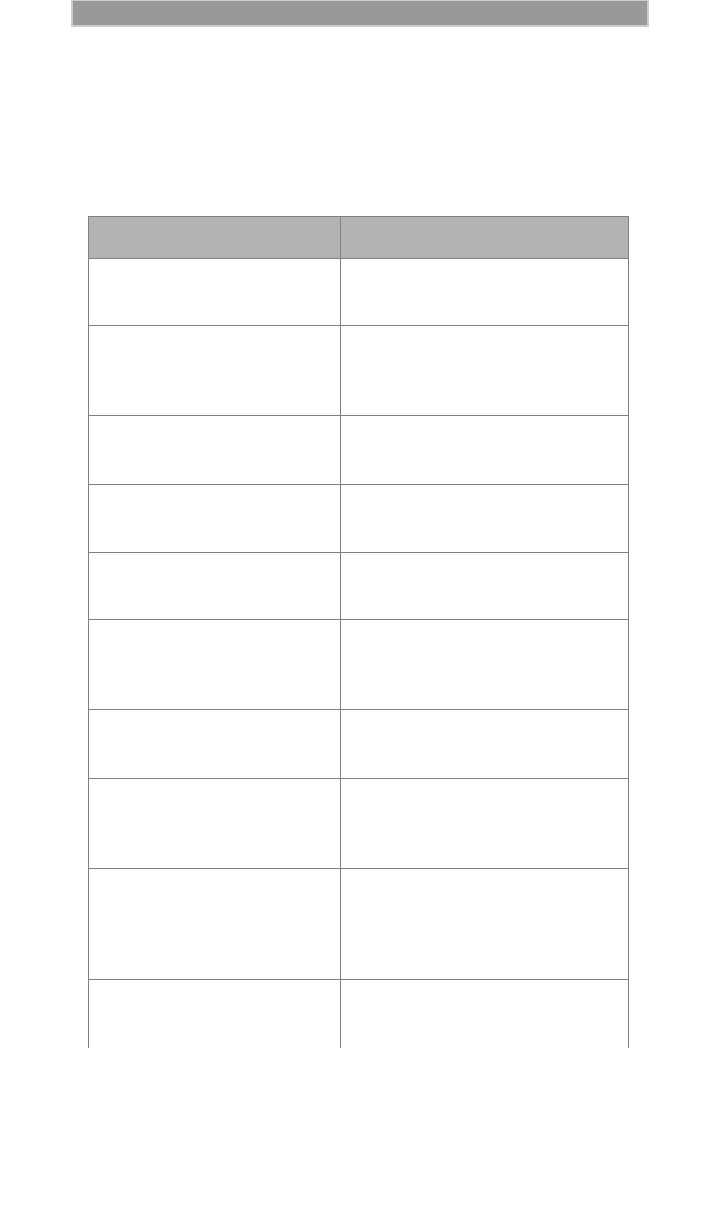
74
D R A F T
ERROR MESSAGES
You may receive error messages under certain conditions. Before
contacting your carrier, note the message, numeric code, and the
conditions under which it appeared. The following table lists and
describes the error messages.
Error Messages Message Description
Number Not in Service The number that you entered is
not valid.
User Not Available The unit that you called is either
busy, out-of-range, or turned
off. Please try again later.
User Not Authorized The party that you called has
not purchased this service.
Please Try Later This service is temporarily not
available. Please try again later.
User Busy in Private The unit that you called is busy
in a Private call.
Service Restricted This service was restricted by
your carrier or it was not
purchased.
Service Not Available This feature is not available on
the current network.
System Busy Try Later The system is experiencing
heavy traffic. Please try again
later.
Service Conflict This service cannot be enabled
because an incompatible
service has already been
turned on.
Please Try Again An error occurred. Note the
error code and try again.
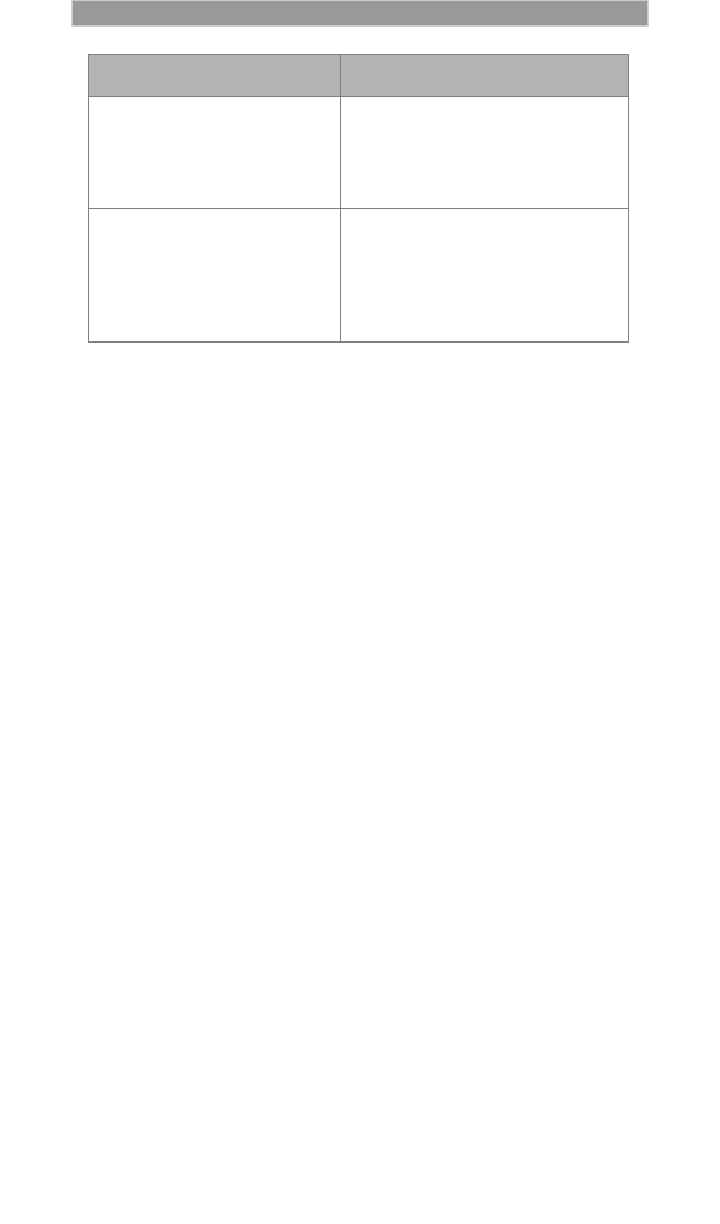
75
D R A F T Error Messages
Self Check Error A fault was detected with your
phone. If this error recurs, note
the error code and contact your
carrier.
Self Check Fail An operational fault was
detected with your phone. Note
the numeric code, turn your
phone off, and contact your
carrier immediately.
Error Messages Message Description
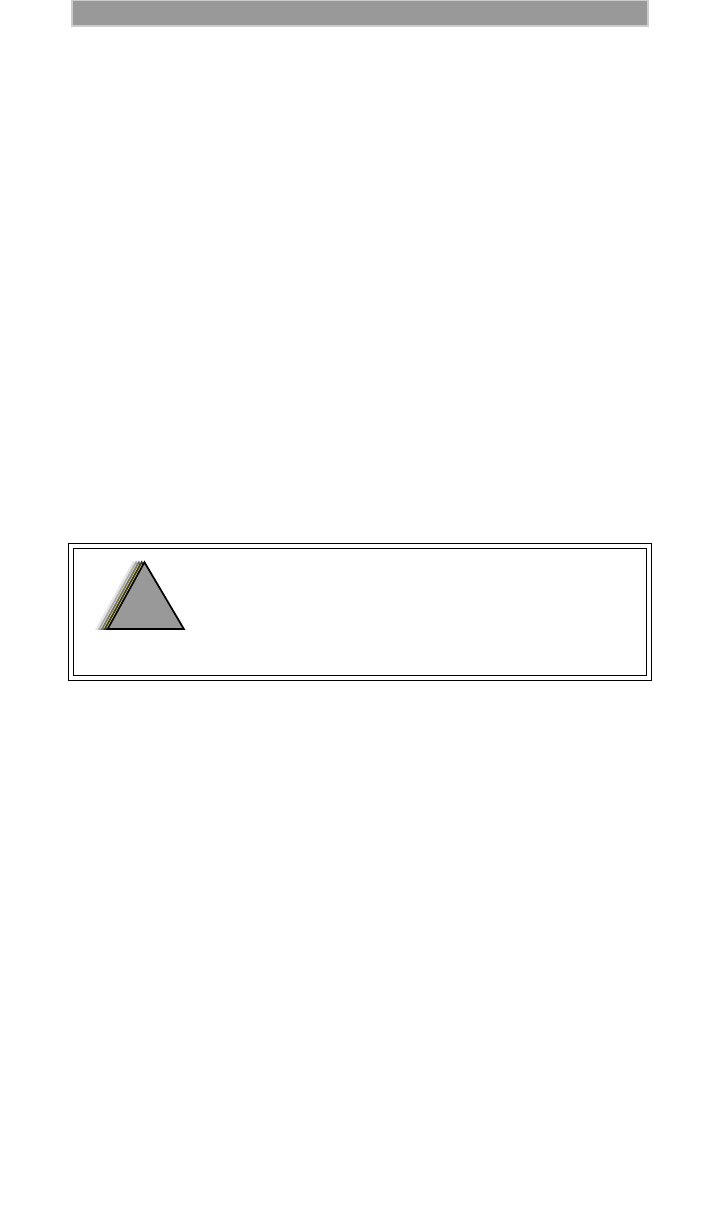
76
D R A F T
ACCESSORIES
IMPORTANT
SAVE THESE ACCESSORY
SAFETY INSTRUCTIONS
• Before using the battery, read all the instructions and cautionary
markings on (1) the battery, (2) the battery charger, and (3) the phone
using the battery.
• For your protection, store the battery in its safety tray when you are
not using it.
• Before using the Travel Charger, read all the instructions and
cautionary markings on (1) the Travel Charger, (2) the battery, and
(3) the phone using the battery.
• Before using the Vehicular Battery Charger (VBC), read all the
instructions and cautionary markings on (1) the VBC, (2) the battery,
and (3) the phone using the battery.
• Before using the Desktop Battery Charger, read all the instructions
and cautionary markings on (1) the battery charger, (2) the battery,
and (3) the phone using battery.
• Do not expose the Travel Charger, Desktop Battery Charger, or
Vehicular Battery Charger to rain or snow.
• To reduce the risk of damage to the cord or plug, pull by the plug
rather than the cord when you disconnect the Travel Charger or
Desktop Battery Charger from the AC receptacle or when you
disconnect the Vehicular Battery Charger from the cigarette lighter.
• Do not operate the Travel Charger or Vehicular Battery Charger with
a damaged cord or plug.
• Do not attempt to disassemble the Travel Charger or Vehicular
Battery Charger.
• The Travel Charger or Vehicular Battery Charger may become warm
during operation, but not hot. If the Travel Charger becomes hot to
the touch, unplug it from the AC outlet immediately and discontinue
its use. If the Vehicular Battery Charger becomes hot to the touch,
unplug it from the cigarette lighter immediately and discontinue its
use.
• Use of a non-recommended attachment to the Desktop Battery
Charger may result in a risk of fire, electric shock, or injury to
persons.
• Make sure the Desktop Battery Charger cord is located so that it will
To reduce the risk of injury, charge only the
rechargeable batteries listed. Other types of
batteries may burst, causing personal injury and
damage.
!
W A R N I N G
!

77
D R A F T Accessories
not be stepped on, tripped over, or subjected to damage or stress.
• An extension cord should not be used with the Desktop Battery
Charger unless absolutely necessary. Use of an improper extension
cord could result in a risk of fire and electric shock. If an extension
cord must be used, make sure that:
The pins on the plug of the extension cord are the same
number, size, and shape as those on the plug of the charger.
The extension cord is properly wired and in good electrical
condition.
The cord size is 18AWG for lengths up to 100 feet and
16AWG for lengths up to 150 feet.
• Do not operate the Desktop Battery Charger with a damaged cord or
plug - replace them immediately.
• Do not operate the Desktop Battery Charger if it has received a sharp
blow, has been dropped, or has been damaged in any way; take it to a
qualified service technician.
• Do not disassemble the Desktop Battery Charger; take it to a
qualified service technician when service or repair is required.
Incorrect reassembly may result in a risk of electric shock or fire.
• Maximum ambient temperature around the power supply of the
Desktop Battery Charger must not exceed 40°C (104°F).
• The output power from the power supply must not exceed the rating
given on the Desktop Battery Charger.
• The disconnection from the line voltage is made by unplugging the
power supply’s transformer from the AC receptacle.
• To reduce risk of electric shock, unplug the Desktop Battery Charger
from the outlet before attempting any maintenance or cleaning.
• For optimum performance, turn off the i1000-A while charging it in
the Desktop Battery Charger.
• The Desktop Battery Charger is for indoor use only.
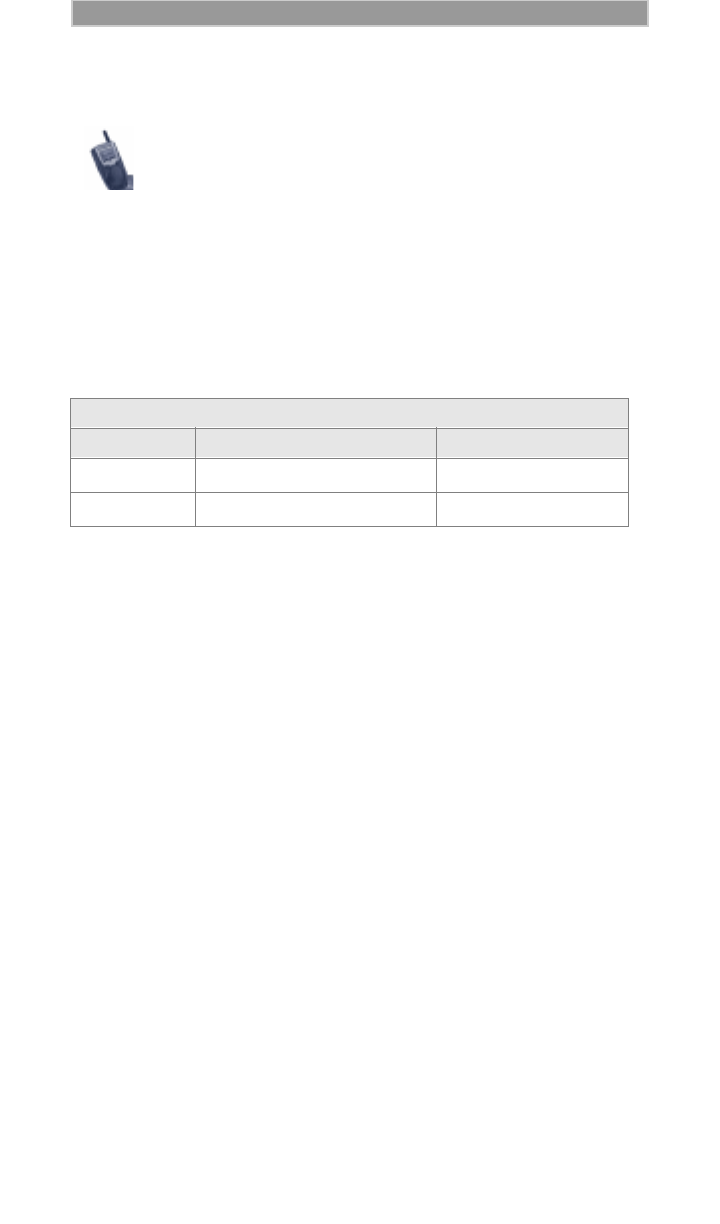
78
Accessories D R A F T
Batteries .
Charging Lithium Ion Batteries
Table 8 provides the approximate time to fully charge a battery using an
Motorola iDEN Approved Lithium Ion battery Charger.
Table 8: Battery Charging Times
* Charging times are based on a fully discharged battery.
For optimal battery life, use a Motorola iDEN Approved Lithium Ion
charger with your Motorola iDEN Lithium Ion battery. Other chargers
may not fully charge your Lithium Ion battery or may yield a reduced
number of cycles.
Battery Operating Instructions
• Extreme temperatures will degrade battery performance. Do not
store your battery where temperatures exceed 60°C (140°F) or fall
below -20°C (4°F).
• This Lithium Ion battery has a self discharge rate and without use,
will lose about 1% of its charge per day.
• The battery capacity will be degraded if stored for long periods while
fully charged. If long term storage is required, store at half capacity.
• The Motorola iDEN Approved Lithium Ion chargers will provide
optimum performance. Other chargers may not fully charge your
iDEN Lithium Ion battery or may yield reduced number of charge
cycles.
• If the battery appears inoperative, the internal protection circuitry
may have been activated. Remove the battery from the phone and put
it into the charger for several minutes to reset the circuitry.
• When the battery is not in use, always store it in the safety tray.
• It is recommended that you charge the batteries within
the temperature range of 10oC to 40oC (50oF to
104oF).
• Prolonged charging is not recommended. See Table 8
for battery charging guidelines.
MOTOROLA BATTERIES
Kit Number Description/Chemistry Charging Time*
NTN8615 Slim Lithium Ion 2.5 Hours
NTN8614 Standard Lithium Ion 3 Hours
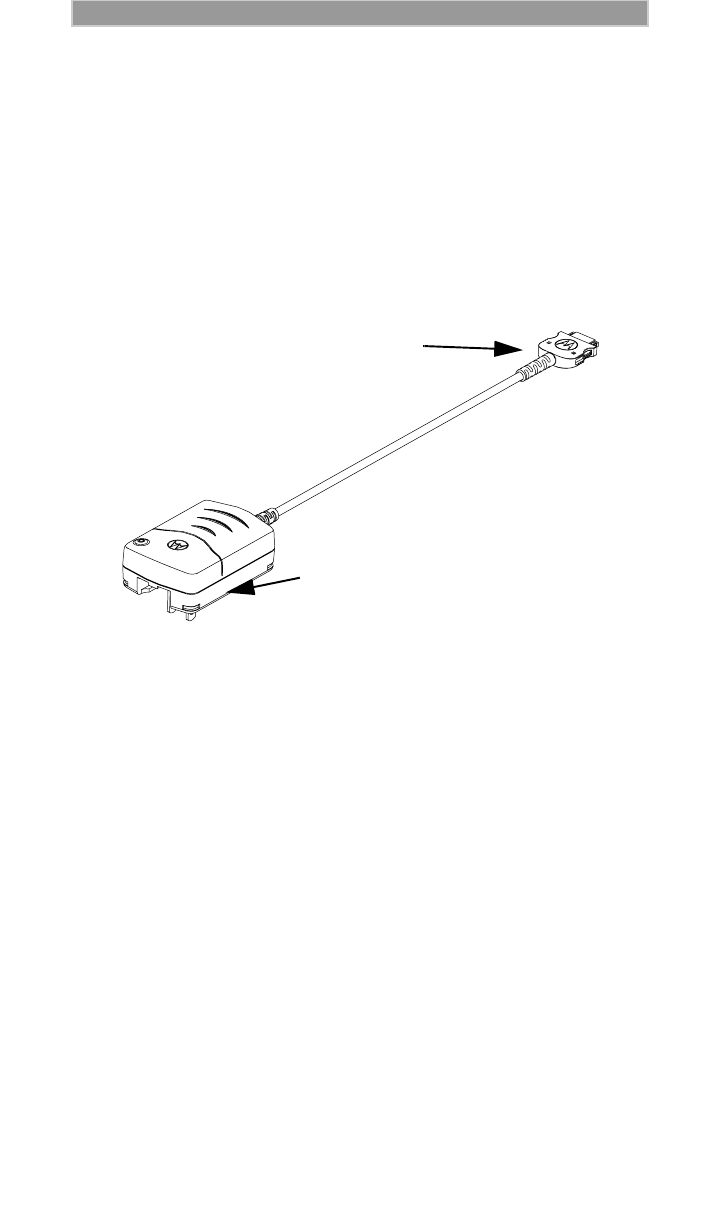
79
D R A F T Accessories
Travel Charger
Using the NPN6197 Travel Charger, you can charge a battery from an
AC outlet. On one end of the travel charger, an accessory connector
attaches to the bottom of the phone unit. At the other (AC outlet) end of
the device, there is a compact housing that contains the plug-in power
supply. A lightweight cable connects the two ends (accessory connector
and supply).
A green LED on the accessory power supply indicates that the Travel
Charger is plugged in.
Installing the Travel Charger
Figure 2. Installing the Travel Charger
1. While holding the i1000-A with its front toward you, insert the
accessory connector (with the Motorola logo facing you) into the
slot on the bottom of the i1000-A until you hear a click.
2. Plug the Travel Charger transformer into an AC wall outlet. The
power light (green LED) on the accessory power supply will
come on.
Travel Charger Operating Specifications
Input voltage range: 90-264 VAC @ 50/60 Hz.
Operating ambient temperature: 0°C to +50°C
Vehicular Battery Charger
The NTN8655 Vehicular Battery Charger (VBC) provides power to the
phone unit and charges the phone’s Lithium Ion battery.
The power light (green LED) will light when the VBC is receiving
power.
Transformer
Accessory Connector
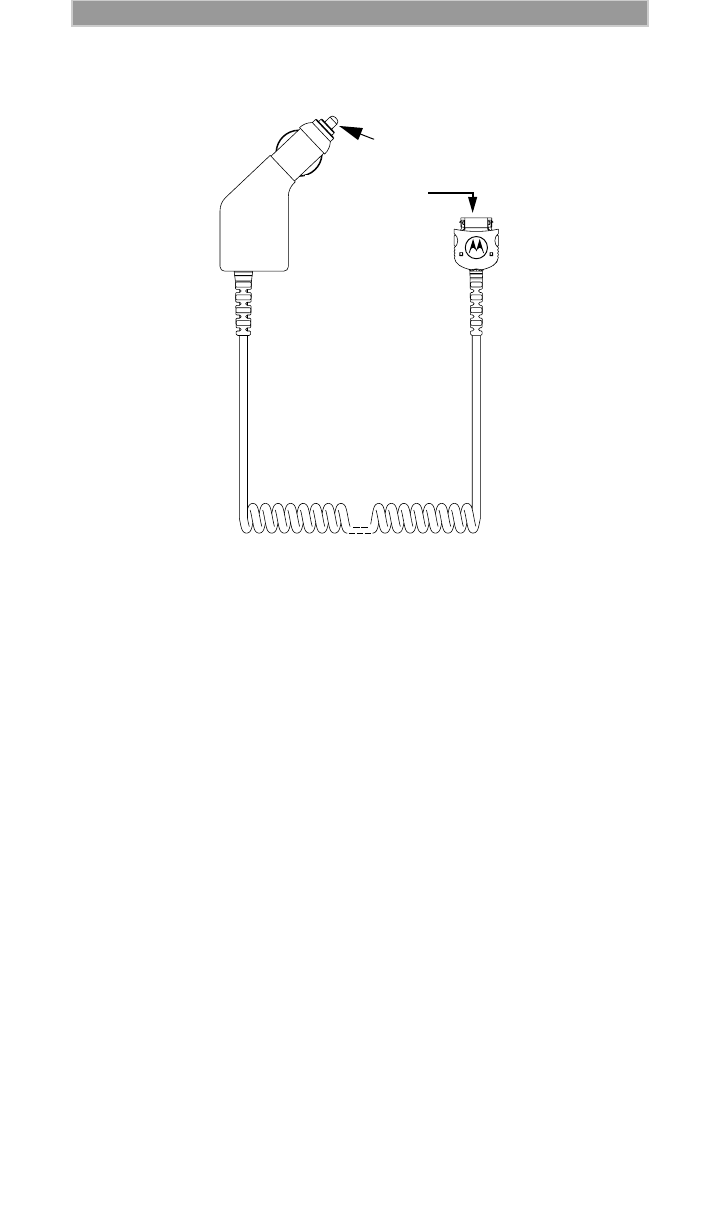
80
Accessories D R A F T
Installing the Vehicular Battery Charger
Figure 3. Installing the Vehicular Battery Charger
1. Attach the Vehicular Battery Charger’s accessory connector to the
bottom of the i1000-A. While holding the i1000-A with its front
toward you, insert the accessory connector (with the Motorola
logo facing you) into the slot on the bottom of the i1000-A until
you hear a click.
2. Remove the vehicle’s cigarette lighter plug from the cigarette
lighter receptacle.
3. Plug the Vehicular Battery Charger’s cigarette lighter adapter into
the cigarette lighter receptacle. The power light (green LED) will
come on.
4. The i1000-A may be turned off, turned on, or used.
Removing the Vehicular Battery Charger
1. Unplug the Vehicular Battery Charger’s cigarette lighter adapter
from the vehicle’s cigarette lighter receptacle.
2. Press the latches on the accessory connector.
3. Pull the accessory connector from the bottom of the i1000-A.
Vehicular Battery Charger Operating Specifications
Operating voltage range: 10.8 - 33.0 Vdc.
Operating temperature range: -30°C to +60°C
Cigarette Lighter
Adapter
Accessory
Accessor
y
Connector
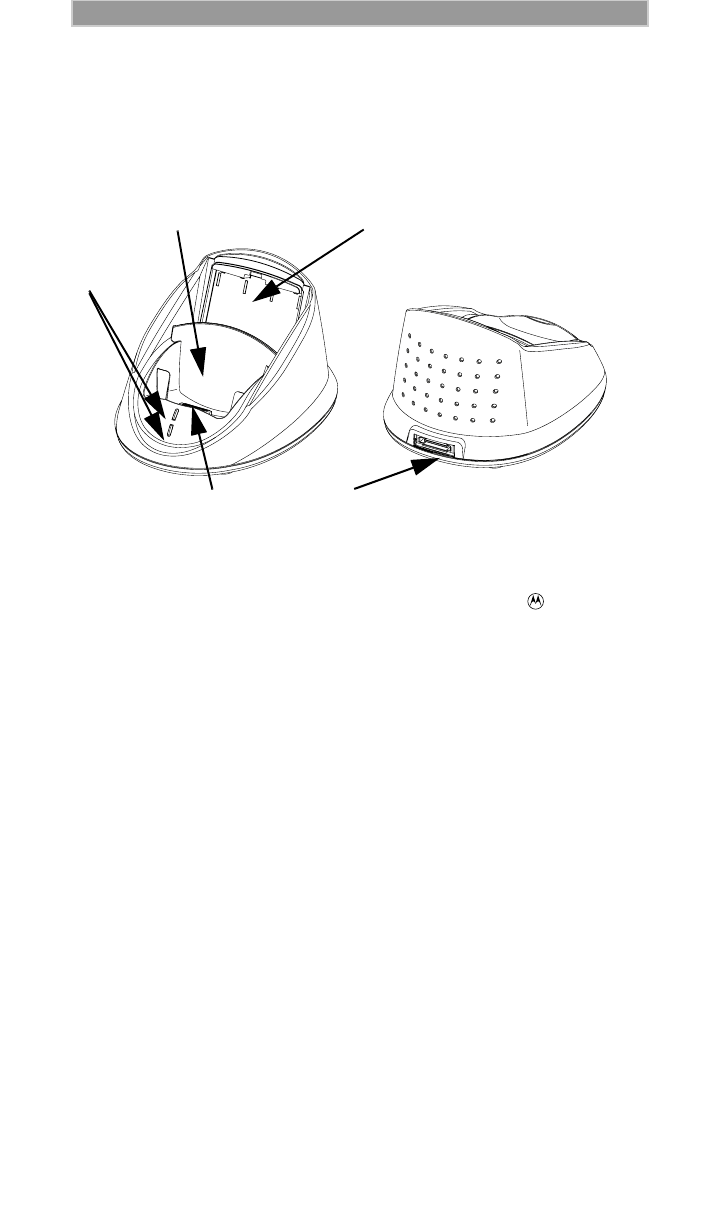
81
D R A F T Accessories
Desktop Charger
The NTN8653 Desktop Rapid Charger charges Motorola authorized
batteries, as listed on page 78, for the i1000-A.
Charging a Battery
Figure 4. Desktop Rapid Charger
1. Plug the flat end of the power-supply cord, with the logo facing
down, into the receptacle on the back of the charger.
2. Plug the transformer end of the power-supply cord into any
standard AC wall outlet. The charger performs a quick power-up
self-test, during which the LED indicators will flash green once
to indicate a successful power-up.
3. Insert an i1000-A with an attached battery, into the charger's front
pocket. This is done by inserting the bottom of the i1000-A onto
the pin connector in the bottom of the charger's front pocket.
4. If the phone is properly seated in the front pocket, the charger’s
front pocket LED indicator will light to indicate that the battery is
being charged. (If a battery is in the rear pocket and the phone
with a battery is inserted into the front pocket, the rear pocket’s
LED flashes yellow, indicating that its battery is waiting to be
charged.)
5. The charger has the capability of displaying the battery’s charge
status. The indicator will show the following: solid red=1-30%;
solid yellow=31-60%; flashing green=61-90%; solid green=91-
100%.
Desktop Battery Charger Troubleshooting
If the battery is not charging and there is:
Rear PocketFront Pocket
Pin Connector Power supply cord receptacle
LED
Indicator

82
Accessories D R A F T
A flashing yellow indicator —
• And the battery is in the rear pocket and an i1000-A is charging in
the front pocket, the rear pocket’s LED will continue to flash yellow
until the battery in the front pocket is more than 90% charged (front
pocket’s LED is solid green). This is normal operation.
• And the temperature is below 5°C (41°F) or above 40°C (104°F), the
charger will not charge the battery to protect your battery’s life.
Charging outside of these temperature limits can drastically reduce
the life expectancy of your battery.
No LED indication —
• The phone with a battery, or a battery alone, may not be inserted
correctly (see “Charging a Battery” on page 81).
• The transformer may not be plugged into an appropriate AC outlet,
or the the connector may not be properly seated.
• The battery may need to be cleaned. Remove the battery from the
charger. Use an ordinary pencil eraser to clean the four metal
contacts on the battery. Attach the battery.
• The battery may be defective and should be replaced.
A flashing red LED indicator—
• The battery may need to be cleaned. Remove the battery from the
charger. Use an ordinary pencil eraser to clean the four metal
contacts on the battery. Attach the battery.
• The battery may be defective and should be replaced.
Audio Adapter
The NTN8654 Audio Adapter connects an earpiece microphone to your
i1000-A for privacy and hands-free operation.
The Audio Adapter fits onto the bottom of the i1000-A and provides a
standard 2.5mm jack connection for an earpiece microphone
(NTN8367) or headset.
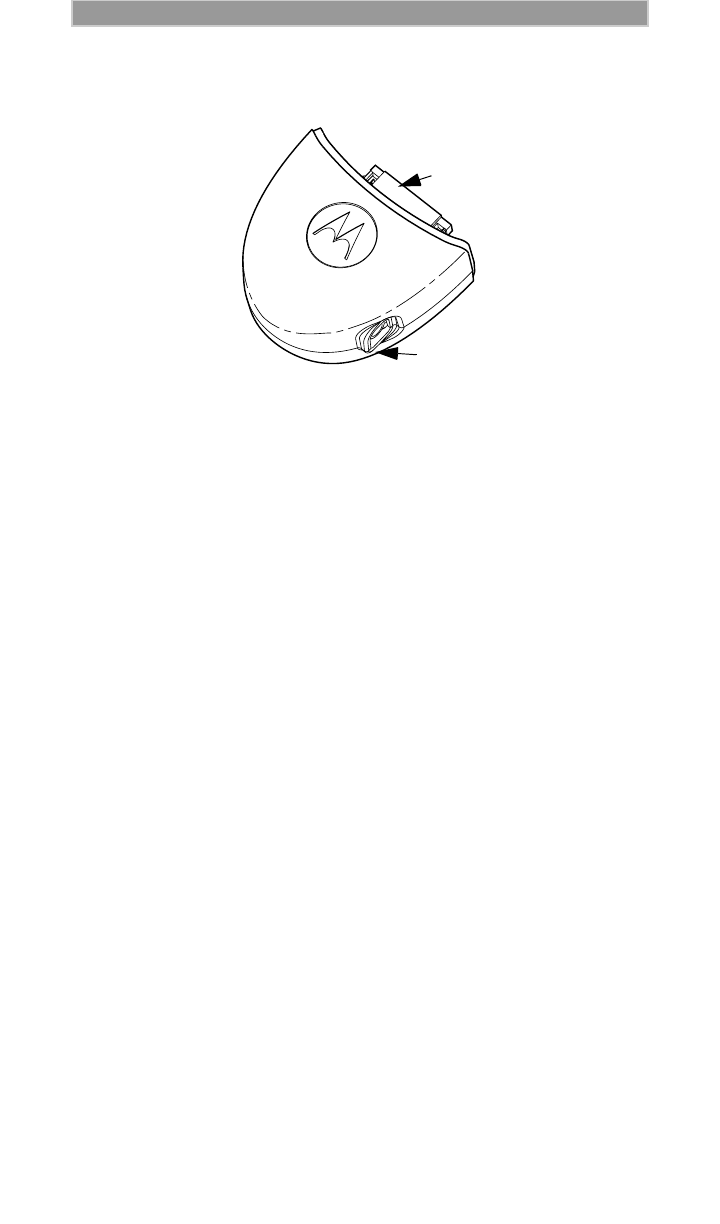
83
D R A F T Accessories
Installing the Audio Adapter
Figure 5. Installing the Audio Adapter
1. Hold the phone and the Audio Adapter facing you so that you see
the Motorola logo.
2. Insert the Audio Adapter’s connector into the i1000-A receptacle.
You will hear the connector snap into place.
Attaching/Detaching the Earpiece Microphone
1. Insert the 2.5mm plug of the earpiece microphone cord into the
jack of the Audio Adapter.
2. Pull on the plug, not the cord, to remove the earpiece microphone.
Removing the Audio Adapter
1. Press the button on the front of the Audio Adapter. The front
displays the Motorola logo on the button.
2. Pull the Audio Adapter from the i1000-A.
Audio Adapter
Connector
2.5mm jack

84
D R A F T
SAFETY AND GENERAL
INFORMATION
Radio Operation
Your phone’s radio component contains a transmitter and a receiver.
When it is ON, it receives, and also transmits, radio frequency (RF)
energy.
The radio operates in the frequency range of 806MHz to 866MHz, and
employs digital modulation techniques. When you use your radio, the
system handling your call controls the power level at which your radio
transmits. The power level may typically vary over a range from 0.01 of
a watt to 0.6 of a watt.
Exposure to Radio Frequency Energy
In August 1996 the Federal Communications Commission (FCC) of the
United States with its action in Report and Order FCC 96-326 adopted
an updated safety standard for human exposure to radio frequency
electromagnetic energy emitted by FCC regulated transmitters. Those
guidelines are consistent with the safety standards previously set by
both U.S. and international standards bodies, as follows.
• American National Standards Institute (C95.1 - 1992)
• National Council on Radiation Protection and Measurements
(NCRP-1986)
• International Commission on Non-Ionizing
Radiation Protection (ICNRP- 1986)
The design of your Motorola two-way radio complies with the FCC
guidelines and these standards.
To assure optimal radio performance and to ensure that exposure to RF
energy is within the guidelines in the above standards, follow the
operating procedures outlined below.
Efficient Radio Operation
The following practices will enable your radio to operate at the lowest
power level, consistent with satisfactory call quality.
When placing or receiving a phone call, or using the group or private
call functions with the Group/Private Speaker OFF (muted speaker icon
visible in the display), hold the radio as you would a telephone.
Speak directly into the mouthpiece and position the antenna up and over
your shoulder.
IMPORTANT!
Read this information before using your phone.
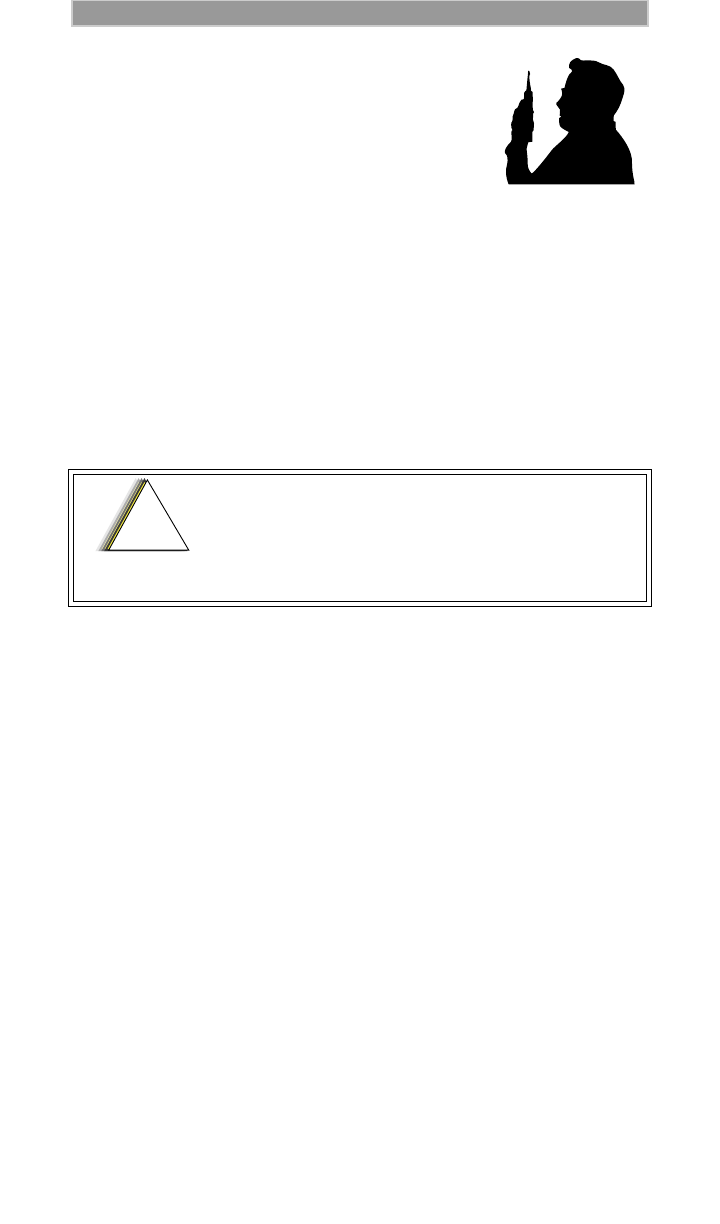
85
D R A F T Safety and General Information
When using the radio as a traditional two-way radio
while making group or private calls with the Group/
Private Speaker ON (no speaker icon visible in the
display), hold the radio in a vertical position with the
microphone one to two inches away from the lips.
For body-worn operation, the antenna should be kept
at least one inch from the body when transmitting.
DO NOT hold the antenna when the radio is “IN USE”.
Holding the antenna affects call quality and may cause the radio to
operate at a higher power level than needed.
Antenna Considerations
Use only the supplied or an approved antenna. Unauthorized antennas,
modifications, or attachments could impair call quality, damage the
radio, or result in violation of ICNRP or FCC regulations.
Interference to Medical and Personal Electronic Devices
Most electronic equipment is shielded from RF energy. However, RF
energy from the radio transmitter may affect inadequately shielded
electronic equipment.
Consult the manufacturer(s) of your medical and personal electronic
device(s) (for example, a pacemaker or a hearing aid) to determine if
they are adequately shielded from external RF energy. Your physician
may be able to assist you in obtaining this information.
Turn your radio OFF in health care facilities when any regulations
posted in the area instruct you to do so. Hospitals and health care
facilities may be using equipment that is sensitive to external RF energy.
Interference to Other Electronic Devices
RF energy may affect improperly or inadequately shielded electronic
operating and entertainment systems in motor vehicles. Check with the
manufacturer or representative to determine if these systems are
adequately shielded from external RF energy. Also check with the
manufacturer of any equipment that has been added to the vehicle.
Do not use the radio with a damaged antenna. If
a damaged antenna comes into contact with the
skin, a minor burn may result.
!
C a u t i o n
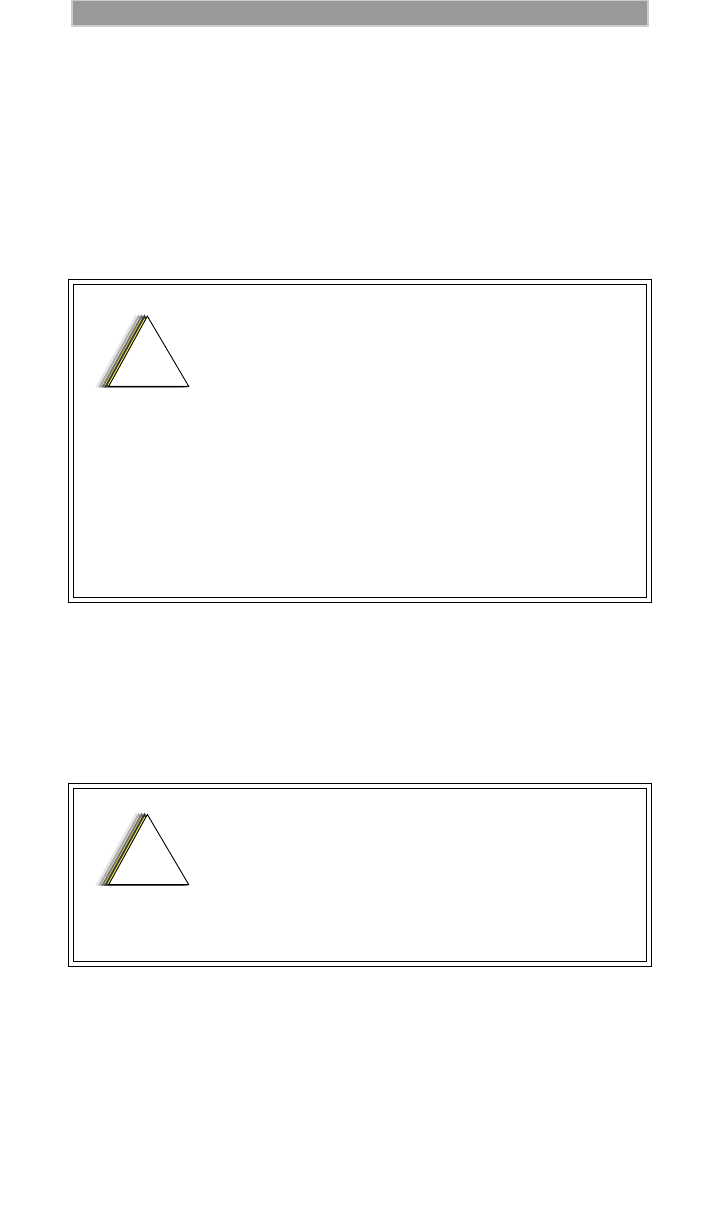
86
Safety and General Information D R A F T
Turn your radio OFF before boarding any aircraft to prevent possible
interference to aircraft systems. Regulations of the United States Federal
Aviation Administration prohibit use when the plane is in the air and
require that you have permission from a crew member to use your radio
while the plane is on the ground.
Batteries
Use While Driving
Check the laws and regulations on the use of telephones in the areas
where you drive. Always obey them.
All batteries can cause property damage, injury
or burns if a conductive material such as
jewelry, keys, or beaded chains touch the
exposed terminals. The material may complete
an electrical circuit (short circuit) and become
quite hot.
Exercise care in handling any charged battery,
particularly when placing it inside your pocket,
purse or other container.
To protect against a short circuit when the
battery is detached from the phone, keep the
battery in the insulated protective case
provided with the battery.
When using the phone while driving, please:
• Give full attention to driving and to the road.
• Use hands-free operation, if available.
• Pull off the road and park before making or
answering a call if driving conditions so
require.
!
C a u t i o n
!
C a u t i o n
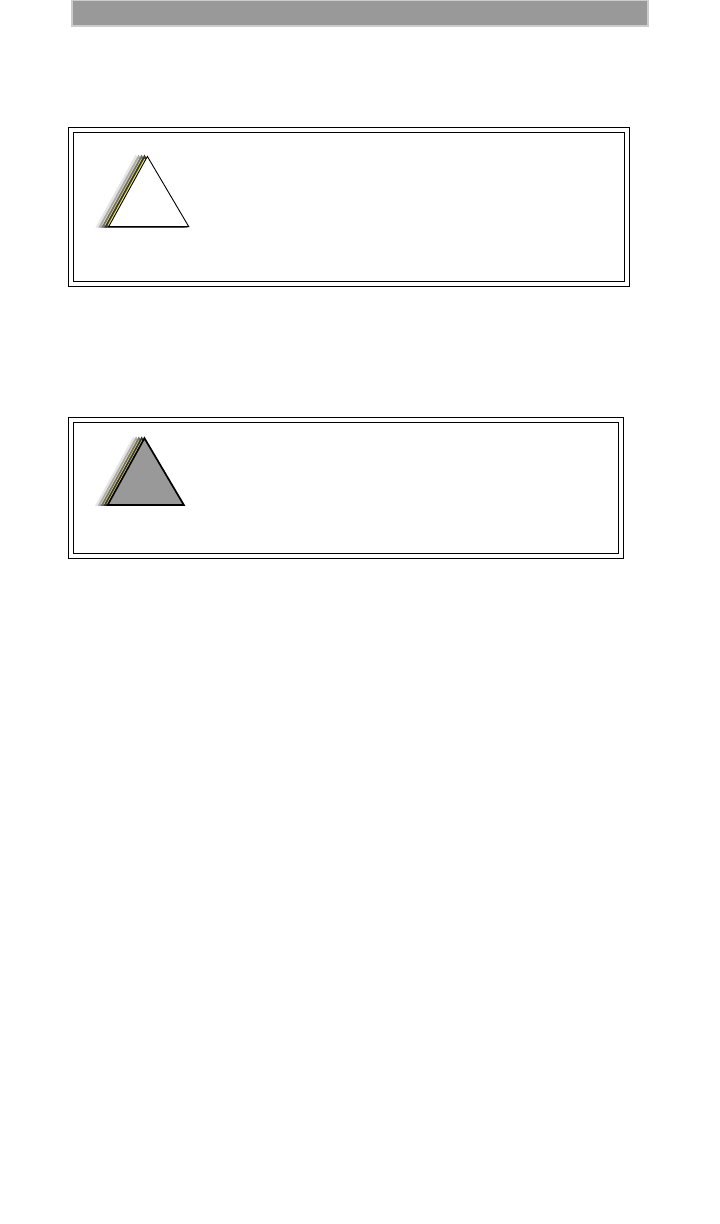
87
D R A F T Safety and General Information
Children
Blasting Areas and Explosives
Do not allow children to play with your radio.
It is not a toy. Children could hurt themselves
or others (by poking themselves or others in the
eye with the antenna, for example). Children
also could damage the radio or make calls that
increase your service bills.
DO NOT operate your radio near electric
blasting caps, or in a blasting area, to avoid the
possiblity of triggering an explosion. Turn your
radio OFF when in a “blasting area” or in areas
where such requirements are posted.
!
C a u t i o n
!
W A R N I N G
!
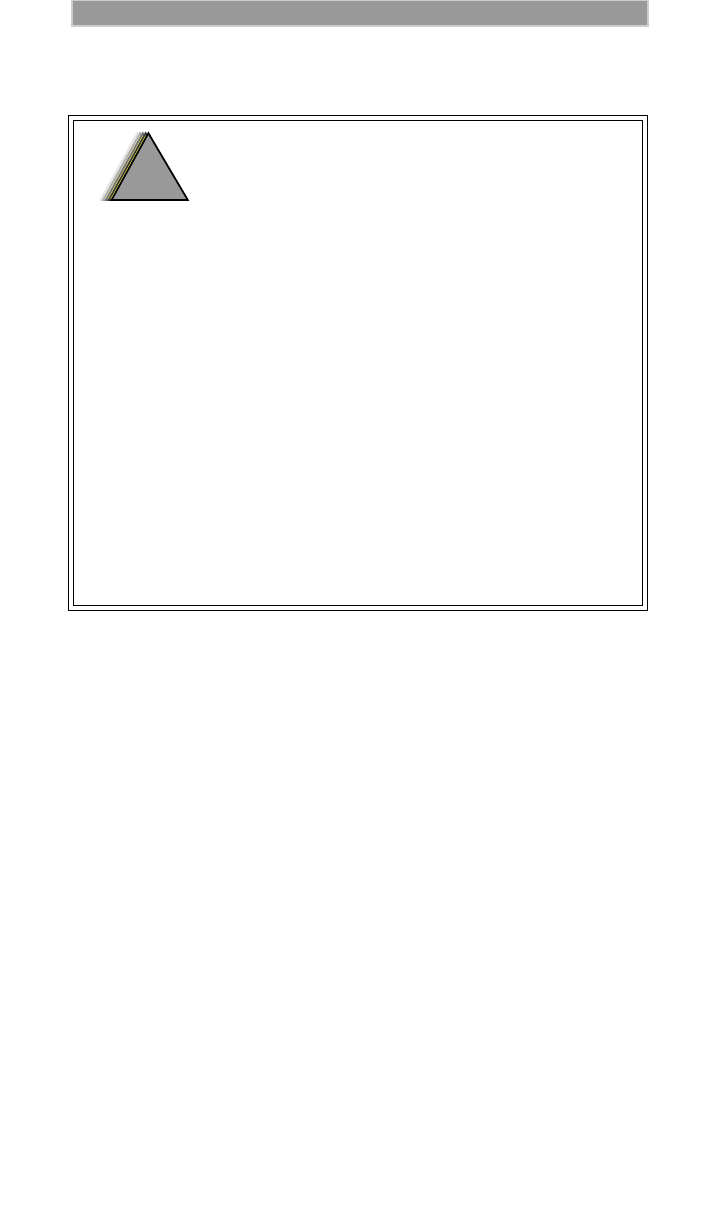
88
Safety and General Information D R A F T
Potentially Explosive Atmospheres
Turn your radio OFF and do not replace the
battery when in any area with a potentially
explosive atmosphere. It is rare, but your radio or
its accessories could generate sparks which might
trigger an explosion.
Areas with a potentially explosive atmosphere are
often, but not always, clearly marked. They
include areas such as below deck on boats, fuel or
chemical transfer or storage facilities, and areas
where the air contains chemicals or particles, such
as grain, dust, or metal powders.
Do not transport or store flammable gas, liquid, or
exposives in the compartment of your vehicle that
contains your radio or accessories.
Vehicles powered by liquefied petroleum gas
(such as propane or butane) must comply with the
National Fire Protection Standard (NFPA-58). For
a copy of this standard, contact the National Fire
Protection Association, One Batterymarch Park,
Quincy, MA 02269, Attn: Publications Sales
Division.
!
W A R N I N G
!
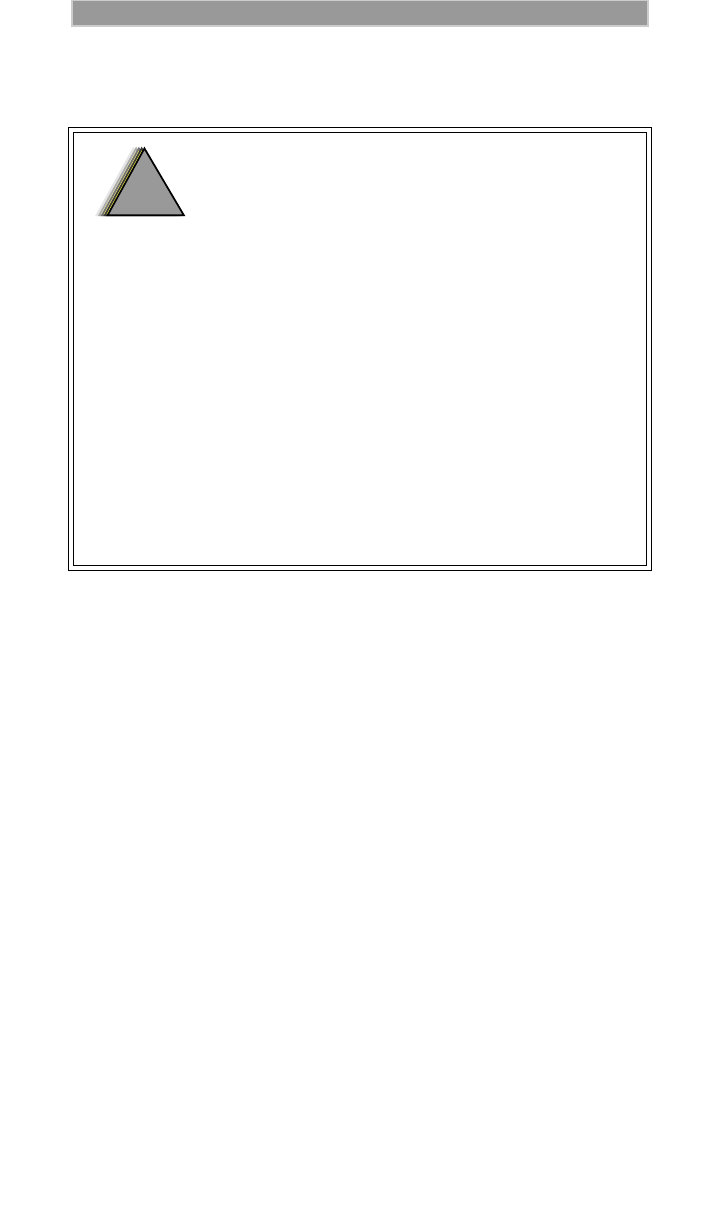
89
D R A F T Safety and General Information
For Vehicles Equipped with an Air Bag
Cleaning Instructions
Clean the external surfaces with a damp cloth, using a mild solution of
dishwashing detergent and water. Some household cleaners may contain
chemicals that could seriously damage the unit. Avoid the use of any
petroleum-based solvent cleaners. Also, avoid applying liquids directly
on the phone unit.
For Further Information
For more detailed information on Motorola’s iDEN products, please see
the iDEN web site located at
http://www.mot.com/LMPS/iDEN
Or, you may call 1-800-453-0920 in the U.S. or Canada. Outside the
U.S. or Canada, call 1-954-723-4910.
Be sure to carry the Pocket Card with you for quick reference.
An air bag inflates with great force. DO NOT
place objects, including communication
equipment, in the area over the air bag or in the
air bag deployment area. If the communication
equipment is improperly installed and the air
bag inflates, this could cause serious injury.
Installation of vehicle communication
equipment should be performed by a
professional installer/technician qualified in the
requirements for such installations. An air
bag’s size, shape, and deployment area can
vary by vehicle make, model, and front
compartment configuration (for example,
bench seat vs. bucket seats).
Contact the vehicle manufacturer’s corporate
headquarters, if necessary, for specific air bag
information for the vehicle make, model, and
front compartment configuration involved in
your communication equipment installation.
!
W A R N I N G
!

90
Safety and General Information D R A F T
Owner’s Information
Mobile Equipment Identifier (IMEI)
_____________________________
Own Phone Number
_____________________________
Own Private Number
Date Purchased
Dealer Telephone Number
_______________________
Customer Service Number
_______________________
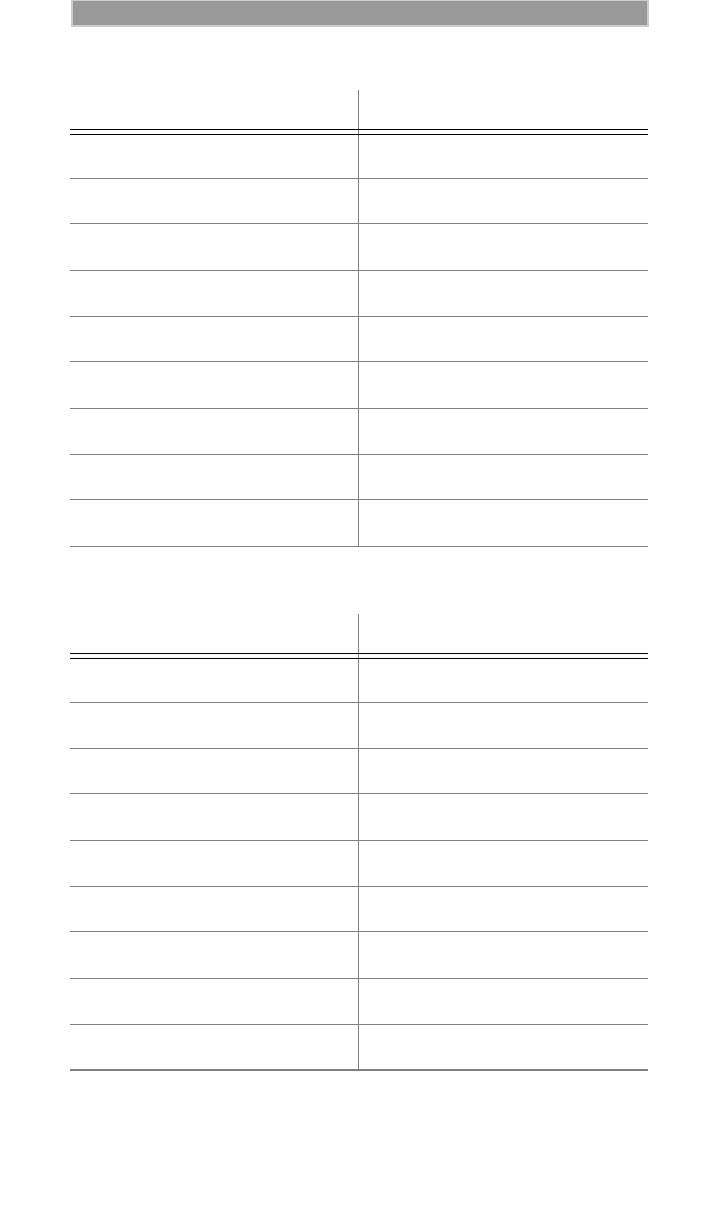
91
D R A F T Safety and General Information
Private Number Directory
Talkgroup Directory
Private Number Name
1
2
3
4
5
6
7
8
9
Talkgroup Number Name
1
2
3
4
5
6
7
8
9

92
D R A F T

93
Safety and General Information D R A F T